

Uncover the Best Time to Visit Tahiti (Pros & Cons Per Month)
“I’m going to Tahiti!” It’s a phrase that everyone hopes to say at least once in their lifetime (hopefully more!) Oddly enough, it can be a little confusing because although ‘Tahiti’ can refer to the entire destination of multiple neighboring islands, it is only 1 of 118 islands that make up the 5 distinct island groups of French Polynesia.
Geography lesson aside, one of the top things to consider when visiting this tropical destination is the best time to visit Tahiti. Honestly? Anytime at all!
Ok, ok, there’s a little more to it than that, of course. But, if you’re not picky and just want to get yourself there to enjoy the crystal clear turquoise lagoons and overwater bungalows, then it’s just a matter of booking a ticket.
However, for those that may be a bit more discerning, there are better times and worse times to go depending on your goals and desires for your adventure.
Don’t leave home without: Lonely Planet Tahiti & French Polynesia Travel Guide
Discover the Best Time to Visit Tahiti
Table of Contents
First things first! Taking a vacation of any kind is an investment of your hard-earned money and the last thing you want is to risk a disruption or cancellation that ends with you losing that investment. This is one of the reasons we never leave home without travel insurance.
This is especially important if you’re planning a trip to Tahiti during the rainy season. Strong Pacific storms can crop up really fast causing trip delays, cancellations, or if you’re already there, the need to leave sooner than you planned.
There are a lot of options out there for insurance, but we use and stand by Allianz Travel Insurance . Full disclosure, we receive financial compensation as ambassadors for their company.

That said, we’ve been purchasing plans through them for the past 7 years and they have never let us down. Canceled flights, delayed flights, lost luggage, rental car damage, and a global pandemic, they’ve been there for us.
When people are standing at the counter fighting with the airlines over hotels or new flights, we don’t stress anymore because we know that we will be reimbursed for any out-of-pocket expenses caused by the delay.
We always renew their AllTrips Premier annual plan that covers all of our trips over a 12-month period. If you take more than 2 trips a year, it’s worth considering an annual plan.
For single trips, we recommend looking at their OneTrip Prime or OneTrip Premier plans.
Dry Season in Tahiti
Despite the overall air and sea temperatures only ever fluctuating by a minimal few degrees, there are two distinct seasons in Tahiti: wet and dry (with minimal shoulder seasons on either side.
The dry season is between June and October.
Despite its name though, just because the dry season gets less rain than its counterpart, does not necessarily mean it gets no rain. Keep this in mind as you plan your trip – there’s a reason why a place like Tahiti stays so lush and green year-round!
June in Tahiti

June marks the beginning of winter for Tahiti. That means the tradewinds begin to blow, bringing a calm wind across the islands that gently banish what remains of the oppressive humidity of summer. Wind-dependent sports become super popular around this time.
Average Temperature (high/low): 84F/70.2F
Average Rainfall: 2.4 inches
Pros of visiting in June:
- Overall temperatures and rainfall drop significantly; air quality will be near its best
- Perfect time to try out kitesurfing or charter a sailboat
- If it does rain, it’s usually a quick affair
Cons of visiting in June:
- High season rates make everything more expensive
- Summer crowds from around the world begin to arrive
- For those who were hoping for an adult-exclusive vacay – there can be lots of children out with their families
July in Tahiti

Just like for those accustomed to the Northern Hemisphere’s seasons, it’s actually the middle of summer for most of the foreign countries that frequently have patrons going to French Polynesia. As such, tourist density becomes quite heavy during July.
This will be the priciest, most busy month to visit. It is best advised to avoid this month if you can. Especially if you’re planning a special event of any kind or are looking for a quiet vacation.
Average Temperature (high/low): 82.9F/69.4F
Pros of visiting in July:
- Sunshine is a commodity that is not in short supply
- If you’re lucky, you may see whales out past the barrier reefs
- The underwater citizens of Tahiti’s lagoons tend to be their most abundant
Cons of Visiting in July:
- Everyone and their uncle will be swimming at the local beaches
- The first choice for accommodations and rental equipment is hard to come by
August in Tahiti

If you want to be in Tahiti in what is arguably the most popular month, you’ll need to plan and book your adventure sometimes a year in advance. August is the peak of the high season.
We generally advise people to consider shoulder season travel to avoid crowds and high prices. I think these days we could also say to keep your sanity.
Average Temperature (high/low): 82.8F/68.9F
Average Rainfall: 1.9 inches
Pros of visiting in August:
- Humpback whales migrate to Tahitian waters in earnest, which makes viewing them an easy and wonderful spectacle
- The weather is as perfect as you can get in the South Pacific
- Rain is practically nonexistent
Cons of visiting in August:
- You won’t have anything to yourself near the water
- Everything is at its most expensive
- There can be many families with children out and about
September in Tahiti
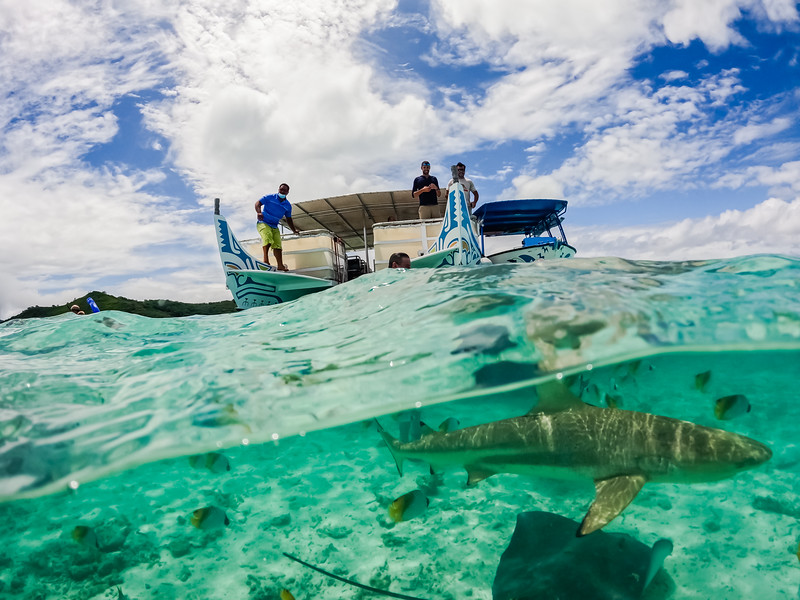
September shares many similarities to August, with perhaps fewer other people that you’ll need to fight tooth-and-claw for rooms, tours, restaurants, and space. It can be a nice alternative to full shoulder season and your chances of fewer rain storms are good.
Average Temperature (high/low): 83.5F/69.8F
Average Rainfall: 1.8 inches
Pros of visiting in September:
- At times, the weather can be even better than August’s
- Accommodation is a little easier to come by compared to previous months.
Cons of visiting in September:
- It’s still the high season, with all its expectations
- Plane flight costs will remain high
If you take one thing away from this Tahiti post book a Private Arrival Transfer: Papeete Airport to Hotel or Cruise Port or a Shared Departure Transfer: Hotel or Cruise Port to Tahiti International Airport
October in Tahiti

October is the final month of the dry season! This means it’s also still peak season, though it’s beginning to not be and you can luck out on some cheaper rates near the end of the month.
It’s also you last chance to catch the more reliably dry weather, as the average rainfall doubles from October to November.
Average Temperature (high/low): 84.4F/71.4F
Average Rainfall: 3.6 inches
Pros of visiting in October:
- Consecutive bright, sunny days remain an abundant commodity
- As the month nears its end, the population of tourists begins to dwindle
Cons of visiting in October:
- Rainy days begin to noticeably increase in frequency towards the end of the month
Rainy Season in Tahiti
Opposite of the dry season is the rainy season which covers the months between November and April.
The rainy season will receive much more precipitation than the dry by a factor of almost 4 to 5 depending on the year. If you’re in search of clear skies, then you’ll want to think hard about visiting during the rainy season.
November in Tahiti

November marks the start of spring in the islands. With that comes some cheaper accommodation, thinning crowds, and relatively stable weather. That said, the average rainfall does double from October, especially as you get later in the month.
One thing to consider is that late November, coinciding with the USA Thanksgiving holiday week, is a high-season spike for Tahiti. Accommodation will be sold out well in advance, along with day tours, and be quite expensive. There will also be an influx of people, so keep that in mind.
Average Temperature (high/low): 85.1F/72.7F
Average Rainfall: 6.4 inches
Pros to visiting in November:
- Accommodation rates are strikingly lower post-peak season
- The Hawaiki Nui Va’a, a one-of-a-kind canoe race, takes place in November
- Most of the crowds have left by this time
Cons of visiting in November:
- Precipitation amount almost doubles from October
- Humidity begins to noticeably increase as well
- There will be some unusual crowds following the Hawaiki Nui Va’a
December in Tahiti

Rainfall doubles in volume yet again from the previous month, and often rivals January for the wettest month on the calendar. You’ve been warned!
That said, there is a beauty to visiting a place when few others do. If lounging in the sun isn’t your thing, this can be a beautiful time of year to scuba dive and take in the lush beauty of the islands.
Average Temperature (high/low): 85.6F/73.6F
Average Rainfall: 12.5 inches
Pros of visiting in December:
- Low season means low rates!
- All the rain brings some of the best flower blooms to Tahiti
- On the nice days you have, you’ll probably have them to yourself
Cons of visiting in December:
- Mosquitoes enmasse seemingly appear out of thin air
- Thick humidity can be a bit uncomfortable at times
- When it rains, it can be for days on end
January in Tahiti

January is often the rainiest month on the calendar throughout the year. And with it comes plenty of humidity and mosquitoes. Depending on the length of your trip, plan on the weather being a bit unpredictable.
Average Temperature (high/low): 86.5F/74.1F
Average Rainfall: 12.4 inches
Pros of visiting in January:
- Hot weather will make all water sports and activities much more enjoyable
- Being in the middle of the low season (summer) means great rates all around
- You’ll often have many popular spots all to yourself
Cons of visiting in January:
- It can rain for days on end
- Storms will ruin most attempts to be outside for extended periods of time
- Poor weather can make it colder than expected – bring a jacket!
Our recommended top resorts in Papeete, French Polynesia:
- Le Tahiti by Pearl Resorts
- Hilton Hotel Tahiti
- Te Moana Tahiti Resort
- Hotel Tahiti Nui
February in Tahiti

The second month of the year brings with it just a little less water pouring from the skies, the tiniest bit more heat, and another reason for most of the tourists to stay away.
That said, this is off season travel at its finest! You’ll grab some amazing deals both on air and hotels.
Average Temperature (high/low): 86.9F/74.3F
Average Rainfall: 9.2 inches
Pros of visiting in February:
- The deals of the off season keep coming, with discounts often available at premium resorts
- Plane flights can be their cheapest at this time
- When the sun shines, which it will often, you won’t be fighting for room in the lagoons
Cons of visiting in February:
- Skies can be covered with clouds, even when rain isn’t present
- The outer seas can get a bit choppy with storms passing by
- Humidity remains very high
Our recommended top resorts in Moorea:
- Hilton Moorea Lagoon Resort & Spa
- Sofitel Kia Ora Moorea Beach Resort
- Manava Beach Resort & Spa Moorea
- InterContinental Tahiti Resort & Spa
March in Tahiti
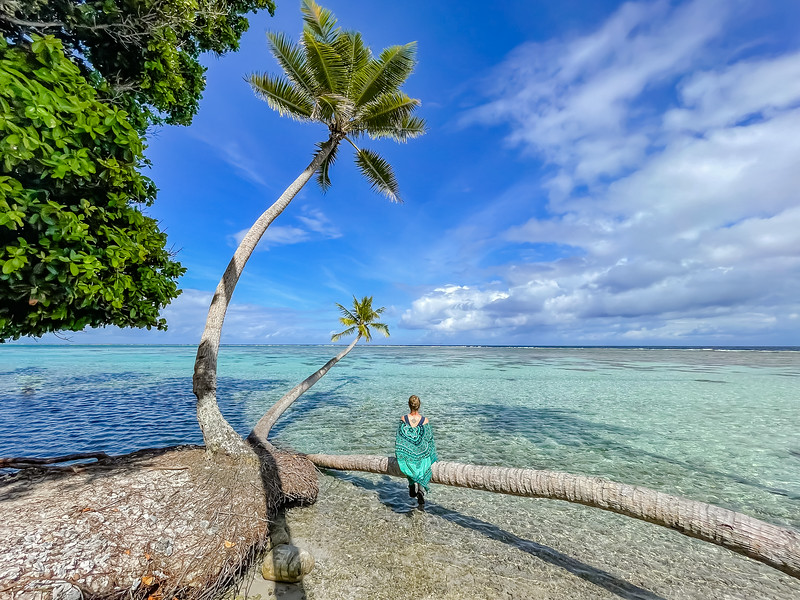
Though it’s the tail end of summer, it’s the hottest month of the year for Tahiti. Thankfully, the humidity begins to abate as we head into the first shoulder season of the year.
Average Temperature (high/low): 87.4F/74.3F
Average Rainfall: 7.7 inches
Pros of visiting in March:
- Tahiti’s lagoons are at their most warm and relaxing at this time
- You can score one of those overwater bungalows for super inexpensive.
Cons of visiting in March:
- The UV index will be strong – wear extra sunscreen and reapply frequently! You will burn very easily.
- Hot weather brings unpredictable storms that can hit randomly
Our recommended top resorts in Bora Bora:
- The St. Regis Bora Bora Resort
- Four Seasons Resort Bora Bora
- InterContinental Le Moana Bora Bora
- Conrad Bora Bora Nui
- Le Meridien Bora Bora
April in Tahiti

This is the beginning of the shoulder season just after summer; in between wet and dry seasons. April can be one of the best times to visit Tahiti overall!
Average Temperature (high/low): 87.1F/73.9F
Average Rainfall: 5.5 inches
Pros of visiting in April:
- Humidity and rainfall are much less than the summer
- Everything is still cheaper, while the weather reaches its ideal conditions
- Big crowds have yet to arrive
- Tahiti Pearl Regatta festivals begin
Cons of visiting in April:
- Heavy rainfall can still be expected at times
- You’ll be sharing spots with other shoulder season fanatics
Our recommended top resorts in the Society Islands:
- Ninamu Resort
- Le Taha’a by Pearl Resorts
May in Tahiti

May falls into the shoulder season as well, and it has many of the same reasons as to why it’s the best time to visit Tahiti. One could argue that it’s perhaps even better than April!
Average Temperature (high/low): 85.8F/72.5F
Pros of visiting in May:
- The weather is as close to the ideal dry season as possible without having the same crowds
- Depending on the year, the Tahiti Pearl Regatta may also begin around this time
- Humidity becomes practically nonexistent
Cons of visiting in May:
- Rain is uncommon, but if it does decide to pour it’ll likely be intense
This article is sponsored by Allianz Travel Insurance. As ambassadors we receive financial compensation. However, all opinions, stories, advice, and insane love for the Islands of Tahiti are 100% ours, as always.
You might also like:
- Ultimate Trip to Tahiti with Windstar Cruises
- 38 Beach Essentials: The Ultimate Beach Packing List
- How to Choose the Best Dry Bag for Your Next Adventure
- The Best Travel Towels for your Next Trip
Did you like this story? Share it!
Travel planning resources, about lina stock.
Lina is an award-winning photographer and writer that has been exploring the world since 2001. She has traveled to 100 countries on all 7 continents. Member: SATW, NATJA, ATTA, ITWA
Leave a Comment Cancel reply


- Big Island of Hawaii
- Cook Islands
- French Polynesia
- New Zealand
- Tahiti, Moorea, Bora Bora
- My Favorites
- My Specials
- Best honeymoon destinations
- Best time of year to visit Tahiti
- Best time of year to visit Fiji
- Best time of year to visit the Cook Islands
- Best time of year to visit St. Lucia
- Best time of year to visit Vietnam
- Best time of year to visit Thailand
- Best time of year to visit Bali
- Best time of year to visit New Zealand
- Best time of year to visit Australia
- Best time of year to visit the Seychelles
- Best time of year to visit the Maldives
- Best Jamaica all-inclusive resorts
- Best Fiji all-inclusive resorts
- Overwater bungalows
- Detailed visa requirements by country
- Tahiti, Bora Bora, and Moorea Destination Weddings
- Fiji Destination Weddings
- Best resorts in Tahiti, Bora Bora, and Moorea
- Best resorts in the Dominican Republic
- Best resorts in Fiji
- Best resorts in Jamaica
- Best resorts in Kenya
- Best resorts in New Zealand
- Best resorts in the Seychelles
- Hawaii - Maui
- Hawaii - Kauai
- Hawaii - Big Island
- Hawaii - Oahu
- Dominican Republic
- Puerto Rico
- St. Kitts and Nevis
- St. Maarten
- Turks and Caicos
- Virgin Islands - US
- Virgin Islands - British
- Bali & Indonesia
- Ask an Expert
Testimonials from Joni's clients:
Best time of year to visit tahiti, moorea, and bora bora.
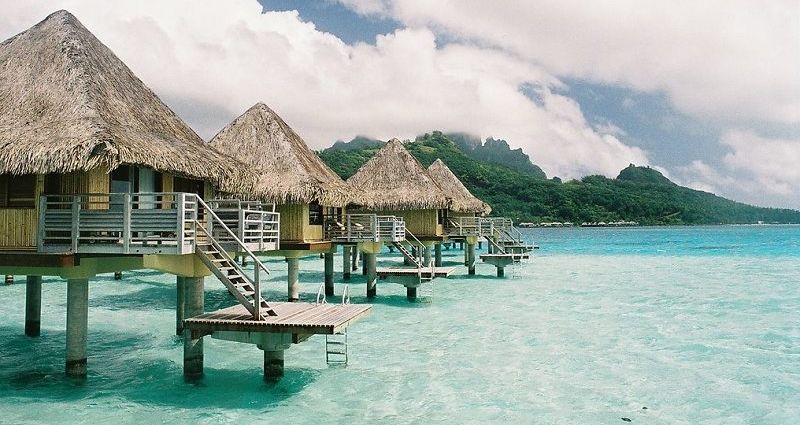
- Compare islands
- Expert's tips
- Travel specials
- See all resorts in French Polynesia
- Temperature by month
- Precipitation by month
- High/low season air & hotel prices
- Overwater vs. beach vs. garden bungalows
- Scuba diving & snorkeling
- Things to see & do
- Polynesian shows
- Map of all resorts & islands
Tahiti Vacation Planning
Which islands should we visit in french polynesia.
Having been to Tahiti Nui, Bora Bora, and Moorea myself, I'd say that it's not just about the resorts, or even the islands themselves. You need to consider how you're going to get there from the main international airport in Papeete, on the main island of Tahiti Nui. Bora Bora, Le Taha'a, and the Tuamoto Atolls are going to require a plane flight, which adds significantly to your cost AND to the travel time. Moorea, on the other hand, is close enough that you can hop on a ferry boat from Papeete right after your plane lands, and be at your resort within about an hour, and at very little expense. And while the main island of Tahiti Nui has some nice resorts, the scenery and the resorts themselves generally don't really compare to Moorea, Bora Bora, etc. Most people stay on the main island at most a night or two, then head to one of the outer islands.
Tahiti Nui : 4 resorts ; very few overwater bungalows; shopping , food carts , Paul Gauguin Museum .
Bora Bora : 10 resorts , iconic views of Mount Otemanu , wide range of styles of accommodations, tons of overwater bungalows, privacy, luxury.
Moorea : 8 resorts , overwater bungalows, good range of accommodations from moderate to luxury, family-friendly, dolphins , golf , ATV tours , zip lines , swimming with sharks and sting rays , tons of activities on land and water, easy to get to.
Tuamotu Atolls : 4 resorts , moderate accommodations, a bucket-list quality scuba diving destination , remote and secluded.
Other islands : 6 resorts including Le Taha'a and The Brando , ranging from economy to ultra-luxury accommodations; overwater bungalows, privacy and seclusion.
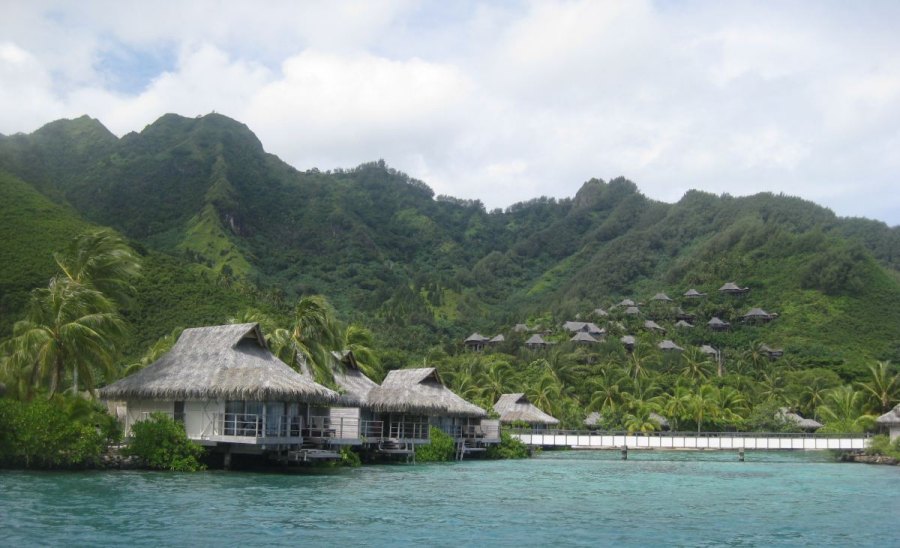
If you're trying to decide where to stay, we've got over 600 high-resolution photos, about 50 videos, and even some virtual tours. Or talk to one of our Tahiti experts, who know the islands and the resorts like the back of their hand :-).
Click here to see all resorts in French Polynesia.

Expert's Tips:
I've personally visited almost every resort on Tahiti Nui, Moorea, and Bora Bora, and seen all of the room categories, so that I have a first-hand understanding of the differences between them, as this helps match resorts to each of our clients. While I certainly have my own favorites, I believe that the notion of a "best" resort in Tahiti is a silly marketing ploy: best FOR WHOM? It depends so much on what the client likes.
- Interior style: some are very Polynesian, some have a very classic feel with antique furniture, some are opulent/luxurious with exotic woods and marble, some feel very modern and chic
- The grounds: some are totally flat, others have interesting hills and jungle bits, some feel very open, and others you wander through twisting paths in the jungle (one of them has a spa set in the middle of a lily pond!)
- Pools: some are more elaborate than others, with creative shapes, different views, etc.; some of the bungalows even have private plunge pools
- Dining: I never had a bad meal in French Polynesia--not even a mediocre one, but some resorts have a more expansive menu than others
- Condition: the photos from the hotels will always make the hotel looks its best--some of them have seen some wear and tear since the pictures were taken, so it's helpful to talk to someone who's seen the properties recently
- Location: you can snorkel from the deck of your overwater bungalow at any of the resorts--the difference is what you'll see underwater, as there's a radical difference in what's on the bottom near the bungalows from one property to the next
- Views: on Bora Bora, you'll get views of the spectacular Mount Otemanu from every resort--but, not necessarily every bungalow, as there are a few resorts on the main island (Otemanu is behind you then), and one resort with bungalows on the opposite side of the motu, facing west, away from Otemanu. On Moorea, you're not generally going to get views of the mountains from your bungalow, but you will on the walk back to the shore. And Huahine and Le Taha'a are their own little worlds.
See our complete list of travel specials for Tahiti, Moorea, Bora Bora, and the Tuamoto Atolls.
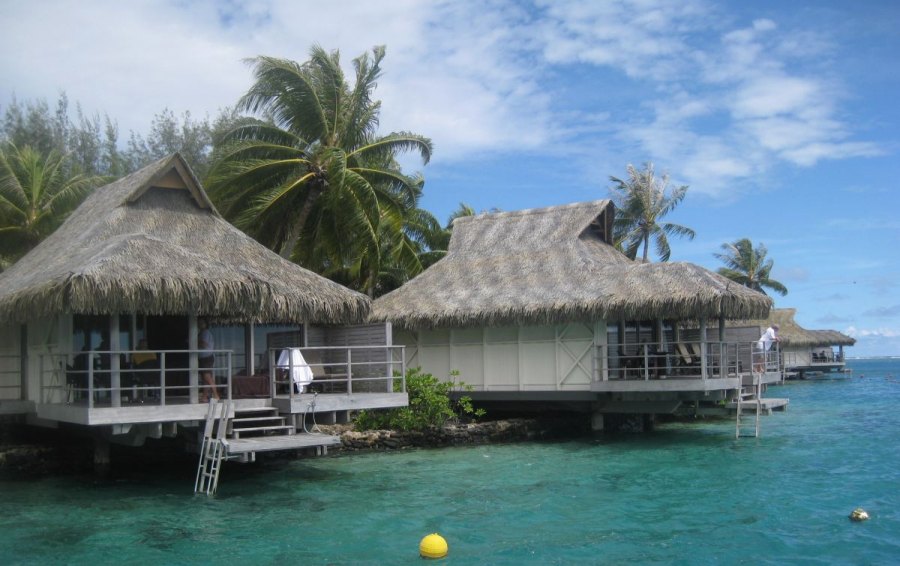
Tahiti Weather: High Season vs. Low Season
During the high season, temperatures are milder and there are fewer rain showers with less humidity, and better visibility for divers. However, there are two or three times as many tourists per resort – thus increasing demand for sightseeing activities and prices for lodging and events.
Throughout the slower months, the costs are lower and there is less competition for spots on popular tours. Additionally, just because it’s off season it doesn’t mean the sun completely disappears! Tahiti still receives warming rays, although consecutive days of rain are possible.
Tahiti Weather: Average temperatures
The annual average temperature in Tahiti is 80 degrees Fahrenheit, or 27 degrees Celsius. Closer to the equator, the Tuamotu Atolls and the Marquesas Islands have slightly warmer temperatures than Tahiti, Moorea and Bora Bora.
During the high season, or winter, temperatures range from 70-82 degrees Fahrenheit, while in the low season, summer, temperatures vary from 70-85 degrees Fahrenheit. December and January average 12 inches of rain a month, however, Tahiti receives more hours of sun than Hawaii during the comparable humid season. Less than three inches of rain fall per month from June through September.
Tahiti Weather: Average precipitation

Tahiti Weather: Storms in French Polynesia
The humid season in Tahiti is from November to April. Occasionally, strong storms do develop. There actually ARE NO hurricanes in Tahiti (or anywhere in the South Pacific ). That's not as good news as you might think--it's because they're not called hurricanes in that region, they're called cyclones :-). But there is good news: cyclones are rare, with the last powerful one occurring in 1982. You can get some pretty dramatic heavy rainfall however--during the humid season, it will often rain hard enough at night to wake you up.
High and Low Season Prices in Tahiti
The overall high season in French Polynesia extends from May 1 to October 31, although some resorts change their prices starting April 1. The low season covers November 1 to April 30.
Tahiti wholesalers--and the resorts themselves--are very active when it comes to special offers, discounts, extra inclusions, etc., and so these kinds of deals are changing all the time. Most websites aren't able to keep those specials up to date--there's just too many of them, and they're changing and expiring all the time. At Visual Itineraries, we track the offers from the major wholesalers daily , and our specialists have tools that show them all the available offers and discounts for a particular property instantly.
Typical airfares from LAX
Airfares vary by season, but also day of week, and are definitely affected by holidays. The chart above shows the typical minimum and maximum fares for a economy class ticket from Los Angeles (LAX) to Papeete (PPT), by month.

Overwater bungalow, or garden bungalow, or beach bungalow?
The garden and beach bungalows are typically going to be less of a trek from the main points in the resort.
- 4 nights in Moorea + 3 nights in Bora Bora
- 3 nights in Moorea + 3 nights in Bora Bora + 3 nights in the Tuamotu Atolls
Often, people will combine these with 1 night in Papeete, so you have a chance to see Marche Papeete, Les Roulottes, explore the town, shop for pearls, etc.

Water temperature, scuba diving and surfing in Tahiti
You'll find a terrific, detailed description of dive sites on the various islands in our friend and world super-traveler David Stanley's Tahiti guidebook (now in its 7th edition). Surfing is most abundant in Tahiti and Moorea and up-and-coming in Huahine. May is a popular surfing month, due to the Billabong Pro competition at Teahupoo in Tahiti.
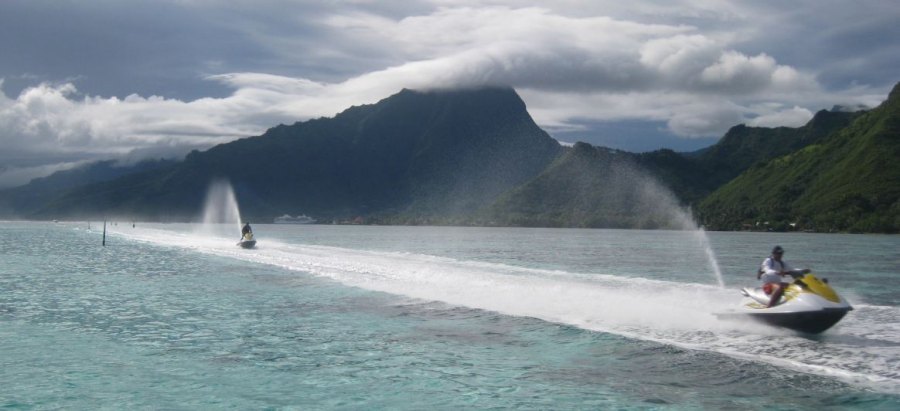
Things to see and do in Tahiti
Heiva is a month-long cultural celebration that comes from the Tahitian word for festival (hei = to assemble, va = community places). Given the various different activities and parties that stretch for the month of July, Heiva is a good enough reason in itself to visit Tahiti during the summer season! There is plenty to see and do, from the traditional dance and music performances, singing competitions, colorful dinners, and sports competitions (like javelin throwing, stone lifting, coconut tree climbing, and outrigger canoe racing).
Heiva has evolved over the years from its rich history--Tahiti's traditional dance, Ori Tahiti , was once central to Polynesian culture, but these centuries-old festivities were banned by 19th century Christian missionaries for being too sensual and erotic. In 1819, recent Christian convert King Pomare II officially forbade the practice; dancing became a clandestine activity in danger of being lost as both an art form and a key to Tahiti's past. But the festivities returned in 1881 as a result of France's victory over its long struggles with England and Protestant missionaries; the Polynesians adopted France's Bastille Day (July 14; the French equivalent of America's Independence Day) and had the opportunity to revive some of its dancing in celebration. Ori Tahiti finally saw a greater comeback in 1956 when a Papeete high school teacher, Madeleine Moua, led the true comeback of the traditional dance by forming the dance troupe Heiva Tahiti. Now, Ori Tahiti has resumed its rightful, vibrant place in French Polynesian culture, and the entire month of July is used for Heiva and its celebration of this history.
Fire Dancers
- We'll talk with you to find out what you're looking for, what you like/don't like, etc.
- We'll use our first-hand knowledge of the destination to pick out a handful of resorts we think you'd like
- We'll create a custom mini website for you, with photos, videos, maps, etc. of the resorts we are recommending
- We'll follow up with you to help you make your decision
- We'll go to work with our suppliers to get you the best deal available on what you've decided on.
Map of all Resorts in French Polynesia
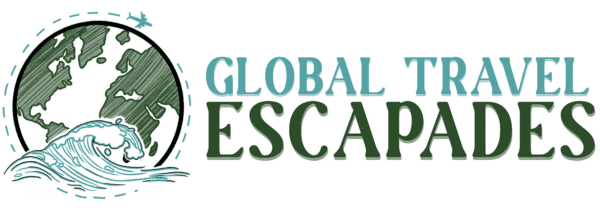
A Helpful Guide for the Best Time to Visit Tahiti in 2024
If you’re ready to plan your dream vacation to beautiful French Polynesia, you may be wondering when is the best time to visit Tahiti . As someone who loves traveling to French Polynesia, I can provide you with specific insight on what to expect depending on the time of year you go!
After all, the island paradise is in the southern hemisphere, so the weather situation may be different from what you’re used to if you’re coming from somewhere in the northern hemisphere! So, here’s what to know along with 12 specific recommendations for visiting!
Best Time to Visit Tahiti (2024)
Alright, I’ll cut to the chase, the absolute best to visit Tahiti is August or September! This is when the temperatures are most pleasant, and the days are still long.
Not to mention, there are the fewest rainy days in these months. So, you’ll be able to enjoy all that Tahiti has to offer without having to worry too much about it raining on your parade!

But, the best reason to visit Tahiti during this time of year is that you’ll be able to capitalize on the once-in-a-lifetime opportunity to swim with whales!
That’s right — from mid-July to mid-November , thousands of humpback whales migrate through the waters around French Polynesia. During this migration period, visitors and locals can swim alongside these majestic creatures and observe them up close!
Thus, if you have a bit of flexibility in your schedule, I highly recommend visiting Tahiti and anywhere in French Polynesia during August or September.
🐋 To learn more about swimming with whales in French Polynesia, you can head to this part of the post !
What If I Can’t Visit During August or September?
However, I know the fairy godmother of schedule-making isn’t always kind, so you may not be free to visit during this time of the year. If that’s you — don’t worry! You’ll still have an unforgettable trip to French Polynesia!
And to help you pick when the next best time to visit Tahiti, let’s take a closer look at the different seasons in French Polynesia!
Best Time to Visit Tahiti by Season
Similar to the tropical island of Guam , French Polynesia experiences two distinct weather seasons throughout the year: a rainy season and a dry season. This is due to the island’s proximity to the equator, which causes the amount of rain to vary more than the actual temperature changes. Below, I’ll explain what you can expect during each season as well as which season is better for visiting Tahiti.
Tahiti Dry Season
Tahiti’s dry season runs from May to October. The dry season is characterized by cooler temperatures with average low temperatures around the mid-60s °F and average highs in the mid to high 70s °F.
And as you likely gathered from the name, you can expect fewer rainy days. Usually, there are only 3 – 5 rain days per month, which not only means more sunny days but also less humidity! 😅
However, I think the biggest perk is that less rain and wind make for improved underwater visibility. Snorkeling is one of the most popular excursions available around Tahiti , and clear days make a whole world of difference in seeing the diverse underwater life up close!
✅ 🐠 Check out this awesome snorkeling tour around Tahiti!
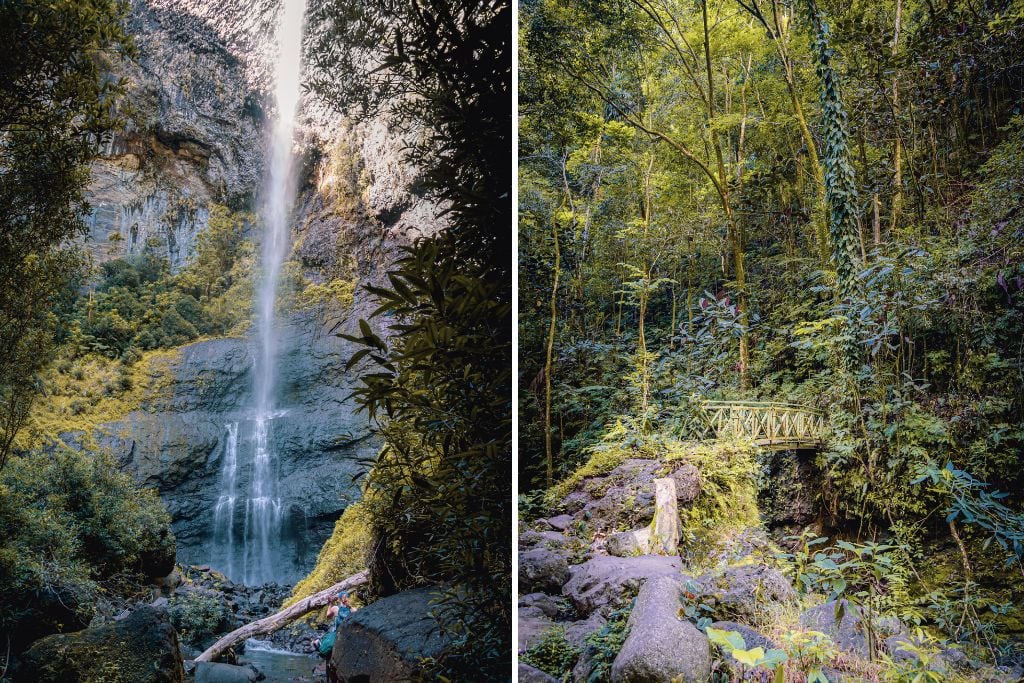
Moreover, if you’re keen on hiking around Tahiti , the dry season is a great time of year to do so. You won’t have to worry about the rivers flooding or trekking through lots of mud. Likewise, the dry season is a good time to visit if you’re looking to surf around Tahiti . The waves are pretty clean, and you can find breaks suitable for every level of experience.
Overall, if you can make it happen, I would highly recommend visiting Tahiti during the dry season. You’ll experience more favorable weather, see clear blue waters, and have better conditions for exploring!
Tahiti Rainy Season
On the other side, there’s Tahiti’s rainy season, or wet season, which lasts from November to April . During this period, Tahiti experiences anywhere from 6 to 10 days of rain each month.
Temperatures are also warmer this time of the year compared to the dry season. As mentioned previously, French Polynesia is located in the southern hemisphere. Therefore, when the United States and Europe are experiencing cold winter weather, Tahiti is in peak summer.
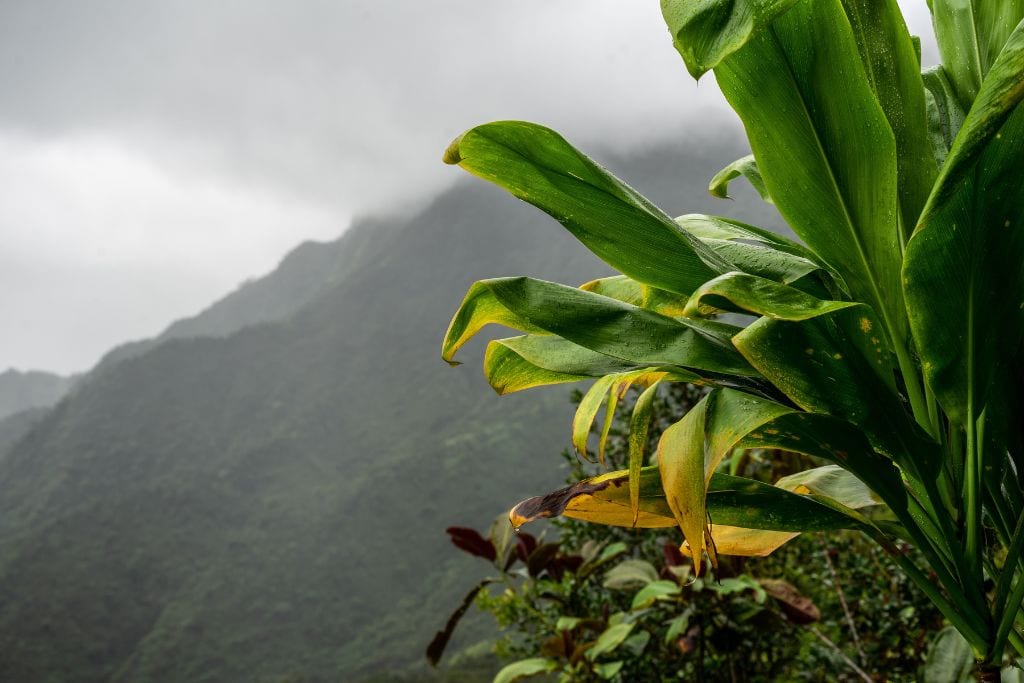
Around the islands, the average high temperatures are consistently in the 80s °F. Normally, temperatures in the 80°s aren’t that bad but add the high amount of humidity and it can be not so fun if you aren’t from San Diego or another place with lots of humidity.
The one thing I will say about visiting during the wet season is that the rainy days aren’t usually that bad. When I visited, the weather app would say there was an 80% chance of rain.
As you would expect, it rained. But, it would only rain for a little bit — as in half an hour to an hour. It would come and go throughout the day and rarely ever downpours the entire day.
So, if you’re visiting during the rainy season, you’ll probably experience a bit of rain in Tahiti. But, it’s not the end of the world! Just remember to bring an umbrella , waterproof jacket, or light raincoat with you!
✅☔️ Check out the compact umbrella I always carry with me when traveling!
Weather in Tahiti by Month
With its proximity to the equator, the temperature in French Polynesia stays relatively stable throughout the year. During the day, the average temperature in Tahiti ranges from 66° – 84°F (19 – 29°C), so it’s pretty warm without being too hot.
But, we know averages are just that — averages. For a better understanding of what to expect for your specific trip, here’s a breakdown of the weather in Tahiti by month.
Tahiti Weather January
January is the middle of the rainy season in Tahiti, so expect a lot of precipitation. With the excess rain, you can expect lots of cloudy days.
Temperatures are also pretty warm/hot since it’s also considered their summer season. Oftentimes, it’ll feel even warmer due to the humidity in the air.
And of course, with the hot ambient air temperatures comes warmer waters. Swimming in the ocean feels like you’re swimming through a hot tub at times.
- Average Temperature (high/low): 83°F / 70°F or 28°C / 21°C
- Average # of Rainy Days: at least 10 rainy days
- Recommendations: Bring lots of reef-safe sunscreen , sunglasses, a big hat, and a rain jacket!
🌊 PRO TIP: Oh! And you may want to consider bringing a rash guard if you plan on spending lots of time in the water. Even though the waters are very warm, it’s so easy to get sunburnt. Wearing a rash guard will not only provide some protection against harmful UV rays but also prevent unwanted sunburns!

Tahiti Weather February
February isn’t much better as it’s still peak rain season. You can expect rain practically every other day , if not more, but hey it adds to the adventure right!?
Temperatures are pretty much the same situation as in January. And again, with the warm ambient air, you can expect very humid days too.
So, if you don’t do well in these conditions, I wouldn’t recommend traveling to Tahiti during February. But, if it’s the only time you’re able to make your way to the islands, I’d say it’s still very much worth it!
- Average # of Rainy Days: 9 rainy days
- Recommendations: Make sure to book a hotel with air conditioning as opposed to an Airbnb or place on VRBO that doesn’t offer AC.
Tahiti Weather March
Of all the months, March is the hottest month of the year in Tahiti. And, unfortunately, temperatures often rise past the average high temperature.
That said, I wouldn’t say this is necessarily a bad thing or automatically deem March as the worst time to visit.
The reason is that March is when the number of rainy days starts to decrease. As such, you can expect a few more clear, sunny days and less humidity.
So if you’re a fan of hotter days or perhaps your spring break occurs in March, Tahiti is still worth visiting — at least I think so 🙂
- Average Temperature (high/low): 84°F / 71°F or 29°C / 22°C
- Average # of Rainy Days: 7 rainy days
- Recommendations: Bring adequate water with you everywhere you go. My friends and I usually stocked up on giant water bottles from Carrefour every two days.
Tahiti Weather April
April is the final month of the rainy season, so you can expect almost half as many rain days as January. But, I would still anticipate a rainy day or two during your stay.
Temperatures are slightly cooler than in March and resemble that of January and February. You can also count on lower humidity levels, which is a bonus.
But the best part about visiting in April is that it marks the start of the surf season in Tahiti. So, any fellow surfers, beginner or experienced, looking to catch some good waves will be in luck! That said, remember to always check local surf forecasts before heading out as conditions can change quickly.
- Average # of Rainy Days: 6 rainy days
- Recommendations: Even if you don’t surf, I highly recommend taking a taxi boat out to see the powerful Teahupo’o wave ! It’s one of the most famous surf breaks in the world and you often will see professional surfers out here!
✅ 🏄♀️ Check rates & availability for a boat tour of Teahupo’o
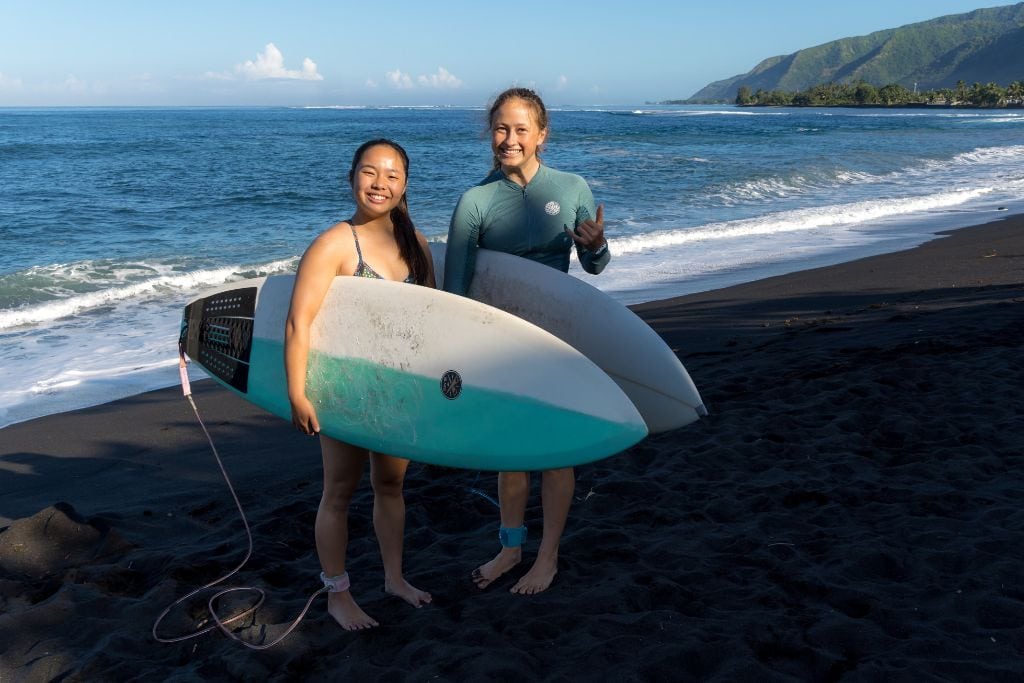
Tahiti Weather May
May is the start of the dry season in Tahiti so you can expect considerably less rain compared to the peak rainy season.
Temperatures also begin to dip a little… as in temperatures dip by a couple of degrees. But hey, anything helps in making it more comfortable!
These factors make May time of the year a good time to visit Tahiti if you want to avoid summer crowds from those living in the northern hemisphere.
- Average Temperature (high/low): 82°F / 69°F or 28°C / 21°C
- Average # of Rainy Days: 5 rainy days
- Recommendations: Begin looking for flights well in advance! My friends and I booked with StudentUniverse (see why I love this company ), which had amazing deals! I highly recommend checking this platform out, and you don’t need to be a student to create an account!
✅ ✈️ Sign up for StudentUniverse here to receive $20 off your first booking
Tahiti Weather June
During June, temperatures continue to drop, and humidity levels become much more bearable with the decrease in the rain.
Simultaneously, this is the start of the peak travel season for Tahiti and her islands as kids get out of school and families head out for vacation. But, it’s not just the good weather that gets people excited, it’s the surf conditions too!
June is the start of the winter season for Tahiti. This means surfers can expect excellent surf conditions on the island as a result of the strong winter swells from the Southern Ocean.
So, with all this considered, June is a great month to visit Tahiti. In fact, June is the month that my friends and I visited, and we loved it! The crowds weren’t too bad, and it was quite enjoyable.
- Average Temperature (high/low): 80°F / 67°F or 27°C / 19°C
- Average # of Rainy Days: 4 rainy days
- Recommendations: Book any fun excursions around the island, like this thrilling 4X4 tour , you want to do in advance. Also, know that your trip might be expensive since increased demand typically results in increased prices!
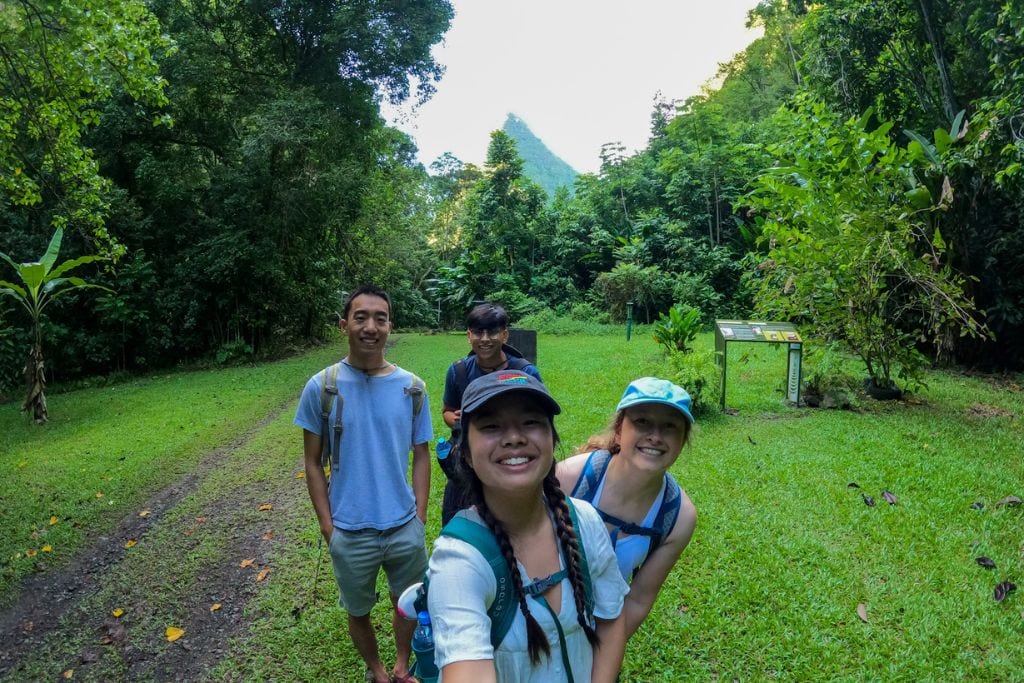
Tahiti Weather July
If the heat is not your friend and you’re more sensitive to hot and humid weather, July is a fantastic month to visit Tahiti. Temperatures continue to drop a tiny bit, which may not seem like much. But after visiting, I can confirm that any relief from the heat and humidity is always welcomed.
And again, with July being part of the driest period of the year, Tahiti has only a couple of rainy days. So you’ll be able to spend most, if not all, of your days exploring without fretting over whether it’ll rain or not.
- Average Temperature (high/low): 79°F / 66°F or 26°C / 19°C
- Average # of Rainy Days: 3 rainy days
- Recommendations: If you want to stay in a dreamy overwater bungalow on Tahiti, you can do so at the InterContinental Resort Tahiti . Just be sure to book as far out as you can because they are highly sought after and usually sell out.
Tahiti Weather August
August is considered the *coldest* month in Tahiti. If you’re like me, the words August and cold may seem odd together, but remember it’s Tahiti’s winter season!
Add lower humidity levels and long sunny days to the mix, and you’ve got the perfect recipe for a lovely vacation.
For this reason, August is a fabulous time to go snorkeling through the clear waters , soak up the sun on the stunning beaches, or chase after a waterfall or two!
And since I gotta look out for my fellow surfers, this is the time of year when you can see some monster waves! The iconic surf break, Teahupo’o, is known for generating perfect barrels this time of year.
During the 2022 season, Teahupoo had some of the biggest waves in a decade! These are called XXL days (see Youtube video) and the island will issue a code red. So if you’re a very experienced surfer looking to challenge yourself with huge swells, this is a great time to go!
- Average Temperature (high/low): 79°F / 65°F or 26°C / 18°C
- Recommendations: Even non-surfers can marvel at this force of nature by taking a taxi boat to the break ! When my friends and I were out there, we were joined by a little 3-year-old and her parents. The experience can only be described as otherworldly.

Tahiti Weather September
For those who have more flexible schedules, September is easily one of the best times to visit Tahiti.
It’s one of the driest months, and similar to August, there’s an abundance of sunny days, cool weather, and low humidity!
The difference between the two months is that most kids will be back in school. Thus, if you visit in September, you can enjoy the island without throngs of tourists.
Plus, prices for housing, excursions, and even flights tend to fall with a decrease in demand, which is Kristin-approved! 😅
But, the biggest perk of visiting during September is having the opportunity to swim alongside humpback whales ! Whale season technically lasts from mid-July to mid-November . However, I believe you have the best chances of seeing and swimming with them if you go during the middle of the season as opposed to the beginning or end of whale season.
- Recommendations: If you plan on swimming with these majestic giants , make your reservation as soon as you can! Spots are very limited, and it’s a once-in-a-lifetime experience you don’t want to miss out on!
✅ Check rates and availability for this highly-rated whale tour in Tahiti 🐋 Check rates and availability for this popular & affordable whale excursion in Moorea
Tahiti Weather October
October is the last month of the dry season in Tahiti, so you’ll start to see a little more rain. But, temperatures are still pretty pleasant with conditions similar to that of July, August, and September.
Not to mention, with 12 hours of daylight, you can bask in the long days filled with plenty of sunshine and outdoor adventures!
- Recommendations: If you have time in your schedule, I encourage you to explore Tahiti’s nearby sister island, Moorea! It’s super easy to visit on a day trip !
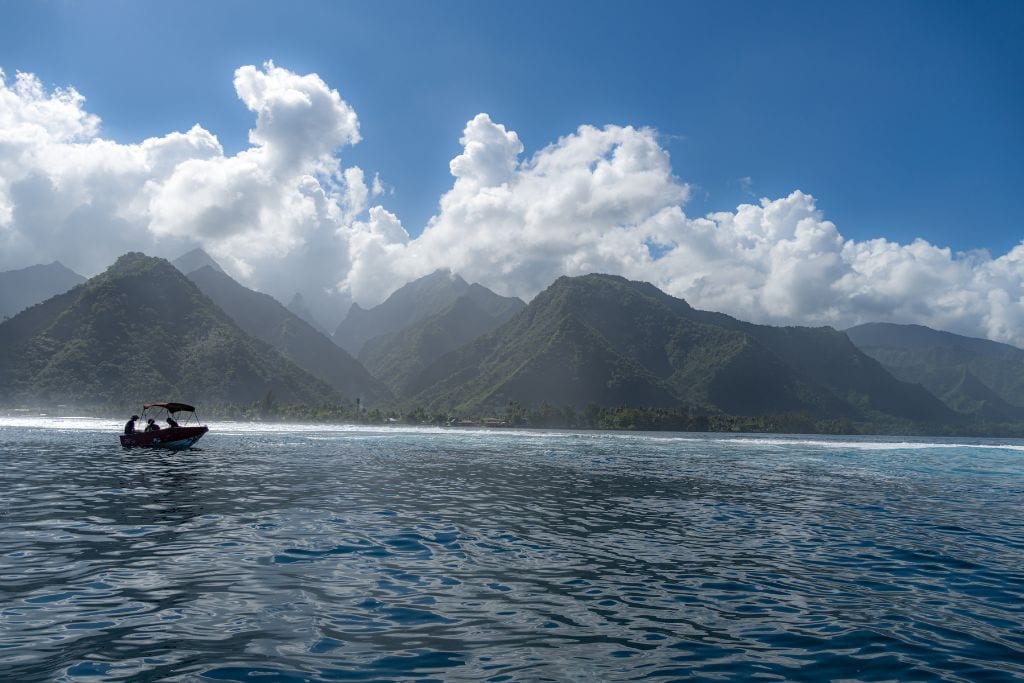
Tahiti Weather November
November is the start of the long summer season, so daytime temperatures usually climb to the high 80s. And unfortunately, you’re unlikely to find much reprieve at night.
In addition to this, November marks the beginning of the wet season. Thus, you can expect to see a significant increase in both rainfall and humidity.
So, if you’re looking for a dry and sunny vacation, November might not be the best month to visit Tahiti.
However, if you can get past the heat and rain, there are still plenty of activities to do on the island! For example, my friends and I thoroughly enjoyed wandering through the Museum of Tahiti and The Islands and exploring the Papeete Market.
- Average Temperature (high/low): 81°F / 69°F or 27°C / 21°C
- Recommendations: If you have limited time, check out this excellent and affordable tour of the island ! The guides are awesome and eliminate the stress of navigating the roads!
Tahiti Weather December
Just like January, December is one of the wettest months of the year, with the island often receiving more than 12 inches of rain.
In addition, you can expect temperatures to continue to rise from November since it becomes the peak summer season in French Polynesia. For these reasons, you may want to think twice about visiting during this time of the year if you can’t stand the heat and rain.
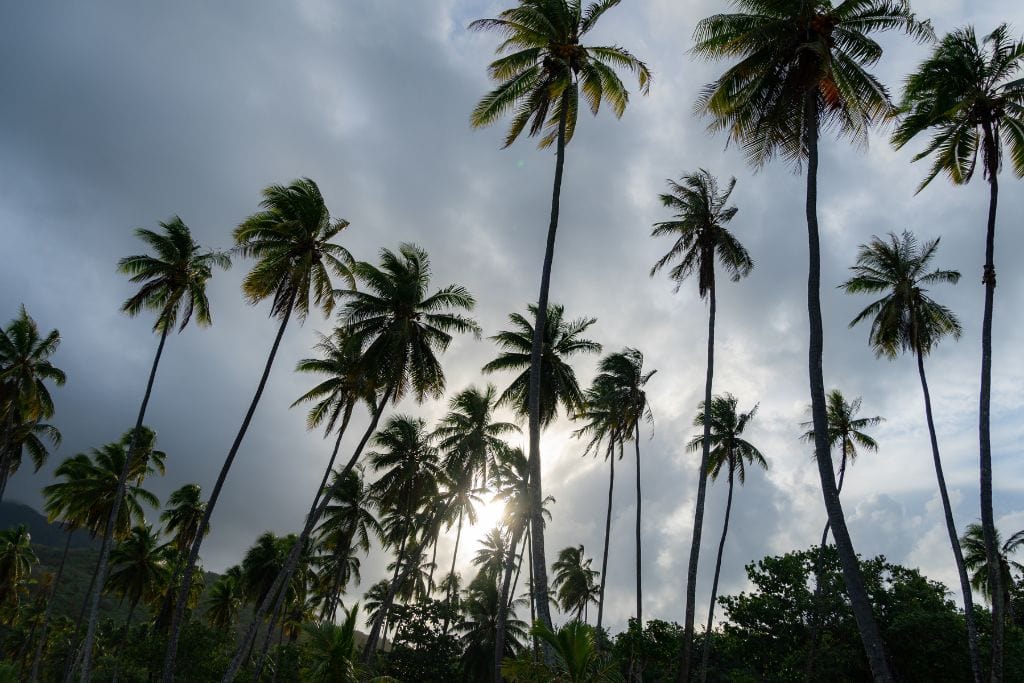
All this said, if you’re okay with lots of rain and looking to trade a white winter wonderland for sandy beaches, Tahiti is likely worth visiting. One of the silver linings is celebrating Christmas and New Year in Tahiti!
You can usually find some holiday celebrations happening around Tahiti. For instance, the markets will put up Christmas decorations and fireworks go off on New Year’s Eve. Plus, you’ll find parties happening around bars and restaurants – so it can be fun!
- Average Temperature (high/low): 82°F / 70°F or 28°C / 21°C
- Average # of Rainy Days: 10 rainy days
- Recommendations: Similar to January, make sure to bring a good umbrella and rain jacket with you everywhere you go!
What Is the Best Month to Visit Tahiti?
Considering everything mentioned above, I think the best month to visit Tahiti is September. Not only is this when the weather is at its best, but it’s the middle of whale season!
From mid-July to mid-November, humpback whales migrate from Antarctic waters to calve or give birth to their young. And while you should try to see them no matter what if you’re visiting during whale season… there are typically lower chances if you go at the beginning or end of the season (July or November). Thus, I recommend swimming with them in August, September, or October if you can!
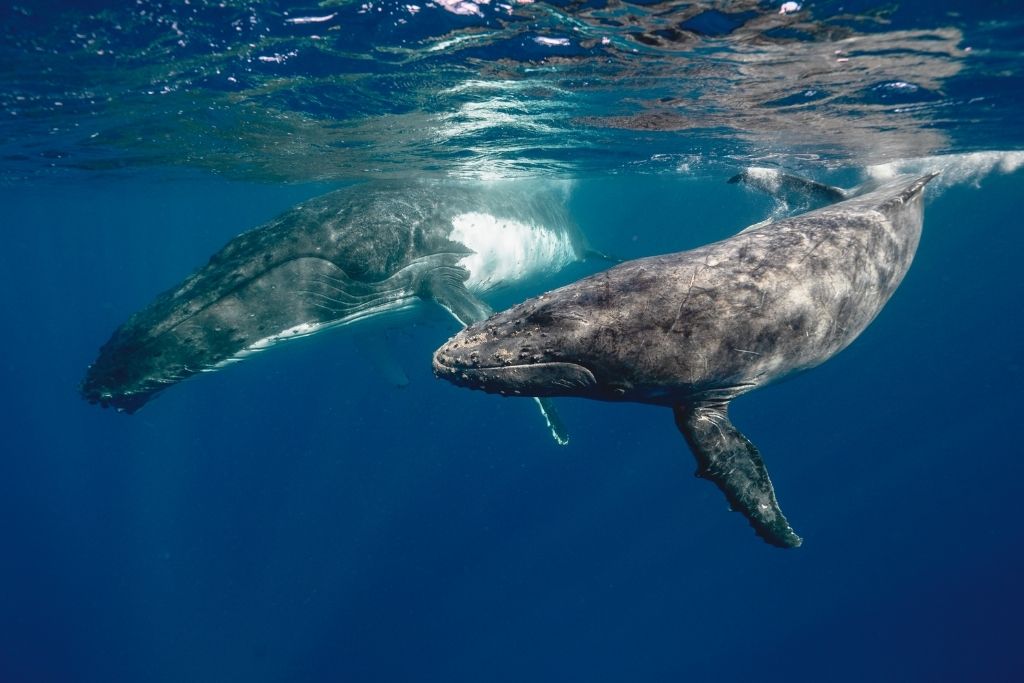
Swimming with Whales in French Polynesia
Furthermore, a fun fact is that French Polynesia is also one of the only places in the world where you can swim with whales respectfully in their natural habitat. The tour companies that head the whale watching and swimming excursions always make sure that the whales are not disturbed, and everything is done in as safe of a manner as possible. And while there’s technically no guarantee you’ll see whales, with them being wild creatures, these tour companies truly do offer you the best chance of spotting them. So, if you’re looking for the experience of a lifetime that will probably end up being the highlight of your trip, here are the two tours I highly recommend!
Cheapest Time to Visit Tahiti
If you’re traveling to French Polynesia on a budget , the cheapest time to visit Tahiti is during the wet season (November – April). This is because the weather is less favorable with the excess rain, so there are usually fewer tourists.
As you would expect, less tourist demand leads to lower costs on flights, hotels, and other accommodations.
However, if you want to know a specific month, I would argue that November is probably the cheapest month. Most people tend to go home to celebrate Thanksgiving, and the breaks aren’t usually long enough for a getaway to French Polynesia. Thus, I would expect the least amount of tourists to travel to French Polynesia in November.
That said, I believe that you can find some great deals during December and January as well. This is the peak rainy season in Tahiti. So, even though some people may visit to celebrate the holidays or retreat from the cold, hotels and tours still run sales to attract more visitors.
Worst Time to Visit Tahiti
Honestly, if you ask me, I don’t think there’s a ✨ worst ✨ time to visit Tahiti… A trip to a remote island, where you can unplug from the external pressures of life and just live in the moment sounds pretty dang good — ✨ anytime ✨.
But, if I had to pick, I would say that the worst time to visit Tahiti is March.
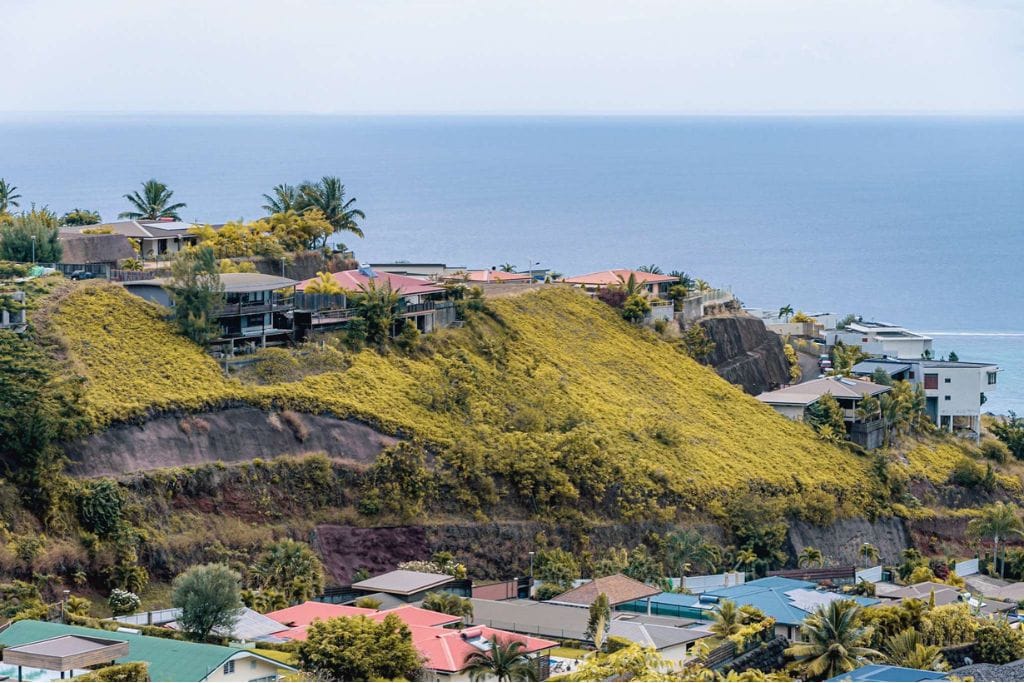
Although March isn’t the wettest time of the year, it’s the hottest time of the year. And, there’s still a fair bit of tropical showers, which equates to humidity.
As someone who once lived in San Diego and is used to 110°F summers, this isn’t a huge problem for me. But, I know these conditions can be a major deal-breaker for others. So, I’d say March is probably the least enticing.
Where to Stay in Tahiti
If you need recommendations on where to stay, here are a few places worth checking out!
Low-Cost Stays
- Fare D’hôtes Tutehau — A local homestay | ⭐️ 9.2 / 10
- Manaeva Lodge — Another stay with a local family | ⭐️ 9.5 / 10
Mid-Range Stays
- Te Moana Tahiti Resort — A beautiful waterfront resort | ⭐️ 8.2 / 10
- Vanira Lodge — The best housing located near Teahupo’o | ⭐️ 9.2 / 10
Fancy Stays
- This is where you’ll find the overwater bungalows
- Hilton Hotel Tahiti — The ultimate package in terms of amenities & service | ⭐️ 9.0 / 10
Best Time to Visit Tahiti: FAQ
The high season in Tahiti is June – August as this is summer break for anyone in the Northern Hemisphere.
There is an off-season in Tahiti. It’s pretty much anything outside of the months of June-August. But, if you want to avoid the heavy rainfall AND crowds, you should visit either in April – May or September – October!
The period where there’s the greatest risk of hurricanes forming in Tahiti is December – April. But, I wouldn’t be too worried as hurricanes rarely occur in French Polynesia. The last major hurricane or cyclone, as they call them in the southern hemisphere, occurred in 2010 . When they happen, the islands issue a red alert, all roads are closed, and everyone is instructed to find shelter.
If you are solely visiting Tahiti, I would recommend a good 5 days! This will give you lots of time to explore the island, embark on fun excursions, and even time to take the ferry to Moorea. However, if you want to do some immersive excursions in Moorea , Bora Bora, and/or other places, then I’d try to aim for at least 3 days on each island.
Tahiti is in the same time zone as Hawaii, which is GMT-10. So if you’re normally PST like me, Tahiti is 3 hours behind us.
The best way to get to Tahiti is to fly directly into the Fa’a’ā International Airport in Tahiti’s capital, Papeete! There are direct flights from LAX and SFO. From there, you can easily fly to the smaller French Polynesia islands if needed.
Wrap-Up: Best Time to Visit Tahiti (2024)
French Polynesia is a tropical paradise located in the central South Pacific Ocean. This string of islands near the equator is known for its year-round tropical climate that consists of warm temperatures, lots of sunshine, and plenty of rain! Depending on when you visit, rain in Tahiti will vary significantly. But, the overall best time to visit Tahiti is September. Not only will you be able to avoid the busy tourist season and have the least amount of rain to deal with but also you’ll have the amazing opportunity to swim alongside whales ! And, observing these ethereal creatures up close is one of the most magical experiences you can embark on! So, if you ask me, the best time to visit Tahiti and immerse yourself in the local culture of French Polynesia is September!

📸 Appreciation Note: You’ll notice that a few of the pictures in this post were taken by my friend good friend Sol! You can see more of his amazing photography here !
Tahiti Packing List
Get your free checklist for what to bring to tahiti 🌴.
Need some help packing for your vacation in Tahiti? Here’s my handy checklist for what to bring to Tahiti ! You’ll also receive weekly updates on what’s happening in the travel world!
I won’t send you spam. Unsubscribe at any time.

Save This Post for Later!
Kristin is the founder of Global Travel Escapades, a blog dedicated to helping travelers explore beautiful destinations and planning their wildest travel dreams. She has explored 30 countries and is on a mission to visit 50 by age 30. Along the way, she has lived in places like sunny San Diego and the vibrant French capital! Ultimately, Kristin hopes her passion for adventure, delicious food, and all things F1 & tennis inspires others to plan their next travel escapade!

- Austral Islands
- Marquesas Islands
- Easter Island
Best time to visit Tahiti: Choose your dates!
What is the best time to visit Tahiti? The Queen Island of French Polynesia can be visited at any time of the year. Its tropical climate guarantees warm temperatures between 25 and 32°C and the water temperature remains constant. Tahiti has a dry season and a wet season. Depending on the period, the price of a trip to Tahiti may decrease or increase.
November to April: Not the Best Time to Visit Tahiti
Expect frequent rain showers.
The southern summer is characterized by heavy and long rain showers. This period starts in mid-November and has a peak of rainfall in January . Despite some sunny spells, it can also rain all day. Tahiti is a high island with the highest mountain ranges in the archipelago. The peaks usually catch the clouds and when it is not raining, the sky often remains cloudy. Nevertheless, there will always be something to do when it rains in Tahiti .
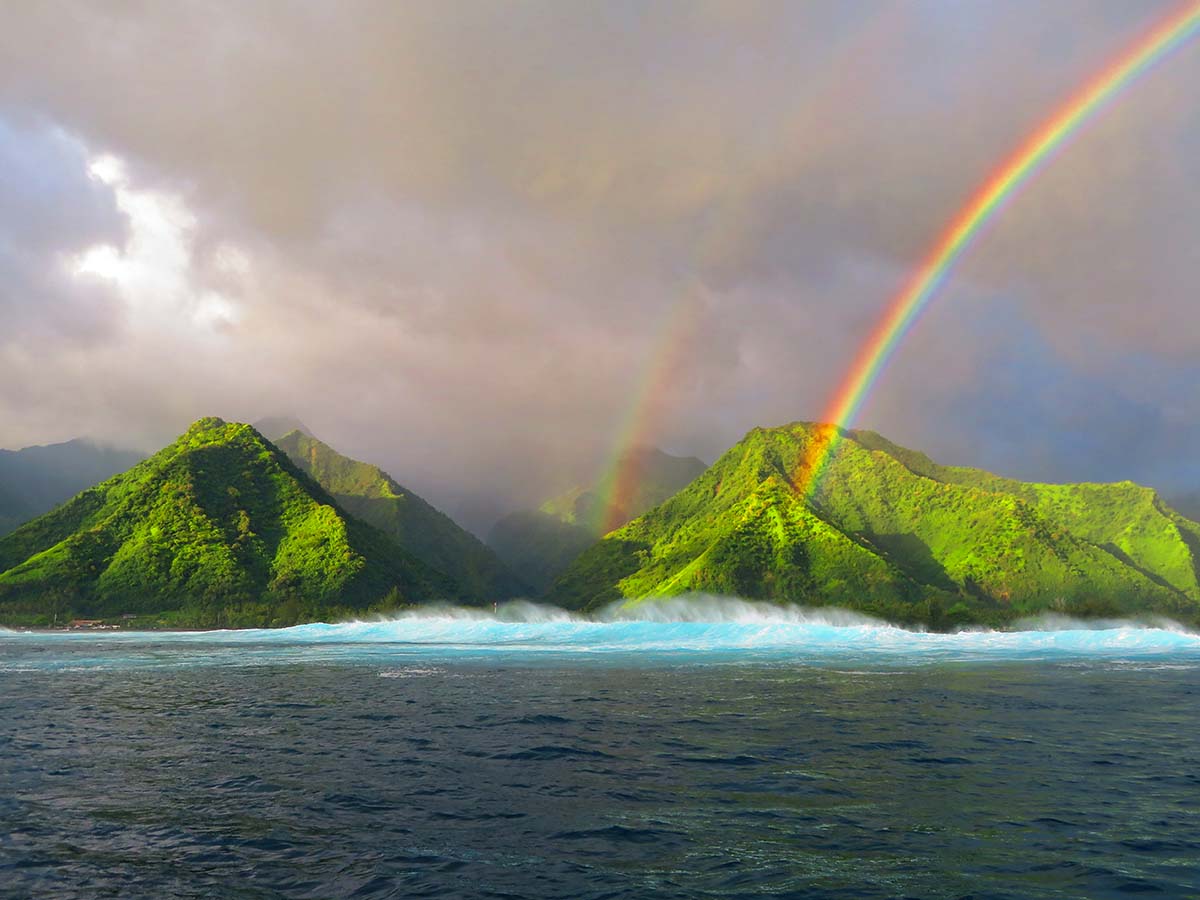
Less sun, more humidity and constant heat make December through March a time to avoid on a first trip to Tahiti. On the other hand, scuba divers will be able to observe aquatic fauna unique to this period and professional surfers will enjoy impressive waves.
A Cheap Period
With the exception of the holiday season, the wet season stands out for its significantly reduced prices . You will notice it in the transportation and accommodation costs. Indeed, flights to Tahiti are more affordable and luxury hotels offer interesting discounts. For example, the price of bungalow rooms can be cut in half.
The cultural life in Tahiti does not stop. Some local festivities can be discovered at the House of Culture in Papeete. At the end of November, Polynesian dance enthusiasts should not miss the annual Hura Tapairu competition at the Grand Théâtre. An interesting fusion between tradition and modernity. Other visitors will attend the International Oceanian Documentary Film Festival in February each year.
May to June: An Advantageous In-Between Time
Going to tahiti when the sun returns.
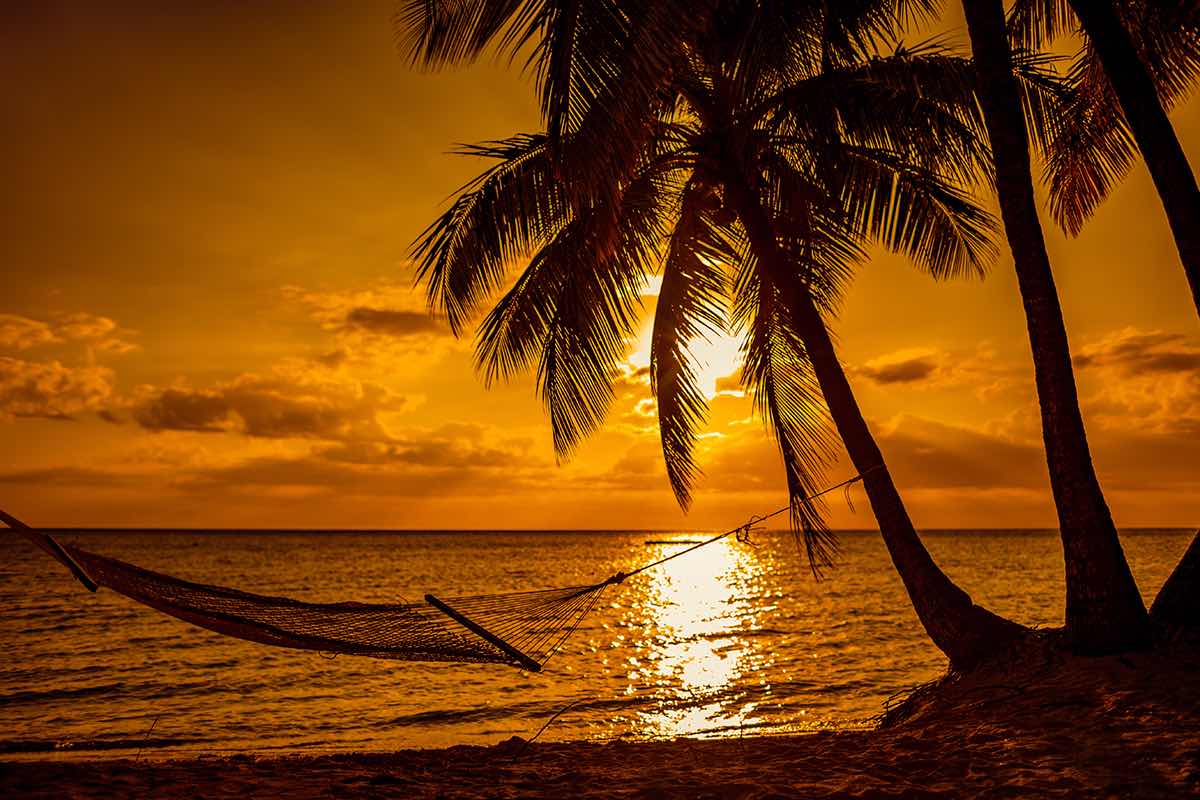
From May on, the weather conditions are constantly improving. The sunshine rate is very satisfactory, temperatures are more pleasant and humidity is no longer a major problem. In addition, you will still benefit from low airfares . Above all, you will benefit from a large availability of hotels in Tahiti . Indeed, the tourist season has just begun and the occupancy rate is not yet prohibitive.
Local Cultural Life Takes Off
The return of the good weather sees many festivities organized in Papeete and Tahiti. The most important event will be the Heiva of the schools (Taupiti ana’e). A little later, the Heiva Rima’i craft fair pays tribute to Polynesian know-how and local producers. This beautiful month of June ends with the Autonomy Day , a popular and festive event with concerts and street entertainment.
July to August: The Best Time to Visit Tahiti
Great conditions for perfection.
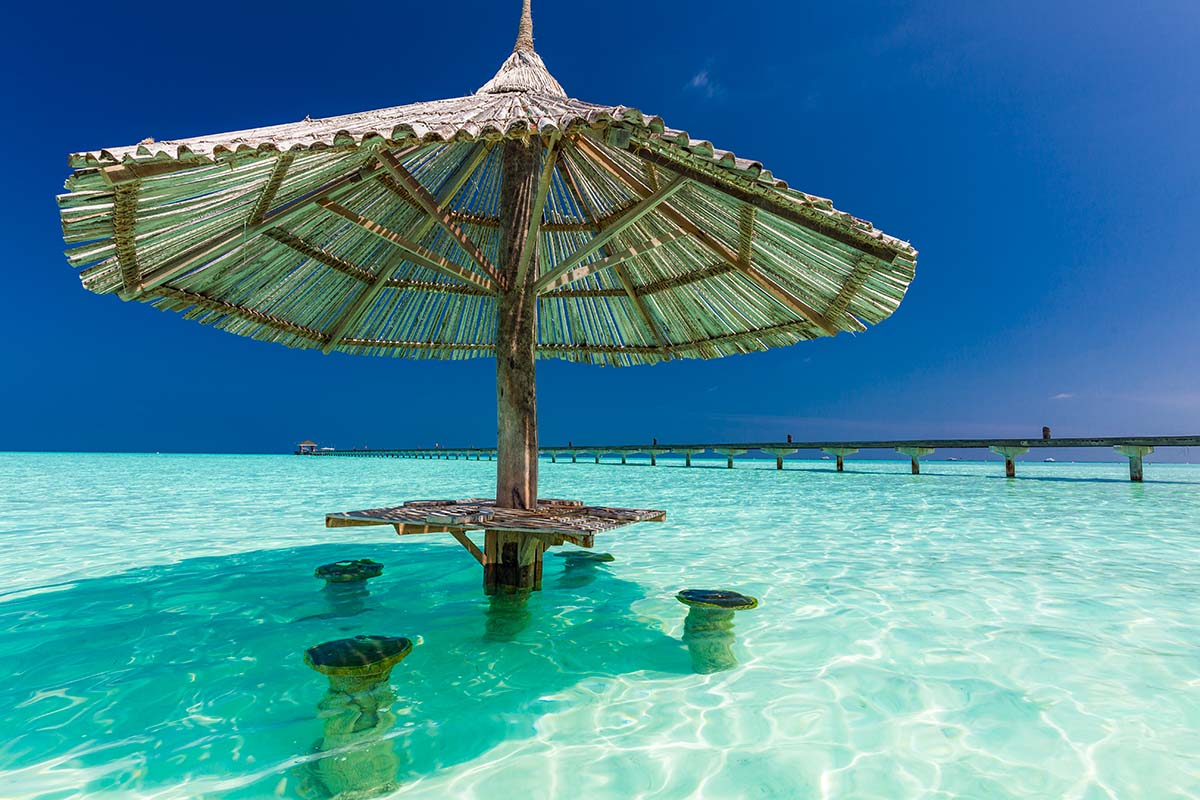
July and August are the best time to go to Tahiti . The sunshine is optimal and the humidity is at its lowest. The dry season is also the ideal time for hiking in Tahiti and visiting the volcanic caves. Indeed, these activities would be cancelled in case of rain the day before. By choosing this period to come to Tahiti, you will put all the chances on your side and enjoy your stay.
The local cultural life reaches its peak. In July, the Heiva i Tahiti dance festival is held. This is an opportunity to discover the Polynesian myth and the Tahitian Vahine . The second cultural event not to be missed is held at the Arahurahu marae . Until the beginning of August, traditional performances take place on a historical site emblematic of Polynesian civilization. Finally, at the end of August, the Tahiti Pro international competition is held on Tahiti Iti, where the world’s greatest surfing champions ride the Wave of Teahupoo .
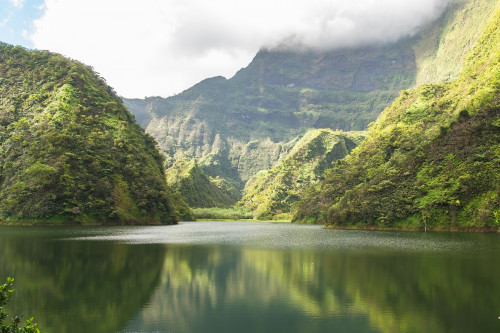
Papenoo Day Tour in 4×4 on Tahiti
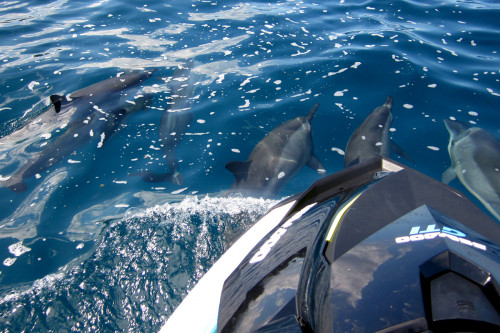
Jet Ski Tour in Tahiti
What are the disadvantages of leaving in july and august.
July and August are a school vacation period for both travelers from Northern Hemisphere countries and residents of French Polynesia. As a result, there are more people, less privacy and less availability for activities and in mid-range hotels. In other words, it is imperative to make reservations well in advance, especially for quality establishments.
Another consequence of the influx of visitors is that airfares are rising sharply. Finding a flight to Tahiti at an affordable price is becoming complicated. This trend is explained by the many expatriates returning to France during this period. International tickets are more expensive and limited in number. This has an impact on domestic flights between the islands of French Polynesia.
September to October: Tahiti Becomes Quiet Again
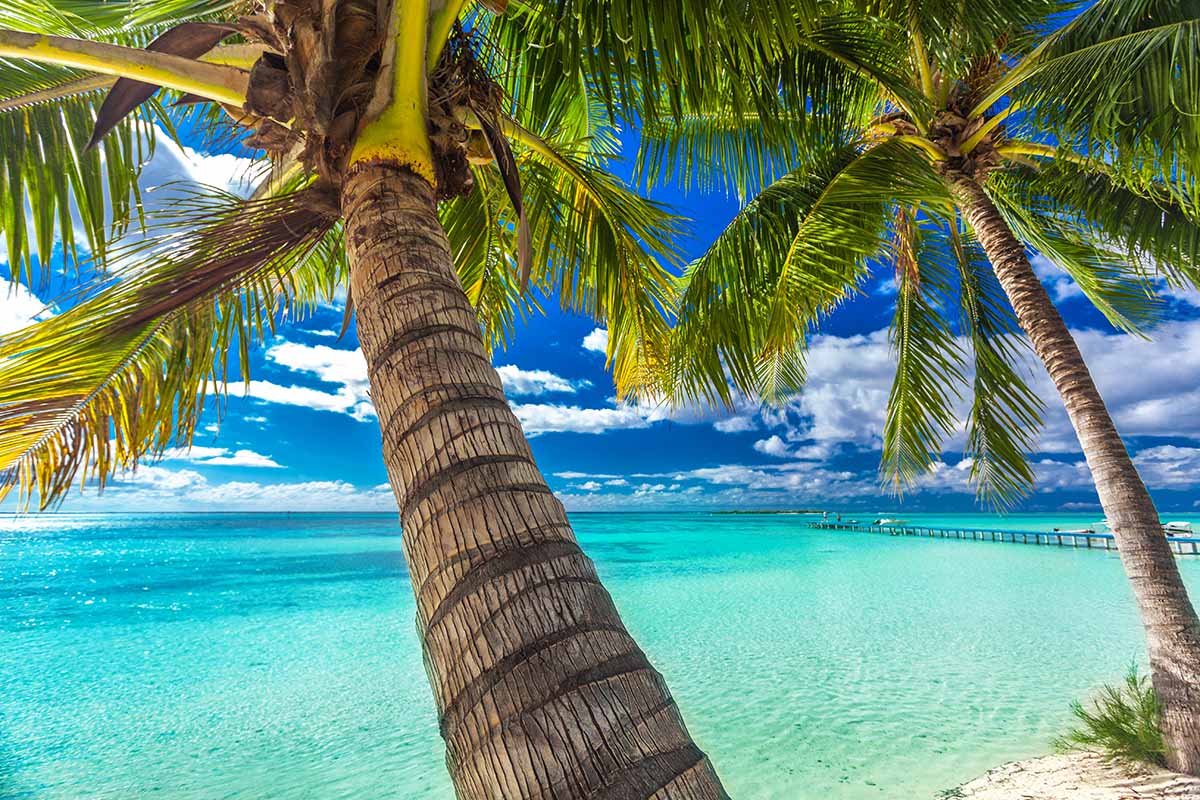
Until mid-October, rainfall remains relatively low and the sun is always shining. You will enjoy the tranquility of Tahiti’s beaches and the serenity of the mountain ranges. Divers will also be able to admire the migration of humpback whales off Tahiti . The phenomenon occurs from July to November and promises unforgettable memories.
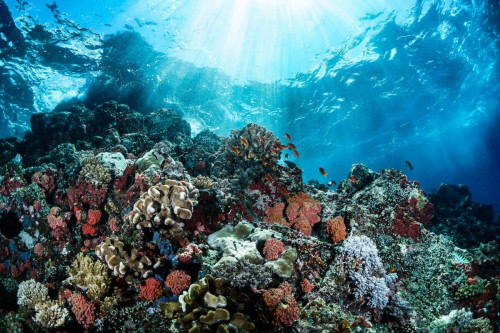
Half-Day Snorkeling Tour in Tahiti
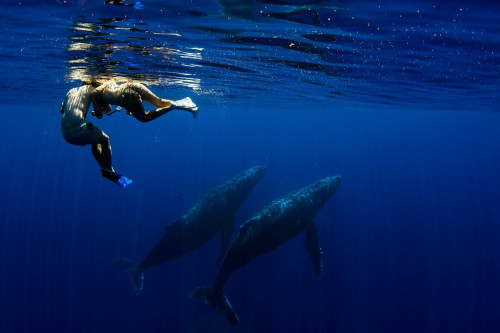
Whale Watching Half-Day Tour in Tahiti
Above all, there are far fewer people. School vacations end in August in French Polynesia and international visitors are scarce from early September. As a result, airfares are going down and the hotel offer is now more accessible. Cultural life is becoming more authentic, less grandiloquent. Music, singing or ukulele festivals gather more locals than tourists. It is a very different atmosphere.
September and October are the golden months . The conditions are there to guarantee a quality stay, quiet and sunny, with more affordable prices. More precisely, we recommend the period from mid-September to mid-October to go to Tahiti.
Choose Your Itinerary in French Polynesia
The dry season from May to October is the best time to go to Tahiti. Plan your itinerary to the South Pacific islands. And why not consider a cruise to Tahiti as well? The trip is just beginning. Contact us to start planning your trip to French Polynesia.
Share This Story, Choose Your Platform!
Related posts.
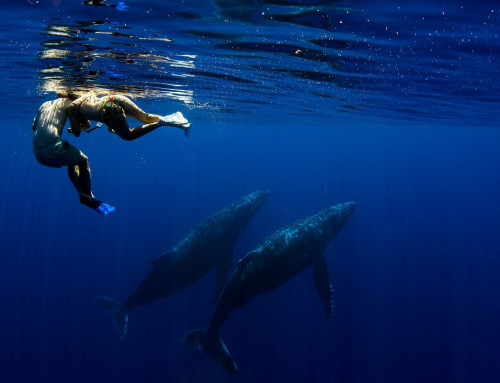
Whale watching in Tahiti: A must-see excursion

Papeete market: Visit the heart of Tahiti
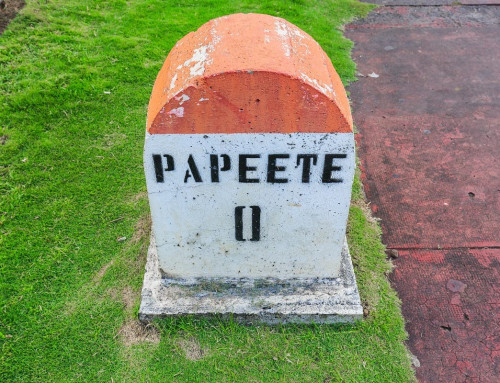
Papeete guide: Explore the capital of French Polynesia
Leave a comment cancel reply.
Save my name, email, and website in this browser for the next time I comment.

Best Time To Visit Tahiti (Beautiful Weather and Island Activities)
Find out the best times to visit Tahiti for ideal weather and exciting island activities. Plan your trip during peak seasons for a memorable getaway.

For the perfect balance of romantic and relaxing, there’s no better place to travel to than Tahiti. This beautiful destination attracts around 300,000 tourists each year. If you want to plan a perfect island getaway, you may be wondering when the best time to visit Tahiti is.
Winter in Tahiti is from June through September, and this is one of the best time frames to book a trip. August usually gets the least rainy days, making it one of the most enjoyable months to visit. The winter months can be the most comfortable in Tahiti because you won't have to deal with the humidity.
If you’re ready to see beaches with black sand or dance under a Tahitian waterfall, you’ve come to the right page. Today, we’re going to talk about the best times to book a trip to Tahiti. We’re also going to break down some of the best year-round attractions. Keep reading to find out what they are.

When You Should Not Go To Tahiti?
The worst month to book a trip to Tahiti is in December. December is the rainiest month in Tahiti and it can be more humid.
Part of the fun of traveling to Tahiti is seeing its natural attractions and spending the day on the beach. It’s always disappointing for tourists if they are limited to indoor activities.
There’s another reason you might want to avoid Tahiti in December. A lot of people book island vacations around the holidays causing the resorts to fill up fast. The cost of flying and accommodations are a lot higher around the Christmas season as well.
What Is The Cheapest Month To Go To Tahiti?
February is the cheapest month to book a trip to Tahiti. This is perfect for travelers that live in a snowy part of the world and need a break from the freezing cold.
Most hotels and resorts have cheaper rates from November through April in Tahiti. There are family-friendly accommodations for as low as $77 per night.
The cheapest month to book the flight is in February, especially if you search for flights at least 4 weeks ahead of time (earlier is better for finding discounts). It is possible to find a round trip for under $650.
Best Time To Visit Tahiti: Monthly Breakdown
There’s no wrong time to visit Tahiti. You can plan an enjoyable trip any time of the year, but it helps to know what the island has to offer while you’re there. Let’s take a look at what makes each month great for traveling to Tahiti.
January: Best Month To Learn About Tahiti Culture

January is another humid and wet month in Tahiti, so there’s a good chance you may see a couple of rainy days during your stay . That doesn’t mean your trip to Tahiti is ruined, instead, it’s the perfect time to experience more of this island’s culture.
Tahiti has a very compelling art culture, with authentic dances, music, and art pieces. There are also a lot of artifacts exclusive to this island that draw people into the museum.
- Manua Exquisite Tahitian Art
- Museum of Tahiti and the Islands
- James Norman Hall Home
February: Best Month For A Romantic Getaway

If you’re planning a romantic getaway to Tahiti for Valentine’s day, one of the best ways to make your stay even more magical is by renting an over-water bungalow to stay in. The best places to find these accommodations are at the Tahiti La Ora Beach Resort and the Intercontinental Tahiti Resort and Spa.
The setting of these bungalows adds to the romantic atmosphere, as you can enjoy the sunset or sunrise from your own private area.
Another thing that adds to the beauty of this stay is that you can have things delivered to your bungalow by canoe. You can surprise your significant other with a Tahiti breakfast, flowers, or a gift.
- Day trip to a private moto islet
- Dinner and wine at Le Lotus
- Tahiti’s Spa Deep Nature
March: Best Month For Hiking

March is a considerably warm month, but there are mountainous areas of Tahiti where the heat isn’t as extreme. This is a great month for hiking along with one of the mountains because it’s not as wet as the previous months were.
Once your reach the peak of these mountains, you’ll be treated to memorizing views of the island. It’s also a great time of year to explore the nature trails.
- Papenoo Valley
- Hitiaa Lava Tubes
- Mount Aorai
April: Best Month For Exploring Lagoons

Tahiti has some of the most memorizing lagoons in the world. April is one of the best months to explore these areas because the month is filled with many hot sunny days.
You can enjoy the day relaxing by the lagoon and enjoying the view, or you can go on a snorkeling tour where you can see tropical fish and whales. It’s also a great time to visit waterfalls and blowholes.
- Tahiti Lagoon Paradise Tours
- Arahoho Blowhole
- Topatari Falls
May: Best Month For Great Weather

May is one of the nicest months for weather in Tahiti because it’s when the humid season has come to an end. There is less rain and many sunny beautiful days where you can enjoy your trip outdoors exploring the island and its attractions.
There are many beaches in Tahiti, some with black sand and others with white sand. We recommend May as one of the best months
to enjoy them because you won’t run into the busy tourist season.
- Lafayette Beach (black sand)
- Temae Beach (white sand)
- Authentic Moana Lagoon Excursion
June: Best Month For Visiting Tourist Attractions

Credit: Wikimedia Commons
One of the best months to enjoy the tourist attractions in Tahiti is in June. This is because the Tahiti winter season has started, giving you ideal weather conditions, but you don’t have to deal with the crowds from peak tourist season.
Whether you want to go on a day trip excursion or visit the local markets, this is one of the top months to do tourist activities.
- Aremiti Ferry
- Maraa Grotto cave
- Harrison W Smith Botanical Garden
- Tahiti Lagoonarium
Related Read: Do You Need A Passport To Go To Guam?
July: Best Month For Stargazing

Credit: Shutterstock
A highlight of visiting Tahiti is the night sky. Tourists love to spend the night sitting by the beach stargazing. The pollution level is very low on the island, allowing nothing to block the vision of the sky.
Since July is part of the dry season, there are more nights with clear skies, allowing tourists to spot the constellations of the Polynesian sky.
- Matira Beach
- Mahana Park
- Point Venus
Related Read: Best Time to Visit French Polynesia
August: Best Month For Snorkeling

One of the most exciting tourist activities in Tahiti is snorkeling. August provides the perfect weather conditions to spend the day discovering what’s in the ocean.
There are many great snorkeling tours with professionals that will take you out and show you what to do. Keep in mind, that this is the peak month of tourist season so you may need to arrange a tour ticket ahead of time.
- Sea Scooter Snorkel Tour
- Nautical Excursion and Aquatic Adventures in the Blue Lagoon of Paea
- Moorea Fishing Adventures
September: Best Month to Avoid Crowds While Sightseeing

September is a great month for a Tahitian vacation because you will still get the best of the weather while avoiding large crowds.
You will have a better opportunity to enjoy tourist attractions without having to spend more money on a private tour. This is also a great time to visit the natural attractions and take time to enjoy them.
- Whale watching tours
- French food at local restaurants
- Half-day or day cruises
October: Best Month To Enjoy Traditions

October in Tahiti hosts several traditional festivals and events. One of the most popular is Reva I Eimeo Nui, which is a truck tour featuring many traditional foods and ukulele players.
The International Graffiti Art Festival is also in October with many original displays to view.
- Watch stone-throwing competitions
- Enjoy Tahitian music
- Try local food
November: Best Month To Experience Off-Season

Rates around Tahiti begin to drop in November as tourist season ends and Tahitian summer begins. While November is more humid, it’s not as bad as the months to come.
This makes it an ideal time to take advantage of discounts on accommodation and popular tourist activities.
- Hawaiki Nui canoe races
- International Tattoo Festival
December: Best Month To Enjoy a Tropical Holiday
Of course, Christmas is different without cold weather and snow, but there’s something extra magical about Christmas in Tahiti.

Sections of the island are decorated to keep travelers in the holiday spirit. You may even get greeted by live carolers while you’re out and about in the shops.
- Visit gift shops
- Enjoy cakes for your Christmas feast
- Enjoy traditional Tahitian Christmas decor
Related Read: Best Time to Visit Bora Bora
When is the Best Time To Travel To Tahiti With Kids?

Tahiti is a family-friendly destination with fun to be had for people of all ages. The best months to travel to Tahiti with the family are when the kids are out of school in July or August.
We recommend this time because the weather is ideal for outdoor activities and you will be more likely to meet other families with kids at the resort.
Fisherman’s Wharf, SF Travel Guide (Activities, Restaurants, Parking)
Explore Fisherman's Wharf, SF: Your ultimate guide for activities, dining, and parking tips. Perfect for travelers seeking a memorable San Francisco visit.
Win a $500 Flight!
Embark on the adventure of a lifetime! Enter our Dream Journey Sweepstakes for a chance to win a $500 travel voucher, redeemable with any major US airline. Whether it's sandy beaches, bustling cities, or tranquil mountains, your dream destination is just an email away!*
You may also like...

Best Time to Visit Lithuania for Seasonal Adventures & Local Festivals
Planning a trip to Lithuania and wondering when's the best time to go? You're in the right place. Lithuania, with its stunning landscapes and rich history, offers a unique experience no matter the season. But, if you're looking to make the most of your visit, timing is key.

Best Time to Visit Hungary: Seasonal Secrets for an Authentic Experience
Deciding when to visit Hungary can be tricky, but don't worry, we've got you covered. This beautiful country shines in every season, but knowing the best time to go can make your trip even more special.

Best Time to Visit Estonia: Discover a Winter Wonderland Like a Local
Deciding when to visit Estonia? You're in for a treat, no matter the season. But if you're looking for the best experience, timing is key. This Baltic gem offers something unique with each season, from white winters to sunny summers.

Best Time to Visit Armenia: Winter Wonderland & Cultural Fests Unveiled
Deciding when to visit Armenia? You're in for a treat! This hidden gem has got it all - from cool, snowy winters to warm, sunny summers. But to get the best out of your trip, timing is key. Let's dive into when's the perfect moment to pack your bags for Armenia.

Best Time to Visit Havana: Seasonal Guide for Cultural Festivities
Planning your dream trip to Havana? You're probably wondering when's the best time to pack your bags and go. Well, you're in luck because we've got the inside scoop to help you make the perfect choice.

Best Time to Visit Oaxaca: Uncover Seasonal Secrets & Local Celebrations
Deciding when to visit Oaxaca? It's all about finding the perfect balance. You want great weather, fewer crowds, and lots to do, right? Well, you're in luck because Oaxaca has got it all, but timing is key.
The travel site inspired by travelers and locals alike. Find amazing destinations, unique trip ideas, the best hotels, and most comfortable resorts.
What You Need to Know About Tahiti
M Swiet Productions/Getty Images
If a trip to Tahiti and the islands of French Polynesia is on your travel radar, chances are you'll be heading there with someone special .
Nature seems to have custom-made these dreamy South Pacific islands for two. The scenery is spectacular, the water is crystal-clear, and those thatched-roof overwater bungalows rank among the planet's sexiest places to sleep.
And yet families will also find a trip to Tahiti to be a sun-filled (albeit pricey ) playground, as some resorts and islands have begun to cater to parents and children. Here's some facts about what you need to know as you begin planning your visit.
The 118 islands of French Polynesia (an autonomous nation with ties to France) are located in the middle of the South Pacific , about eight hours by air from Los Angeles and midway between Hawaii and Fiji .
Spread over two million square miles, they are divided into several groups. Tahiti, the largest island and home to the capital city, Papeete , is part of the most-visited group, the Society Islands, which also includes Moorea and Bora Bora .
More far-flung are the tiny coral atolls of the Tuamotu Islands, such as Fakarava and Tikehau, and the dramatic Marquesas Islands. Tourists rarely visit two additional groups, the Austral Islands and the Gambier Islands.
Tahiti is a tropical destination with abundant sunshine, year-round air and water temperatures of about 80 degrees, and two main seasons, summer and winter. The ideal time to visit is during the clear, dry winter months of May to October. Yet even during the more humid summer months of November to April, showers are mainly sporadic (typically late-afternoon and overnight) and there's usually plenty of sunshine.
Getting There
Los Angeles International Airport (LAX) is the gateway to French Polynesia. The islands' official carrier, Air Tahiti Nui offers daily non-stops to Papeete's Faa'a Airport (PPT), while Air France, Air New Zealand, and Qantas fly several times a week. You can also fly to Papeete nonstop from Honolulu on a weekly Hawaiian Airlines flight.
TripSavvy / Lauren Breedlove
Suggested Itineraries
With multiple combinations possible among the 15 or so islands with tourism infrastructure, which should you choose? It depends on your experience and interests.
First timers: On their virgin visit to French Polynesia, travelers typically stay for seven to 10 days and stick with a circuit of three islands: Tahiti, where you may have to stay overnight upon arrival or prior to departure, depending on flight times; Moorea, a lush, emerald-hued island located just a short flight or ferry ride away from Papeete; and Bora Bora, the crowning glory of the Society Islands with its magnificent Mt. Otemanu peak and world-famous lagoon.
Specialized interests: Repeat visitors, honeymooners, and scuba divers often bypass Tahiti and Moorea and head to islands a bit further afield.
A great combo for second-time visitors or romantics is Bora Bora, where the views never get old; Taha'a, located a short flight from Bora Bora with excellent pearl and vanilla farms; and Tikehau, Manihi or one of the other secluded Tuamotu atolls, where the main activities are snorkeling, sunning, and relaxation.
Divers typically head for the amazing coral reefs of Rangiroa, which is ranked as one of the world's great dive destinations. Adventure-seekers enjoy exploring the Marquesas, where ancient tribal lore and customs are commonplace.
Is Tahiti Expensive?
Yes, for a number of reasons. Almost everything except fresh seafood and tropical fruit has to be shipped in from a great distance - making food the most obvious expense. Add in the high cost of electricity and a currency tied to the euro, making the exchange pricey for Americans. Bora Bora and Taha'a resorts tend to be priciest, while those on Tahiti, Moorea, and the Tuamotus can be a third to a half less. To save, choose a beach bungalow over an overwater bungalow and look for a package with breakfast included. A variety of sources are now also offering package deals, that include air, accommodations, and sometimes even certain meals, making a visit more affordable than ever.
Do I Need a Visa?
No, for stays of 90 days or less, citizens of the United States and Canada need only a valid passport.
Is English Spoken?
Somewhat. Tahiti's two official languages are Tahitian and French, but you will find that most hotel employees speak English, as do people who work in shops or for tour companies.
Do They Use Dollars?
No. French Polynesia's official currency is the French Pacific Franc, abbreviated as XPF. You can exchange money at your resort and there are a few ATM machines on Tahiti, Moorea, and Bora Bora. Some vendors in local handicrafts markets will accept U.S. dollars.
What Is the Electric Voltage?
You will find both 110 and 220 volts, depending on the hotel or resort. Bring an adapter set and a converter to make sure you're covered.
What Is the Time Zone?
It's the same as Hawaii: Three hours earlier than Pacific Standard Time and six hours earlier than Eastern Standard Time (adjusted to two hours and five hours, respectively, from November to March).
Do I Need Shots?
None are required for residents of North America, but making sure your tetanus vaccination is up to date is a good idea. Also, pack plenty of bug repellent, as Tahiti has its share of mosquitoes and other insects.
Which Islands Are Most Family-Friendly?
The Societies - Tahiti, Moorea and Bora Bora - where a number of resorts have added accommodations suited to families, as well as kids programs.
Can I Cruise the Islands?
Yes. Several ships visit the islands. They include the m/s Paul Gauguin , a 320-passenger luxury ship, offering varied itineraries within French Polynesia and the neighboring Cook Islands year-round; the Royal Princess , a 670-passenger cruise ship, offering 10-day roundtrip sailings from Papeete and 12-day cruises between Hawaii and Papeete; and the Aranui 3 , a combo freighter /passenger ship that makes scheduled two-week runs from Papeete to the Marquesas.
Planning a Honeymoon in Tahiti
The 8 Islands You Need to Know in Tahiti
Tahiti on a Budget
A Complete Guide to Rangiroa, French Polynesia
10 Top Things to Do in Tahiti
The Top 9 Things to Do in Huahine
10 Best French Polynesian Islands
Tips for Family Travel to Tahiti
Bora Bora Guide: Planning Your Trip
10 Best Things to Do on Bora Bora
All About Moorea, "Tahiti's Magical Isle"
A Guide to the Best Beaches in Tahiti
What You'll See While Snorkeling or Diving in Tahiti
5 Overwater Bungalows You Can Book With Points
Planning a Trip to Fiji
The St. Regis Bora Bora Resort
Tahiti Travel Guide

Courtesy of CampPhoto | Getty Images

Why Go To Tahiti
Miles of shoreline, dozens of resorts , French cuisine to die for – Tahiti has all the makings of a honeymoon destination . But beach bums often pass over Tahiti's sands in favor of Bora Bora 's ivory shores. Despite its idyllic reputation and accessibility, Tahiti is often more of a stopover point en route to romantic getaways on smaller islands. However, that doesn't mean Tahiti should be ignored.
Leafy forests sit beside sandy shores, while French crêpes are served alongside Tahitian poisson cru (raw fish). If there ever was a place that embodies the beautiful duality of the French Polynesian archipelago, it's Tahiti. Here, the quirky, often chaotic atmosphere of the island's capital, Papeete , rubs elbows with uncorrupted natural beauty.
In fact, Tahiti – the largest of French Polynesia's 118 islands – is often referred to as two separate islands despite them being joined by a tiny land bridge. Tahiti Nui is the larger, northwestern section where Papeete can be found. Tahiti Iti (the smaller, southeastern half) is less accessible, although many visitors make the trek here for the seclusion. Just note that spending a week on either part of Tahiti will cost you quite a chunk of change. Regardless, travelers agree that the warm waters, lush jungles and luxurious resorts are worth the splurge.
Find Flight and Hotel Deals
Navigate forward to interact with the calendar and select a date. Press the question mark key to get the keyboard shortcuts for changing dates.
Navigate backward to interact with the calendar and select a date. Press the question mark key to get the keyboard shortcuts for changing dates.
- # 3 in Best Places to Visit in Australia and The Pacific in 2023
- # 4 in Best Beach Honeymoons
- # 8 in Best Islands in the World for 2024
See All 7 Rankings
Best of Tahiti
Best hotels in tahiti.
- in Sofitel Moorea Ia Ora Beach Resort
- in InterContinental Resort Tahiti
- in Manava Suite Resort Tahiti

Best Things to Do in Tahiti
- # 1 in La Plage de Maui
- # 2 in Explore Papeete
- # 3 in Papenoo Beach
Popular Tours

6-hour Snorkeling & Lunch Tour - Shared Tour
(1183 reviews)
from $ 125.29

Grand Tour Quad 3h30 Quad excursion in Moorea (single or two-seater)
(294 reviews)
from $ 120.93

Crossing the island of TAHITI in a 4x4 safari (mountain, waterfall, river, basins)
(285 reviews)
from $ 130.00
Tahiti Travel Tips
Best months to visit.
The best time to visit Tahiti is between May and October. Although the temperatures are balmy year-round, Tahiti's winter season enjoys less humidity. Tahiti really only experiences two distinct seasons: Winter brings less rain and pleasant temperatures while the summertime – November through April – can be quite hot and humid (especially December), not to mention rainy. But regardless of when you travel, you can expect hotel rates to be high. A simple hotel room runs between $100 to $250 per night, and resorts can start anywhere from $400 per night and go much higher. Vacation rental stays, both private rooms and entire homes, typically cost a minimum of $100 to $200 per night.
Weather in Tahiti
Data sourced from the National Climatic Data Center
What You Need to Know
The languages French is the official language, but you may hear local languages, such as Tahitian. English is also widely spoken.
The food trucks The food truck craze has hit Tahiti. Catch the roulottes – or food trucks – with everything from Chinese fare to French crepes, lined up along Papeete's waterfront in the evenings.
The sharp sand Sandals or water shoes are a must at the beaches. These shorelines are speckled with jagged shells, along with waves that hide barbed coral.
How to Save Money in Tahiti
Head to the supermarket Restaurants are quite expensive, so save cash by purchasing breakfast and lunch items at the supermarket. Then, you can splurge on dinners.
Stay at a guesthouse Tahitian guesthouses, also referred to locally as pensions (pronounced pone-see-on), are typically family-operated accommodations that range from dormitory-style lodging to individual bungalows and villas. They often cost less than a hotel . Tahiti Tourisme offers a comprehensive list on its website .
Go for a cruise Taking a cruise that stops in Tahiti and other islands in French Polynesia can be more affordable than flying in and reserving accommodations on the island. Cruise lines like Princess Cruises and Oceania sail to this island paradise.
Bring your own snacks Food is costly in Tahiti. To save a little money, pack snacks from home instead of purchasing them on the island.
Culture & Customs
French is the official language of French Polynesia, though you'll find that many locals (especially those who work in the tourist industry) speak English. That said, it is more common to use the Tahitian greeting "La ora na," over the French "Bonjour."
Also, bear in mind that for most Tahitians, English is a second language. Be patient and courteous when conversing with locals. You may also hear bits and pieces of Tahitian, the local island language, but most residents will promptly switch to French or English when communicating with you.
The currency is the French Polynesia franc (XPF). The exchange rate fluctuates, so be sure to check it before you go . Tipping is not customary on the islands – gratuities are included in hotel and restaurant bills, but like anywhere else, a little extra for excellent service is always appreciated.
Tahiti is a safe place for tourists. Generally speaking, there are only a couple of dangers to watch out for: pickpockets in Papeete and moray eels in the coral reefs on scuba dives. Most visitors soon discover that Tahiti is warm and welcoming to foreigners. In fact, locals have a philosophy: " aita pea pea " (which translates to: "not to worry"), which results in a very laid-back and affable culture. Don't be surprised when strangers greet you on the street.
What to Eat
Surrounded by the South Pacific Ocean and blessed with ample sunshine and rain, Tahiti is an ideal spot to harvest seafood and grow fresh produce. Fish reigns supreme on menus in the restaurants in this French Polynesian island, with mahi mahi, grouper and tuna undoubtedly the most popular. You'll be remiss if you don't sample Tahiti's national dish, poisson cru , which is raw tuna marinated in coconut milk and lime juice, similar to a ceviche. When it comes to fruit, the island grows some of the tastiest pineapples, coconuts and bananas. Roulottes (food trucks) are also a staple in Tahiti, dishing out a variety of quick (and cheap) eats like pizza, crepes and burgers all packed with flavor.
Many of the island's top resorts house some of the best restaurants in Tahiti – they're also some of the most expensive. However, experts, visitors and locals suggest at least one meal at one of the upscale eateries; favorites include the overwater Le Lotus at InterContinental Tahiti Resort & Spa and French and Polynesian fusion restaurant Le Carré at the Tahiti la Ora Beach Resort. Downtown Papeete is home to some standout restaurants as well, according to recent travelers. They say those looking for a decadent French meal should look no further than Le Grillardin or Restaurant Le Sully.
Getting Around Tahiti
The best way to get around Tahiti is by taxi or rental car. If you're planning on doing a lot of traveling throughout the island, a rental car is a good option. A bike is an option, too. For journeys to other French Polynesian islands, you'll have to book passage on a boat or airplane. Most travelers arrive into Faa'a International Airport (PPT), which is an approximately 4-mile drive west of the capital city of Papeete . If a representative from your hotel isn't picking you up at the airport, you can hop into a taxi to your destination (though the short ride will likely be quite expensive). From the airport, you can also hop on flights to Bora Bora or nearby Moorea .
Entry & Exit Requirements
To visit French Polynesia, you'll need a U.S. passport valid for six months beyond the duration of your trip. If you're planning to stay in the country for more than 90 days, you'll also need to acquire a visa. For more information, visit the U.S. State Department's website .
La Plage de Maui dazzles with pearly white sand.
Explore More of Tahiti

Things To Do
Best hotels.

You might also like

# 1 in Best Beaches in the World for 2024

# 1 in Best Places to Visit in Australia and The Pacific in 2023

# 15 in Best Places to Visit in Australia and The Pacific in 2023
If you make a purchase from our site, we may earn a commission. This does not affect the quality or independence of our editorial content.
Recommended
The 50 Best Hotels in the USA 2024
Christina Maggitas February 6, 2024

The 32 Most Famous Landmarks in the World
Gwen Pratesi|Timothy J. Forster February 1, 2024

9 Top All-Inclusive Resorts in Florida for 2024
Gwen Pratesi|Amanda Norcross January 5, 2024

24 Top All-Inclusive Resorts in the U.S. for 2024
Erin Evans January 4, 2024

26 Top Adults-Only All-Inclusive Resorts for 2024
Zach Watson December 28, 2023

Solo Vacations: The 36 Best Places to Travel Alone in 2024
Lyn Mettler|Erin Vasta December 22, 2023

26 Cheap Beach Vacations for Travelers on a Budget
Kyle McCarthy|Sharael Kolberg December 4, 2023

The 50 Most Beautiful White Sand Beaches in the World
Holly Johnson December 1, 2023

The 26 Best Zoos in the U.S.
Rachael Hood November 16, 2023

44 Cheap Tropical Vacations That Feel Expensive
Holly Johnson|Alissa Grisler November 10, 2023

- Work With Me
Home » Blog » How To Plan A Trip To Tahiti: Ultimate Tahiti Travel Guide
How To Plan A Trip To Tahiti: Ultimate Tahiti Travel Guide
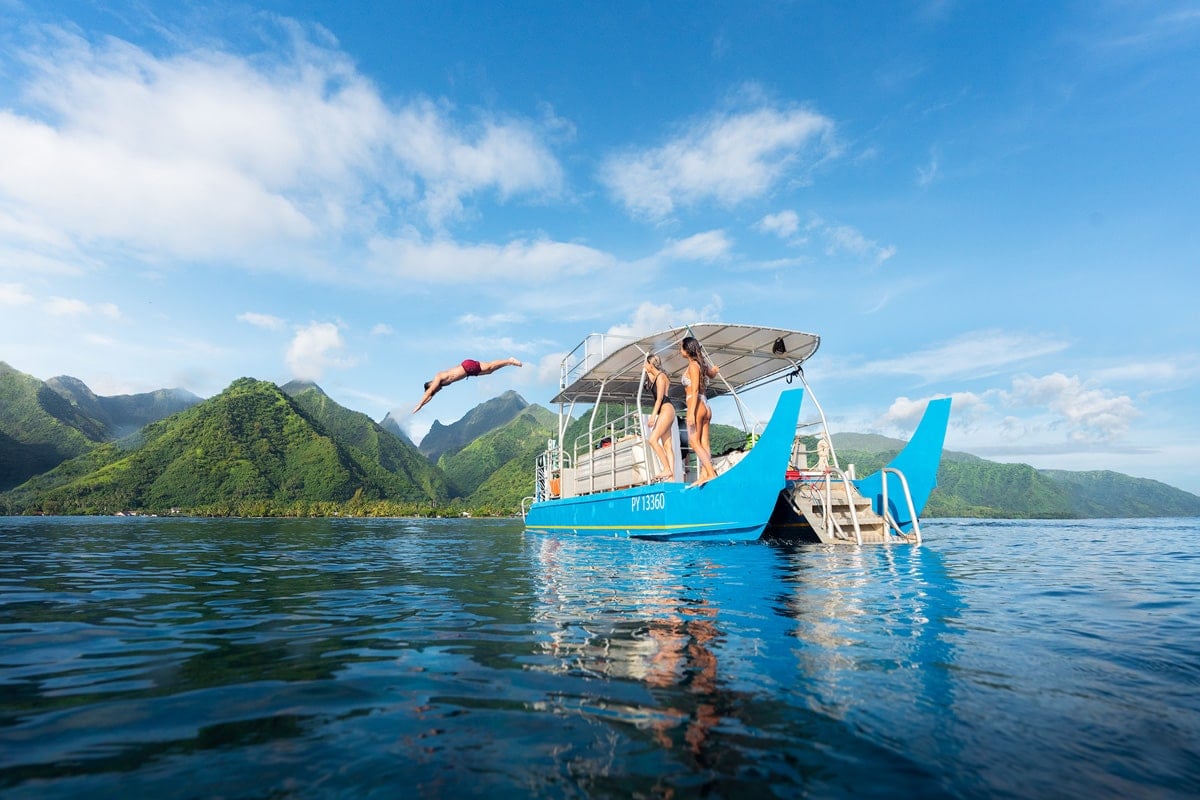
We’ve all seen the photos of Tahiti while scrolling through social media. Impossibly blue water, palm trees lining deserted beaches, and lush mountains that reach far down to the ocean below. Well, all of it is real, and the photos might not even being truly doing the Island of Tahiti justice!
I have visited French Polynesia twice now, and both times I felt like I was constantly having to pick my jaw up from the ground. The beauty is hard to beat, and there are just SO many fun things to keep you busy during your time on the islands. Or, just put on your favorite bathing suit and relax by the beach, I won’t judge.
In this blog post, I’m sharing everything I have learned about planning a trip to the Islands of Tahiti . Including how to get there, tips for choosing where to stay, what to pack, and more. Planning a trip to Tahiti can be a little logistically confusing at first. So let’s clear that up and have you begin your trip of a lifetime!
Disclaimer: This blog post is in partnership with Tahiti Tourisme and Air Tahiti Nui . As always, all opinions are my own . This article also features some affiliate links, which means I get a small commission if you make a purchase (at no extra cost to you). Learn more about my affiliate policy here . Thank you for the support!
How To Plan a Trip To Tahiti
There are a few things you need to know when planning a trip to Tahiti. Firstly, people often don’t realize that Tahiti is just one of over 100 islands in a region of the South Pacific that make up the country of French Polynesia . Technically, French Polynesia (sometimes also known as “The Islands of Tahiti”) is a collectivity of France, although it does have its own branches of government. You will find that I use the terms Tahiti , Islands of Tahiti , and French Polynesia interchangeably throughout this blog post.
Secondly, the national currency of French Polynesia is the Pacific Franc, also known as CFP Franc or XPF. Although US dollars are accepted in some of the more western establishments, it is important to carry local currency for smaller vendors and tour operators where US currency may not be accepted.
Finally, tipping is not standard practice in French Polynesia like it is in the United States. Yes, you are free to tip if you feel someone has given you exceptional service, but they will not be expecting it.
Now that we have covered the basics, let’s jump into some more specific information about planning your trip to Tahiti!
How To Get To Tahiti
The best way to get to Tahiti from the mainland of the United States is taking a non-stop flight from Los Angeles or San Francisco. From Los Angeles it will take you less than 8 hours to fly there with Air Tahiti Nui . This is the option my husband and myself chose for our most recent trip, and it was a great experience all-round.
We have flown Air Tahiti Nui’s premium economy and business class and these were two of the most comfortable flights I’ve ever taken! I’m sure many of you out there are like me and despise airplane food, but the food with Air Tahiti Nui was actually great, and the customer service was top-notch. Another good thing about flying with Air Tahiti Nui is getting access to a lounge at both LAX and also at Faa’a International Airport in Tahiti.
Alternatively, you can also fly non-stop from San Francisco, which will take a little over 8 hours. These flights are operated by French Bee and United Airlines. Keep in mind that Tahiti can also be accessed via cruise ship , either arriving from international seas or departing from within the country itself.
One thing to note is that many people think you can just fly to Bora Bora and the other French Polynesian islands directly from mainland USA. This is incorrect, as all flights from the United States must first pass through Faa’a International Airport on the island of Tahiti before continuing on to other islands.
TRAVELING TO TAHITI DURING THE PANDEMIC
As of May 1st 2021 , the following entry and stay protocols are in place for travel to the Islands of Tahiti. More information can be found via the Tahiti Tourisme website and this fact sheet . Note that this information is relevant to US travelers, as currently, only people who have been in the US for 30 consecutive days prior to departure can enter Tahiti for tourism purposes.
Vaccinated travelers
- Receive your COVID-19 vaccine dose(s). If you have a two-dose vaccine then you won’t need to wait to travel, though the Johnson and Johnson vaccine requires you to wait two weeks after to travel (at the time of writing, please research this prior to planning your trip) .
- Complete an online ETIS form* before departure, including an upload of your vaccination certificate and your itinerary details. Once completed a receipt with an ETIS number will be issued by email. Print this and bring it to the airport.
- Obtain a negative RT-PCR COVID-19 test within three days of your international flight to Tahiti (any RT-PCR test listed on this FDA site is allowed). Print your negative results and bring them to the airport. If the result is not obtained in due time, a certificate of completion of the RT-PCR test must be presented to the airline company, together with a negative result to an antigen test performed on the day of boarding. Any antigen test listed on this FDA site is acceptable for the same-day test in the event the RT-PCR test result was not received. Self-tests are not accepted.
- Upon arrival in Tahiti, you will receive an antigenic test at the airport. On day 4 after your arrival, you will be required to take a self-administered virological test (you can give this to hotel reception). Total costs for both tests will be 5 000XPF for vaccinated travelers (about $50 USD).
travelers With Proven Immunity
- Obtain a Serology Test that proves positive for COVID-19 antibodies between 30-15 days prior to departure.
- Complete an online ETIS form* before departure, including an upload of your serology test, immunity justification (proof of positive PCR test dated between 15 days and 6 months prior to departure date, or a doctor’s note), and your itinerary details. Once completed a receipt with an ETIS number will be issued by email. Print this and bring it to the airport.
- Upon arrival in Tahiti, you will receive an antigenic test at the airport. On day 4 after your arrival, you will be required to take a self-administered virological test (you can give this to hotel reception). Total costs for both tests will be 5 000XPF for immunized travelers (about $50 USD).
Other Travelers
- Complete an online ETIS form* before departure, including an upload of your itinerary details. Once completed a receipt with an ETIS number will be issued by email. Print this and bring it to the airport.
- Upon arrival in Tahiti, you will receive an antigenic test and will be required to quarantine for 10 days , no matter what your test results are. Travelers under 6 years old will are not subject to quarantine. Children over 6 years of age who are unvaccinated, not immune, or tested positive to COVID-19 are subject to quarantine which will be imposed on the entire family. Testing is at your own expense and will cost 12 000XPF.
*Note that to travel to Tahiti you will need to have travel insurance . If you do not have travel insurance, you will have to tick a box on the ETIS form that says you personally assume all expenses related to cost of care including hospitalization, confinement, or repatriation, should the visitor fall ill during their stay.
usa Testing Requirements
On return to the USA , you will need to show a negative COVID-19 test as per a CDC order on January 26, 2021. The order states that all air passengers arriving to the US from a foreign country are required to get tested no more than 3 days before their flight departs. Documents showing a negative result will need to be shown to airlines before boarding a flight to the USA. Antigenic tests will also be available at Faa’a International Airport each day that there is a flight (3 pm – 7 pm).
Where To Stay in Tahiti
When deciding where to stay in French Polynesia, most people will think of those beautiful overwater bungalows that are all over your favorite travel influencer’s social media pages. Yes, these places are absolutely magical, but they make up just a small fraction of accommodations across all of the islands!
You will find that each island has its own character . Bora Bora for example is known for its many luxury options such as the overwater bungalows, while more remote islands such as the Marquesas Islands will have more local style guesthouses. There is something for everybody in French Polynesia, and in my opinion, the best way to truly experience it is to stay in a variety of different places.
Tahiti Resorts
Resorts are the most common way for international travelers to experience French Polynesia. French Polynesian resorts usually have everything a visitor would need including restaurants, tour options, a pool, shuttles to/from the airport, etc. In fact, a great place to look for a resort is TripAdvisor as you will be able to see reviews, prices, availability, etc.
Some of my favorite resorts across the Islands of Tahiti are:
- Conrad Bora Bora Nui
- Le Taha’a Island Resort & Spa
- Four Seasons Bora Bora
- InterContinental Bora Bora Resort
- Bora-Bora Pearl Beach Resort & Spa
Tahiti Vacation Rentals
A vacation rental will immerse you more in the local culture and allow you to have a more homestyle experience. These often aren’t decked out with all the extra amenities of a resort (e.g. restaurants, tours), so you will have to head out to find your own food and activities. Typically you will also find vacation rentals on Airbnb or similar sites.
Tahiti Guesthouses
Staying at a Tahitian Guesthouse is a unique experience . Often this entails staying at a local’s home/property that they have set up specifically to host guests. Think of it kind of like an Airbnb, but with a local there to make your stay as enjoyable as possible. At a guesthouse, the host will often cook your meals for you (so good!), show you around their local area, and teach you about Tahitian culture. You can also find guesthouse stays on sites like Airbnb, or via the Tahiti Tourism website here .
WHEN IS THE BEST TIME OF YEAR TO VISIT TAHITI?
French Polynesia has a tropical climate , with warm temperatures year-round and a short “wet season”. The hottest months are December-March, with an average high of 83 ° Fahrenheit (28 ° Celcius). These warmer months also get more rain on average than other months, especially December and January. Excluding the Christmas and New Year period, this is typically a great time to visit for smaller crowds.
The “coldest” months on the Islands of Tahiti are June-August, which average a high of 79 ° Fahrenheit (26 ° Celcius). These months are usually the safest bet for optimal weather, as they have the lowest amount of rainy days per month. This also happens to be the high season for tourism, so expect more crowds and higher prices during this time.
The shoulder seasons of April-May and September-November will give you a middle-ground between the warm and cool months. In my opinion, these months are a great time to visit because there will be fewer crowds, a high chance of beautiful weather, and booking accommodation/tours won’t be as challenging as the high months.
With all that said, French Polynesia is an amazing year-round destination . I’ve been twice, once in December and once in May, and we had plenty of sun on both trips. I also didn’t really notice the few degrees difference in temperature. We did have more rain in December for sure, but it never held us back and didn’t affect our activities too much. We even went out for a nice swim in the middle of a rainstorm one day and had a blast!
WHAT TO BRING TO TAHITI
I have an in-depth packing guide for Tahiti that I recommend you checking out. It also includes a free printable packing checklist that will make life a lot easier as you prepare for your trip. Below are some items I would highly recommend you pack:
- Swimsuits + rashguard
- Towel/sarong
- Sandals + water shoes
- Reef-safe sunscreen *
- Sun hat + sunglasses
- Lightweight clothing
- Water bottle
- Waterproof bag
- Walking shoes
- Camera equipment
- Travel first aid kit
- Snorkel gear (if your accommodation doesn’t supply)
* Using reef-safe sunscreen is so important when swimming in the waters of French Polynesia. Do not use sunscreens containing oxybenzone and octinoxate as these are proven to cause coral bleaching. You can also choose to leave a positive imprint during your visit by joining the Coral Gardener program where you can actually adopt your own coral and place it back into its environment. You receive a certificate with your adopted coral’s GPS location and your chosen name (also makes for a great gift!)
Recommended camera equipment
I’ve had a lot of questions about what camera equipment is required to get beautiful photos in Tahiti, including underwater captures ! I know most people these days typically take the majority of photos and videos on their phones. I am personally the same, though I do also take photos on my professional cameras for work. If you are looking to take fun photos and videos for travel memories then I would highly recommend investing in the AxisGo Underwater Phone Housing . I used it non-stop on my most recent Tahiti trip and was so impressed with what it allowed me to capture!
AxisGo Underwater Phone Housing
AquaTech Camera Underwater Housing
If you’re more of a professional photographer then you may want to consider purchasing an AquaTech Camera Underwater Housing . I have used their housings for years now and love the quality they allow you to capture. Click here for a full list of my camera gear .
WHAT IS THE CURRENCY IN TAHITI?
As mentioned earlier, the national currency of French Polynesia is the Pacific Franc, also known as CFP Franc or XPF. Although US dollars are accepted in some establishments, it is important to carry local currency for smaller vendors and tour operators where US currency may not be accepted. Most places accept credit cards, but again, having cash is important for small vendors like market stalls.
HOW TO VISIT DIFFERENT ISLANDS IN TAHITI
All flights out of the United States will fly into the Faa’a International Airport on the island of Tahiti before continuing on to other islands. From here, you will typically board a smaller domestic plane for your journey onwards. Try to get a window seat for these flights, because the views of the coral reefs and mountains below can be jaw-dropping!
It’s easy to fly to Bora Bora and other Society Islands (the island chain Tahiti is a part of) as there are multiple flights from Tahiti each day. More remote islands such as the Marquesas Islands only have one flight per day. Another popular island, Mo’orea, is right next to Tahiti and is usually accessed via a ferry which runs many times each day not far from Faa’a airport.
Air Tahiti offers domestic flights within French Polynesia to 47 of the islands. Keep in mind that they offer Air Tahiti Passes that allow you to travel to multiple islands in one trip for a packaged price.
Interested in traveling to Mo’orea, Raiatea, or Taha’a? Check out my blog post featuring our trip itinerary .
HOW TO PLAN FUN ACTIVITIES IN TAHITI
French Polynesia’s diverse mix of ocean and mountain landscapes provide a wide array of outdoor recreation opportunities. The coral reefs surrounding many of the islands keep the rough ocean waves away from the mainland. This means there are often huge areas of water that have crystal clear and calm water. In contrast, the mountains feature lush forests, waterfalls, and unique views of the islands you won’t see from sea level.
The best way to explore French Polynesia is with a local guide . They know all the best spots. And will often get you to some amazing places you will have never heard of. There are so many different activities to do in French Polynesia. And most resorts will have partnerships with tour operators who will be able to pick you up directly from the resort. Just ask reception about your options and they’ll run you through everything. Tahitian guesthouse hosts will often have similar arrangements with local tour guides as well. Alternatively, if you’d like to do some research and choose your tour operator yourself, TripAdvisor or a Google search will give you plenty of information.
Some of my favorite activities in French Polynesia include:
- Local food tours
- Sunset boat cruise
There are many more activities I personally have not done, but French Polynesia is famous for. These include:
- Scuba diving
I also recommend attending a Polynesian cultural show during your visit to the Islands of Tahiti. I have attended quite a few of these and each time I am blown away by the beautiful music, dancing, and storytelling.
HOW TO PLAN A HONEYMOON IN TAHITI
The Islands of Tahiti are the perfect destination for a honeymoon ! There’s just something so romantic about being by the ocean, walking barefoot on the sand, and enjoying beautiful Polynesian culture together. Most people think of Bora Bora when they picture a honeymoon in French Polynesia, and I would say that it’s a great choice. But keep in mind that many of the other islands also make for romantic honeymoon destinations. In my opinion, visiting 2-3 islands in one trip is often the best way to get a feel for the country and try out a range of activities. Honeymooners should check out my guide to the Ultimate Romantic Couples Getaway to Bora Bora .
IS TAHITI SAFE?
French Polynesia is one of the safest places you can travel, and the French Polynesian people might be the most friendly I have ever had the pleasure of interacting with. The highest potential for danger in French Polynesia would be with whatever activities you choose to do while there. Obviously, any interaction with the ocean comes with some risk, but as long as you don’t put yourself in situations you aren’t comfortable with, you will be fine. The tour guides are also great at making sure guests have an amazing time without putting them in danger.
Final Thoughts on traveling to Tahiti
The Islands of Tahiti will always hold a special place in my heart and I hope to visit many more times in the future. Leave a comment below if you have visited and share your favorite memory!

PIN for later planning
Related guides.
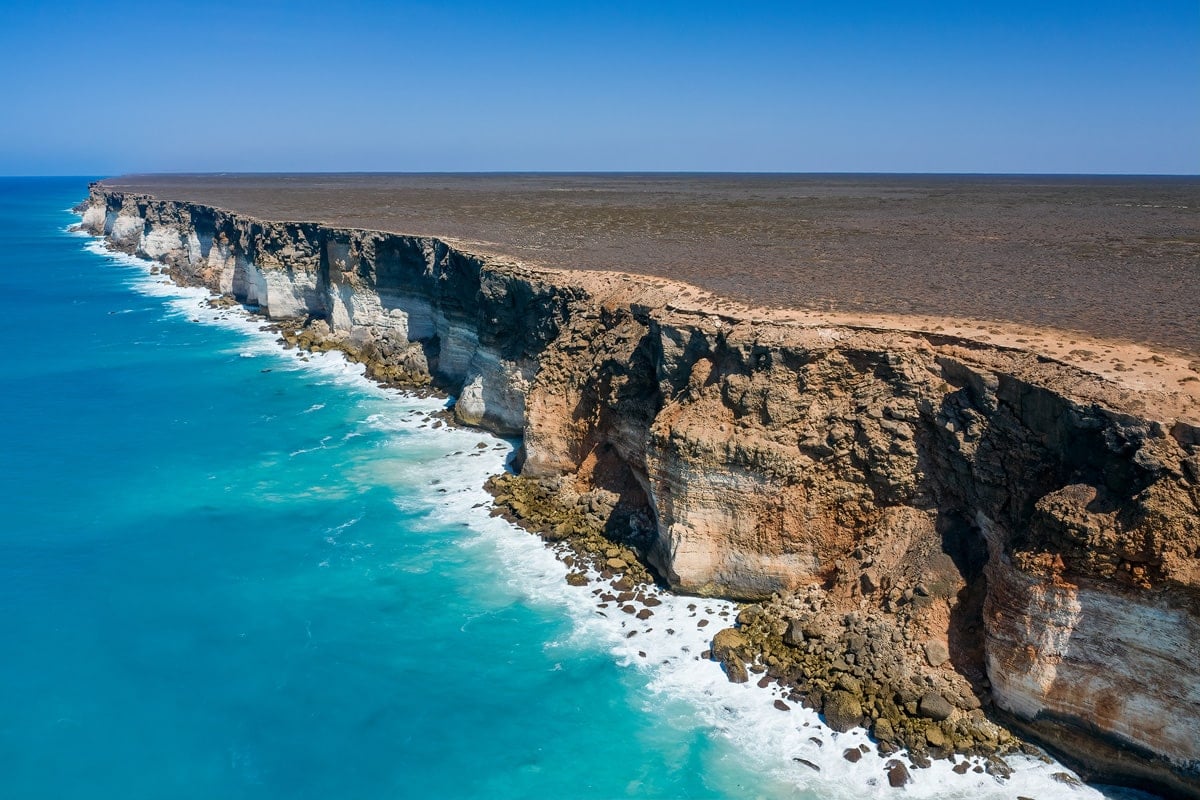
10 Incredible South Australia Road Trips

2019 Reflections and 2020 Intentions
Join our mailing list for exclusive resources, events, and more.
Thank you for subscribing!
Hi Renee! This guide is stunning!! Would you recommend stopping in Papeete for 3 days on the way back to Seattle from New Zealand? We are trying to decide if that would be enough time to enjoy the best parts of Tahiti, or if we should book a separate trip to Tahiti and visit Bora Bora and other islands! Thanks!
Wow, first of all your article is very complete and interesting. But if I wanted to leave a comment, it’s to say that your photos are just gorgeous. Simply awesome!
This is a great guide! What do you think is the cost to go for a couple? Maybe in the medium to high range?
Leave a Reply Cancel reply
Your email address will not be published. Required fields are marked *
This site uses Akismet to reduce spam. Learn how your comment data is processed .
Follow Along on Instagram
The Best Time to Visit Tahiti
SD › Tahiti › Best Time to Visit Updated: June 2, 2021 By Santorini Dave
Best Hotels in Tahiti Where to Stay in Tahiti Best Tahiti Hotels for Families
What is the best time of year to visit Tahiti?
To avoid the peak crowds but still enjoy great weather, the months of May, June, September, and October are the ideal time to visit Tahiti. Not only are these months the best time to enjoy water sports and outdoors, but they also offer nice deals on hotels.
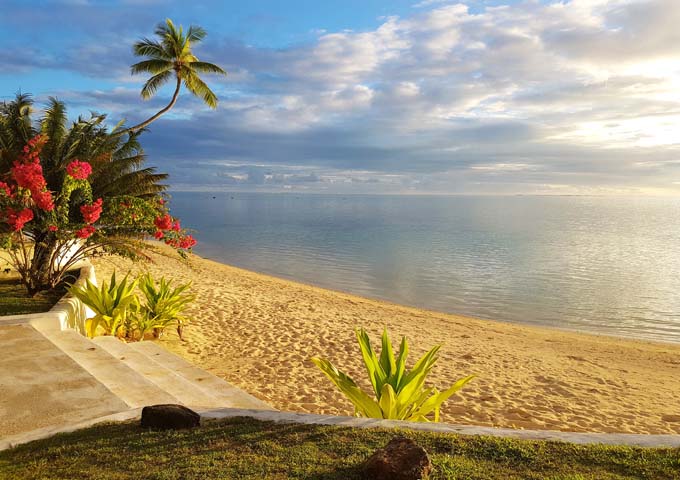
The best time to visit Tahiti is in May, June, September and October.
- Best Time to Visit Tahiti : May, June, September, and October.
- Best Time to Visit Tahiti for Good Weather : May to October.
- Best Time to Visit Tahiti for Sightseeing : May, June, September, and October.
- Best Time to Visit Tahiti for Honeymoons : May to October.
- Best Time for Diving & Snorkeling : April, May, June, September, and October.
- Best Time for Outdoor Activities : June to September.
- Best Time for Saving Money : Avoid the peak seasons (July, August, and the Christmas/New Year period) when the islands are bursting. Hotel rates increase and flights are sometimes overbooked, so plan ahead. Also, the local school holidays (especially in October) are busy times for inter-island flights.
- Best Time for Sightseeing : Like all tropical island regions in the South Pacific, there are 2 very important factors to consider when planning holidays. Tahiti is especially busy (and overpriced) during the major European vacation times of July and August, and the Christmas/New Year period from mid-December to mid-January. The second aspect is the wet season, which lasts from November to April. At this time, heavy rain is frequent, the humidity can be draining, and cyclones are possible (although very rare).
- Best Time for Diving & Snorkeling : Calm, clear waters are most likely between April and October, the driest months, but conditions do vary considerably because of local variations. And during July and August, trade winds bring relief onshore but can churn up the waves. During the wet season (November to April), rain and wind can also affect visibility, but this is less problematic in the shallow and mostly non-tidal lagoons that surround most of the atolls and islands.
- Best Time for Outdoor Activities : Not surprisingly, the weather affects the accessibility and enjoyment of all things outside. The wet season (November to April) brings heavy downpours, higher waves and stronger winds, and when it’s not raining, the humidity can be uncomfortable. Obviously, don’t go anywhere outdoors during any cyclonic activity. Hiking and surfing are optimal during the driest months of June to September, but remember: anywhere near the mountains will often be cold and wet throughout the year, and July and August can be surprisingly windy.
- Best Time for Beaches : During the dry season (May to October), daytime temperatures average around 25°C, becoming comparatively cooler later in the afternoon and during the evening. Water temperatures in the lagoons that surround almost all islands remain constantly inviting: from 23°C to 26°C. Swimming is sometimes more appealing in the wet season, if only to seek relief from the heat and humidity. Obviously, avoid any bad weather (particularly lightning), and never forget the sunscreen.
Tahiti Travel Seasons
- High Season (July, August, and mid-December to mid-January): This is the European holiday time, with the peak of the peak in August, when half of France seems to go away somewhere; and around the Christmas/New Year period. During these times, hotel rates will soar and some islands like Bora Bora, which has a dearth of accommodation anyway, are bursting. Always book way ahead, and remember that December and January is the height of the wet season, with cancelled flights not uncommon, and cyclones always possible (but very rare).
- Shoulder Season (May, June, September and October): These months are at the start and finish of the dry season, and exclude the peak holiday period (as explained above). The weather is very comfortable – mostly clear, mild and dry – and prices have yet to peak. Traveling around is easy, and numerous festivals rev up from May onwards.
- Low Season (November to mid-December, and mid-January to April): These periods are in the wet season, when rain is frequent, the humidity often unpleasant, and cyclones always possible, so be alert. Hotel rates drop considerably, and with so many empty rooms guests can negotiate. Finding seats on inter-island planes is rarely a problem – although flights can be cancelled due to bad weather or lack of passengers.
Tahiti Weather by Month
- Tahiti Weather in January : Being reasonably close to the equator, Tahiti is blessed with a tropical climate of warm and balmy days, with the heat often tempered by trade winds. The hot and rainy season peaks early in the year, with high temperatures (averaging 26°C in Pape’ete, but often nudging 31°C) and plenty of rain (about 315mm/12.5 inches) this month. When the rain stops and the sun is out, the humidity can force some visitors back inside. Cyclones in Tahiti are not as prevalent as its Pacific neighbours, but always possible from November to April, so check the local media, hotel announcements and official website .
- Tahiti Weather in February : The height of the wet season brings the greatest possible threat of cyclones. While many tropical depressions bypass the main tourist centres (and cyclones are very rare), they still bring peripheral winds and rains that make travel by plane and boat uncomfortable and sometimes, impossible. February sees a slight decrease in rainfall, but still enough to possibly affect travel plans.
- Tahiti Weather in March : Many of the most visited islands are mountainous, creating micro-climates along different coasts, while islands to the south can be considerably colder. But overall, rainfall has reduced dramatically in March to an average of 160mm – about half the amount from about 6 weeks earlier. The end of the wet season is nigh, signalling a substantial reduction in humidity, much to the relief of all, even the locals. Temperatures rise a little, often peaking at a year-high average of 31°C in some places.
- Tahiti Weather in April : Average rainfall is about the same as March, but the number of downpours starts to dwindle by the middle of the month, and humidity levels noticeably drop further. But don’t put away the umbrella and wet-weather gear just yet.
- Tahiti Weather in May : Official start of the dry and cooler season, sometimes called ‘winter’ by locals – and with it the chance of cyclones virtually disappears. The weather quickly becomes noticeably drier, with rainfall comparatively little until mid-October. Daytime temperatures remain stable, and reach about 30°C in some places, while night-time averages fall a couple of degrees to about 22°C.
- Tahiti Weather in June : Usually perfect weather, with heavy rain (hopefully) long gone, but perhaps more importantly, humidity is lower as it’s alleviated by increased trade winds. The seemingly endless dry and clear days coincide with the start of the busier tourist season. Nights are about 21°C on average, making it easier to sleep, and some locals start wearing jumpers and jackets after dark.
- Tahiti Weather in July : By now, some Tahitians even start complaining about the ‘cold weather’ (!) amid increased trade winds, which provide relief for many but are unwelcome by some (e.g. divers). But day after day, it’s pleasantly mild, with little or no rain. And it can even become comparatively chilly at night, with temperatures dropping to 20°C – and as low as 15°C in the Austral Islands in the far south; considerably colder than in any mountainous region. Packing a jumper or jacket is not as silly as it sounds anywhere in Tahiti.
- Tahiti Weather in August : The weather continues to be ideal, except the trade winds are at their strongest, sometimes making boat trips less pleasant, and masses have started arriving from Europe for their annual holidays. Daytime temperatures and rainfall are equally at their lowest for the year. Water temperatures are a little cooler, about 24°C, but the lagoons are still very swimmable.
- Tahiti Weather in September : Probably the optimal month to visit, with continuing dry and pleasant weather, and a significant reduction in hotel rates and tourist numbers. Stronger trade winds may linger, but are cooling rather than frustratingly blowy. Temperatures average 20-25°C during the day/night, and this month rivals August as the driest – almost 8 times less rainfall than December or January.
- Tahiti Weather in October : The last month for reliably mild weather. Although almost double the rain of September, it’s still half the precipitation of November. Average day and night temperatures start to rise by 1-2°C, and more noticeably, humidity levels increase, affecting the enjoyment of being outside for too long.
- Tahiti Weather in November : Official start of the wet season, also called the ‘summer’, which continues until late April. Average temperatures rise by another degree (Celsius), while the humidity becomes conspicuously more uncomfortable. Rainfall is double that of October and triple the amount from September. And cyclones are now possible (although very rare) anytime until April, so stay alert.
- Tahiti Weather in December : The wet season has well and truly started by now, with heavy downpours that could affect travel plans. Double the rain of November, exacerbated by high humidity. This month competes with January as the wettest, with over 300mm (12.4 inches), but rain is often immediately followed by extended bursts of sunshine. And tourist numbers increase dramatically during the Christmas/New Year period.
Tahiti Holidays, Events and Festivals
Tahiti events in january.
- New Year’s Day – a public holiday celebrated with gusto by everyone.
- Tere ‘A’ati (changeable, first or second week of January) – on Rurutu in the Austral Islands, with stone-lifting competitions, as well as traditional food, music, and dance.
- Tere Fa’ati (last Saturday in January) – traditionally-decorated trucks and buses take visitors to major sites around Tahiti Nui. Also, parades, music, dance, and food.
- Chinese New Year (changeable, January/February) – influential Chinese minority (and others) celebrate for a week or more with parades, fireworks, music, and arts. Mainly at the Chinese temple in central Pape’ete.
Tahiti Events in February
- Flower and Handicraft Festival (1st to 14th) – promoting indigenous flowers and traditional crafts from various communities across Pape’ete.
- Pacific International Documentary Film Festival (changeable, early February) – screenings and judging of short films from across the region. Mostly in French, but some in English. For a week in Pape’ete.
- Tahiti Guitar Festival (changeable, late February) – increasingly popular, with local and international acts. In Pape’ete for 2 days.
Tahiti Events in March
- Missionaries Day (5th) – also known as Gospel Day. Public holiday honouring the arrival of Protestantism over 220 years ago, with re-enactments and traditional dancing across the islands.
- International Women’s Day (8th) – marking the worldwide event with conferences and entertainment in Pape’ete.
- La Tahitienne (10th) – female-only sports carnival in Pape’ete linked with International Women’s Day just beforehand.
- Festival of ‘Uru (15th to 17th) – showcasing Polynesian food, particularly the revered ‘uru (breadfruit). In Pape’ete and a few villages around Tahiti Nui.
- Papara Pro Surf Festival (changeable, mid-March) – one of several competitions attracting diehards to the renowned reefs at Papara in southern Tahiti Nui.
- Tahiti-Moorea International Marathon (changeable, late March) – attracts some 2,000 runners, with fun activities before and after for all.
- Easter (changeable, March/April) – celebrated throughout the islands. Some facilities close for 4 days, while Good Friday and Easter Monday are public holidays. Easter Sunday is a great time to visit a church.
Tahiti Events in April
- Paddle Festival (7th) – paddleboard races, part of an international circuit. At Puna’auia on the west coast of Tahiti Nui.
- Jazz Festival (changeable, mid-April) – over a week in Pape’ete, a delight for enthusiasts with local and international acts.
Tahiti Events in May
- Labour Day (1st) – public holiday, with cultural shows, music, and dancing across the islands.
- Tahiti Pearl Regatta (7th to 13th) – largest sailing race in the Pacific. For all sorts of boats, from yachts to canoes, around Tahiti, Ra’iatea and Bora Bora islands.
- Victory Day (8th) – public holiday commemorating the end of WWII in Europe.
- Ascension Day (changeable) – public holiday 40 days after Easter Sunday.
- Whit Monday (changeable, May or June) – also known as Pentecost, a public holiday and religious event.
- Ta’iri Paumotu (changeable, mid-May) – festival in Pape’ete showcasing the unique guitar and ukulele styles of the Tuamotu Islands.
- La Ronde Tahitienne (changeable, late May) – international endurance bicycle race around Moorea Island.
- Tahiti International Golf Open (changeable, late May) – major event at the course in Papara in southern Tahiti Nui.
- Pareau Day (25th) – celebrating the history and beauty of the traditional pareau (like a sarong). Fun-filled activities throughout Pape’ete.
- Mother’s Day Fair (changeable, late May) – for about 1 week across the islands, showcasing indigenous arts and crafts as mothers are rightly revered.
- Flower Show (changeable, late May to mid-June) – displays of indigenous flowers, shrubs and plants. For 3 weeks at Faa’a (suburb of Pape’ete).
Tahiti Events in June
- Orange Festival (changeable, late June) – honours the popular fruit, with sports and music at Puna’auia, on the west coast of Tahiti Nui.
- Heiva Dances (changeable) – in the lead up to the major Heiva celebrations next month, dance schools around the islands practice and perform.
- Heiva Rima’i (from around mid-June for three/four weeks) – also linked to the Heiva celebrations next month, craft stalls in Pape’ete sell products from across Polynesia.
- Miss Tahiti (22nd) – honouring the beauty of Tahitian women, with pageants across the islands.
- Hivavaeve (29th) – also known as Internal Autonomy Day. Public holiday celebrating when French Polynesia was granted self-government (but not independence). Parades and concerts in all towns, but particularly flamboyant in Pape’ete.
Tahiti Events in July
- Heiva i Tahiti – everyone seems to go a little crazy during July. Expect lots of hip-swinging dancing, ukulele-playing, canoe racing and sporting carnivals across all islands. Especially appealing at Bora Bora.
- Marae Arahurahu Re-enactment (changeable) – along the west coast of Tahiti Nui. Historical re-enactments and traditional dancing.
- Tahiti Traditional Sports Championship (changeable, mid-July) – plenty of fun, with local sports, such as fruit-carrying, in Pape’ete.
- Bastille Day (14th) – public holiday celebrated across the islands with food, singing and fireworks. Pape’ete also hosts a military parade.
Tahiti Events in August
- Rautirare Festival (first weekend in August) – more water-sport competitions, including surfing, paddle-boarding and beach soccer. For several days at Mataiea in southern Tahiti Nui.
- Assumption (15th) – public holiday, with church services held throughout the islands.
- Super Aito Vaa (changeable, mid-August) – another popular and serious race featuring outrigger canoes. Starts and finishes at different places each year.
Tahiti Events in September
- Ra’iatea Gliss Festival (changeable, early September) – Ra’iatea Island comes alive with entertainment and water sports.
- Ukulele Festival (changeable, mid-September) – promotion and performances of this much-loved instrument across Tahiti Nui.
- Salon des Australes (changeable) – festival in Pape’ete showcasing artistry from the Austral Islands, renowned for baskets and hats made from pandanus leaves.
- Tahiti Nui Tour (changeable, mid-September) – major event on the international cycling calendar.
- Farereihaga (changeable, mid-September) – tourism festival at Rangiroa in the Tuamotu Archipelago, with cultural shows and competitions.
Tahiti Events in October
- Stone-Throwing Competitions (early October) – at various locations, mainly Maupiti and Bora Bora islands, honouring the ancient tradition of fishing using stones.
- International Graffiti Art Festival Ono’u (changeable, start of October) – discussions and displays of street art from across the Pacific. At Pape’ete for several days.
- Vaipahi Run (changeable, late October) – grueling cross-country race starting on the west coast of Tahiti Nui.
- Reva i Eimeo Nui (last Saturday in October) – truck tours of Moorea Island, with traditional food and wandering ukulele players.
Tahiti Events in November
- All Saints Day (1st) – public holiday honouring various venerated saints. Many locals visit graves of relatives.
- Armistice Day (11th) – commemorates the end of WWI.
- Lychee Run (changeable, early November) – challenging cross-country race at Tubuai (Austral Islands) celebrating Tahiti’s favourite fruit.
- Hawaiki Nui Canoe Races (changeable) – serious races around Hauhine, Ra’iatea and Bora Bora islands. Over 3 days, with lots of fun for all.
- French Polynesia Book Fair (changeable, mid-November) – all things literary, with speakers, launches and readings featuring writers from across the Pacific. In Pape’ete.
- Matari’i Ni’a (changeable, late November) – many traditional events across the islands as locals are grateful for the rain and hopeful of a plentiful harvest.
- International Tattoo Festival – tattoos are an integral part of Tahitian culture. Experts and enthusiasts flock to Pape’ete to admire the art of skin painting.
Tahiti Events in December
- Pineapple Festival (changeable) – on Moorea Island, with concerts, craft stalls and displays of local foods. Highlight is the making and eating of the Giant Pineapple Cake.
- Tuamotu Inter-Island Games (changeable, mid-December) – serious and fun events for over a week across the Tuamotu Islands, with traditional sports such as palm-tree climbing.
- Christmas Day (25th) – celebrated fervently. Also a public holiday, with most shops and restaurants closed for several days, and public transport almost non-existent.
- Boxing Day (26th) – Christmas celebrations continue, although not a public holiday.
- New Year’s Eve (31st) – commemorating the changing of years with parties across the islands and fireworks in Pape’ete.
All Tahiti Hotel Reviews
Aimeo Lodge – Closed Fare D’hôtes Tutehau Hôtel Fenua Mata’i’oa Hotel Hibiscus Hotel Kaveka Hotel Les Tipaniers Hotel Sarah Nui Hotel Tahiti Nui InterContinental Moorea Resort & Spa – Closed InterContinental Tahiti Resort & Spa Manava Beach Resort & Spa Moorea Moorea Beach Lodge Moorea Fare Miti – Closed Moorea Island Beach Hotel Pension de la Plage Royal Tahitien Sofitel Tahiti Ia Ora Beach Resort Tahiti Surf Beach Paradise Taoahere Beach House Te Ora Hau Ecolodge
Best Hotels in Tahiti Best Hotels in Tahiti for Families Where to Stay in Tahiti Best Hotels in Bora Bora Best Hotels for Families in Bora Bora Best Hotels in Fiji Best Hotel for Families in Fiji Best Hotels in New Caledonia Best Hotels for Families in New Caledonia Best Hotels in Tonga Best Hotels for Families in Tonga Best Hotels in Vanuatu Best Hotels for Families in Vanuatu
About Santorini Dave

The Best Time To Visit Tahiti – Enjoy the Good Weather!

- Latest Posts

- KLM vs Delta: Is KLM a Good Airline? - January 26, 2022
- The Best Time To Visit Brazil – Seasons, Events, Activities! - January 23, 2022
- The Best Time to Visit Fiji: All About Fiji Travel Seasons! - January 22, 2022
Tahiti is one among the five high Islands that form French Polynesia, a tropical paradise lying partially between Los Angeles and Australia. The other four islands are Raiatea, Bora Bora, Huahine and, Moorea. Aside from these, there are three isles on Polynesia namely; Fakarava, Manihi and Rangiroa.
Flying to this region from the United States will take you about eight hours though they seem like they are planets away because of their beautiful beaches, blue water, and lush vegetation. There are surely many reasons why you will want to visit Tahiti, which is referred to as the queen of other Islands of Polynesia.

Looking for sports, concerts, or music festivals? Find your perfect holiday or city break and save now at Expedia.com
Tahiti is an island lying in the South Pacific and has a reputation for its magnificent waterfalls, popular overwater houses, delicious seafood, and beautiful beaches. It is just a few kilometers from Moorea which has a reputation for shark sightings and stingrays. The best spot for honeymoon couples, Bora Bora is also just minutes away from these two.

In Tahiti, you are sure to relish the tropical climate as the sun shines for about 3,000 hours a year. This is one of the highest sunshine per year in the world but it does not stop the weather being cool in some moments.
The Pacific winds often blow over this region thereby cooling it all through the year. Similar to the lagoon waters, the ambient temperature averages at 78°F/25°C meanwhile, the temperature down south in the archipelagos (the Gambier Islands and the Austral Islands) is cooler.
The typical seasons you find in your immediate environment is different from that in Tahiti as you will find the temperatures climbing close to the high mid-80. The lows could be around 70 degrees throughout the year. This doesn’t stop the region from having rainfalls as other regions.
So, if you’re visiting the Island, any time of the year is ideal for tourism, although it depends on your choice and the kind of experience you’re after. However, you would want to visit Tahiti in the dry weather when you can have clear water for diving but at the same time, you might not want to arrive when there are large crowds.
With the location of Tahiti in the center of the Pacific Ocean and having countries like America, China, Australia and Brazil surrounding it, you are sure to find numerous visitors there during the holiday period. Hence, you might want to time your trip carefully so that you won’t have many headaches when you arive.
Best time to visit Tahiti: Weather considerations
In every month of the year at Tahiti, you could find similar weather temperature except when it is raining. The rainfall at Tahiti could not be a good idea for tourists though some activities in this period could be exciting too. However, you should endeavor to come along with an umbrella if this period is ideal for you.
There is a tendency of the humidity being high throughout the year at Tahiti as January kicks off a moment of discomfort due to the weather. However, this ends in March but only with a little difference as all the months are similar.
At all times of the year, you are sure to find winds in the region especially in the afternoons when they are higher. For this reason, you get some coolness as the winds are really pleasant and cool.
You will find the bars and restaurants in the South Pacific normally at the exterior of their buildings or outdoors. They normally have shades of palm or fabric so that the people do not have complaints due to the humid weather.
When in such restaurants at noon, the wind blows calmly and you do not feel much of the humid weather. Additionally, the managers of the bungalows normally install their houses with air conditioners so that you could have a wonderful stay.
Best time to Visit Tahiti to enjoy good Weather

Almost year-round in Tahiti, the weather is mostly warm and the temperatures hardly drop lower than 70 degrees F especially during winter. In summer, the temperature climbs to about the mid-90s but due to the wind blowing throughout the whole island, you won’t experience the heat as in other parts of the world.
The storm in the rainy season lasts for about half an hour and you will green and lush vegetation everywhere. Flowers also blossom and fill the air with their lovely fragrance and the water is warm; perfect for scuba diving and snorkeling.
From May to October, their region is dry and it is a great time to fly in too. The weather is at about 68 degrees F in the early morning and 82 degrees in the daytime. In November, the rain starts till April and you will find the weather at temperatures ranging between 72 and 86 degrees.
Most activities at Tahiti begin from November till March and you can catch a view of the picturesque equinox that appears in late March. It is a period when beautiful sky colors from the moon and sun reflect in the water.
Tahiti’s Tourist Seasons
There is no actual season in Tahiti you can refer to as rainy season as you will see in several tropical spots. In May, the dry season begins to end in October, and in July and August, you are sure to find the weather. The summer season at Tahiti which is also known as the humid period lasts from November to April and the dry season is a period when tourism is at its highest.
Hence, if you wish to relish good weather and abundant availability of rooms, then you should come in, May, June, September, and October.
- High Season (July, August, and mid-December to mid-January): In this period, Europe is on holiday. It is a time when nearly half the French take vacations and you are sure to have high hotel rates.
July and August are the busiest months in French Polynesia because the kids on the island are on holiday. The Heiva Nui festival also takes place in July and you will find tons of tourists in the region. Traditionally, the French take their vacation in August and they land in mass at the island in this season.
Some popular days fall in this period like; Bastille Day, Christmas, Pentecost Monday, Missionary Day, Good Friday, Labor Day, Easter Monday, and Ascension Thursday. On these days, you wouldn’t be surprised to find government offices and shops closing just to honor these days.
So if you are traveling then, be sure to book in advance so that you do not fall into the long waiting or flight cancellation group.
- Shoulder Season (May, June, September, and October): This is the duration from the beginning of the dry season to its end. The peak holiday is not in this period and you will find the weather very comforting and clear. You can also easily go around and join in the several festivals that begin in May.
- Low Season (November to mid-December, and mid-January to April): In this period, the rain comes frequently and you will find the humidity very nasty. There are also possible hurricanes and the hotels’ rates are inexpensive. You can easily get a flight although the weather and passenger count could cause regular flight cancellations.
Best Time to visit Tahiti for Sightseeing

When making plans for a vacation in Tahiti, there are two very important factors you ought to consider. The first should be your expenditure which you could experience at a high rate in July and August. The Christmas/New Year period which lasts from mid-December to mid-January is also a time you would get higher rates.
The weather is the second factor and the wet season isn’t a good time to travel. It lasts from November to April and there is frequent rainfall, humidity at its top and possible tornadoes too.
Best Time for Diving, Scuba diving & Snorkeling
The driest months of the year at Tahiti are April and October when you find the waters clear and calm. This is a great time to have underwater activities due to the warmth of the ocean. When coming, you are also sure of getting the rooms at lower rates and have good weather.
Best Time for Outdoor Activities
Having outdoor activities could be frustrating sometimes at Tahiti as in the wet season, there are heavy rain downpours and when there is no rain, you find humidity very discomforting. However, you could relish the dry season from June to September for activities like surfing and hiking.
You should also note that there is a considerable amount in the mountains all year round while July and August have sufficient wind. So, you might need your jacket or coat when going to the region in these periods.
Best time to visit Tahiti for off-season deals: November to May
If you arrive at Tahiti in November, you can find the rooms at quite cheaper rates. This hotel deals last till sometime in May, though you might meet some traffic in December. This period is more humid but you have your fresh sea breezes close enough to cool you off. This period is not usually sufficient for tourists who wish to have adequate sunbaths as the region is mostly covered by clouds that look beautiful at sunset.
Best time to Visit Tahiti For events
Most of the popular events of Tahiti are scheduled during their peak tourist season and one such mega-events is Heiva which is commonly held in June/July. Also, there is the Billabong Pro in August and the International Golf Championship in September.
Even though June, July, and August are frequently taken as the best time to visit Tahiti, it’s essential you also know that this is an equal period with the largest crowds on the island characterized by an inflow of tourists and holidaymakers.
Because Tahiti has good weather all through the year, you can decide to plan your visit during the off-season to benefit from a bit reduced price of hotels and resorts. This season is equally quieter and with the reduced crowds.
All-year-round events in the Island attract visitors and tourists with interests in flowers, ukuleles, boat races, and festive costumes. For instance, if you are after grand events and festivals, you can visit Tahiti in July to be part of the celebration of the month-long Heiva holiday and French Bastille Day celebrations, with fresh local cuisine, dance competitions, crafts, sporting events and live music.
The great Billabong pro surfing competition normally occurs at the end of August. Chinese New Year is also celebrated with parades and festivals.
January Events
- New Year’s Day
- Tere ‘A’ati (This takes place during the first or second week of January)
- Tere Fa’ati (Events occur during the last Saturday of January).
- Chinese New Year (January/February)
February events

- Flower and Handicraft Festival (1st to 14th)
- Pacific International Documentary Film Festival (occur in early February)
- Tahiti Guitar Festival (Occur in late February)
March events
- Missionaries Day (5th March).
- International Women’s Day (8th March)
- La Tahitienne (10th March)
- Festival of ‘Uru (15th to 17th of March)
- Papara Pro Surf Festival (middle of March).
- Tahiti-Moorea International Marathon (late March).
- Easter (Between March/April)
April events
- Paddle Festival (7th April) – paddleboard races which are part of an international circuit.
- Jazz Festival (middle of April) A festival that draws lovers of Jaz music and showcases both local and international acts.
- Labour Day (1st May).
- Tahiti Pearl Regatta (7th to 13th May) –The biggest sailing race in the Pacific.
- Victory Day (8th May) – public holiday celebrating the end of WWII in Europe.
- Ascension Day
- Whit Monday or the Pentecost (May or June)
- Ta’iri Paumotu (middle of May)
- La Ronde Tahitienne (late May)
- Tahiti International Golf Open (late May)
- Pareau Day (25th May)
- Mother’s Day Fair (late May).
- Flower Show (late May to the middle of June)
June events
- Orange Festival -late June
- Heiva Dances
- Heiva Rima’i (starting from the middle of June and lasts for three/four weeks)
- Miss Tahiti (22nd June) – A celebration of the beauty of Tahitian women.
- Hivavaeve (29th June) – Equally referred to as Internal Autonomy Day celebrated with Parades and concerts in all towns. The celebration is especially flamboyant in Pape’ete.
July events
- Heiva I Tahiti
- Marae Arahurahu Re-enactment
- Tahiti Traditional Sports Championship (middle of July)
- Bastille Day (14 th July)
August events
- Rautirare Festival (first weekend in August)
- Assumption (15th)
- Super Aito Vaa (middle of August)
September events
- Ra’iatea Gliss Festival (early September)
- Ukulele Festival (middle of September)
- Salon des Australes (alterable dates).
- Tahiti Nui Tour (middle of September)
- Farereihaga (middle of September) tourism festival at Rangiroa
October events
- Stone-Throwing Competitions (Beginning of October)
- International Graffiti Art Festival Ono’u (Beginning of October)
- Vaipahi Run (late October)
- Reva I Eimeo Nui (last Saturday in October)
November events
- All Saints Day (1st Week of October)
- Armistice Day (11th October)
- Lychee Run -early November– a challenging cross-country race
- Hawaiki Nui Canoe Races
- French Polynesia Book Fair –middle of-November.
- Matari’i Ni’a -late November
- International Tattoo Festival
December events
- Pineapple Festival – a celebration with craft stalls and displays of local foods with a highlight of Giant Pineapple Cake.
- Tuamotu Inter-Island Games (alterable, middle of December)
- Christmas Day (25th December)
- Boxing Day (26th December)
- New Year’s Eve (31st December)
Best time to visit Tahiti to enjoy the beach

Tahiti’s dry season runs through May to October with average daytime temperatures of roughly 25 degrees Celsius. The afternoon and evenings are normally cooler. Planning your visit to Tahiti around this time despite the warm temperature and the high humidity will make you enjoy the cooler crystal clear waters around the Islands.
Besides, the crowds have dwindled and you’ll not have to queue up to engage in some of the activities on the Island like diving, surfing, boating, exploration of dolphins and fishing in the deep sea. The temperature of the lagoons that cover nearly every part of the islands is equally attractive with the range of roughly 23 degrees Celsius to 26 degrees Celsius.
Sometimes, you’ll equally appreciate swimming during the rainy season. It could serve as a relief from the heat and high humidity. However, if you plan to swim at this time, be cautious of swimming under any bad weather especially lightning. Remember to always make your sunscreen a companion.
Best Time to visit Tahiti for Saving Money
If you’re are planning to visit Tahiti for your vacation during the bargain season, stay away from the peak seasons which falls around July, August, and during the Christmas/New Year period when there are a lot of crowds in the islands.
These times are characterized by high hotel rates and airfares are occasionally fully booked. The best thing you can do if you’re traveling at this time is to plan. The local school holidays in October are equally a busy and costlier time to visit especially due to inter-island flights.
November-December-January
November through January in Tahiti is characterized by fewer crowds because this period falls within the wet season. If you don’t mind the rain and humidity, these months are great for saving money because airfares cost considerably lower. You can get up to a 50 percent discount compared to the price you pay during the peak season. prices. A lot of hotels, also, are comparatively cheaper per night during the wet season.
It is easier to book for your trip within this time than any other time of the year. You’ll always get a place to stay even when you make a last-minute booking unlike when you book during the peak seasons.
February-March-April
Starting from February-March-April, the prices start to gradually go up as the peak season approaches. However, even this time, prices are still many hundred dollars lower than what you pay if you visit during the peak of the dry season. The cost of hotels and accommodations equally increases roughly twenty-five percent from January to April.
You can still make your flight and hotel bookings fairly easy at this time as rooms and air tickets are not sold out yet.
May-June-July
May through July comes with lovely weather and as you’d expect, high prices. By mid-July, the costs of things are at their peak. Even when you make your bookings well in advance, hotel rates, airfares, and other things will cost far more than what you get at other times of the year.
If you need to visit the Tahiti islands within this time, be on the lookout for flash sales and make your bookings when the prices are very low. It could be within the middle of the week, during the month-end, or near to the shoulder months.
Not only does peak season guarantee big prices, but it also guarantees big crowds. Tahiti sees some of its highest numbers of tourists on the islands during these months, especially because it is officially summer vacation time for much of the world. Accommodations will fill up rapidly as the season approaches, so book well in advance.
August-September-October

The cost of visiting and staying in Tahiti will still be on the high side within these months because they are still closer to the peak travel season on the Island. To get the cheapest rate, plan your visit far away from the peak season.
Consider traveling around the middle of September and later, when the crowd is less and schools have resumed and many parents have gone back to their works. The price s at this time can be significantly lower but for you to be certain, you should constantly check the flights and hotel prices to know when the rates are down.
So. the later you book into September and October, the cheaper and easier it will become. However, no matter what time you book in the dry season, booking is not easy but it mostly depends on what you’re booking and where.
You may find out that most rooms in some hotels are completely even in October. The airfares may not also fall as much as you’d want them to. Keep an eye on the prices of airfares and accommodations and be the first to catch up on the opportunity.
FAQ’s About Tahiti
Tahiti’s humid season falls around November to April. While the Island may occasionally experience heavy storms, they are not Hurricanes. There is rarely a history of Hurricanes in Tahiti or anywhere in the South Pacific.
The wet season, also known as the humid season begins in November and culminates in March. And with it, the weather is a bit muggy, characterized by high humidity and the Island frequently experiences heavy downpours. You may equally experience tropic downpours at these times.
Tahiti is a popular posh honey destination regarded as a Jewel in the crown of French Polynesia. Tahiti is one of the luxurious tropical islands written in kiddies’ adventure novels, a Mutiny on the Bounty-style Eden of coconuts, pearls, and bikinis. Tahiti is located in the Windward group of Island Society.
Tahiti is a safe place for tourists. Generally speaking, there are only a couple of dangers to watch out for: pickpockets in Pape’ete and moray eels in the coral reefs on scuba dives. Most visitors soon discover that Tahiti is warm and welcoming to foreigners.
Best Time to Visit Tahiti – Conclusion
There’s no bad time and no one good time to visit Tahiti. The Island features balmy weather throughout the year. No matter when you choose to visit the Island, you have some amazing sights, aromas, and experiences in your favor. The best time to visit the Island is potentially in the winter with lower humidity and more tolerable temperature.
To experience the best Tahiti temperature, plan your trip from May to October but make your reservations way in advance. If you’re visiting to experience Tahiti’s events and cultural festival, July is your best time to visit. The best time to visit Tahiti for surfing is between August and September when there are tournaments.
Skip November to March if you don’t want to deal with a potential hurricane or weather-related issues which could lead to cancelation of flights. And if you want to visit during the quietest time with the least crowd, plan your visit in September or November.
Overall, the best time to visit Tahiti for pleasant weather, affordable rates, and fewer crowds is during the shoulder season which falls around May or November.

Quick & Easy Way To Book a Hotel. Best Price Guaranteed! Find the Lowest Room Rates with One Easy Search. Book & Save Today.
Recommended Reads:
- Where to Stay in Maui: Ideas For Places To Stay In Maui!
- The Best Time to Visit Fiji: All About Fiji Travel Seasons!
- The Best Time to Travel to Aruba – All You Need to Know!

Getty Images/Perspectives
What Tahiti lacks in wide white-sand beaches, it makes up for in waterfall-laden, shadowy mountains, unpretentiously beautiful black-sand beaches, sheltered blue lagoons and a distinctly Polynesian, modern buzz. This is the heart of the islands, where the cultures from all the archipelagos are mixed in the cacophonous, dusty, yet smiling and energetic capital of Pape'ete. Outside the city, explore the majestic, mountainous interior on a 4WD tour, learn to dive in the translucent lagoon, wander amid mystical archaeological sites, and from July to October go whale-watching. In July, catch the country’s most spectacular festival; the percussion and dance-heavy Heiva. Stay at a resort or head to Tahiti Iti to experience a more traditional pace of life – all international air travel goes through Tahiti, and it would be a shame to miss such an essential part of this region's cultural puzzle.
Your next trip starts here
Go from dreaming to planning with trip planning options made to help you craft your ideal itinerary.
Attractions
Must-see attractions.

Marché de Pape’ete
Pape'ete
A Pape'ete institution. If you see one site in town, make it this market, which fills an entire city block. Shop for colourful pareu (sarongs), shell…
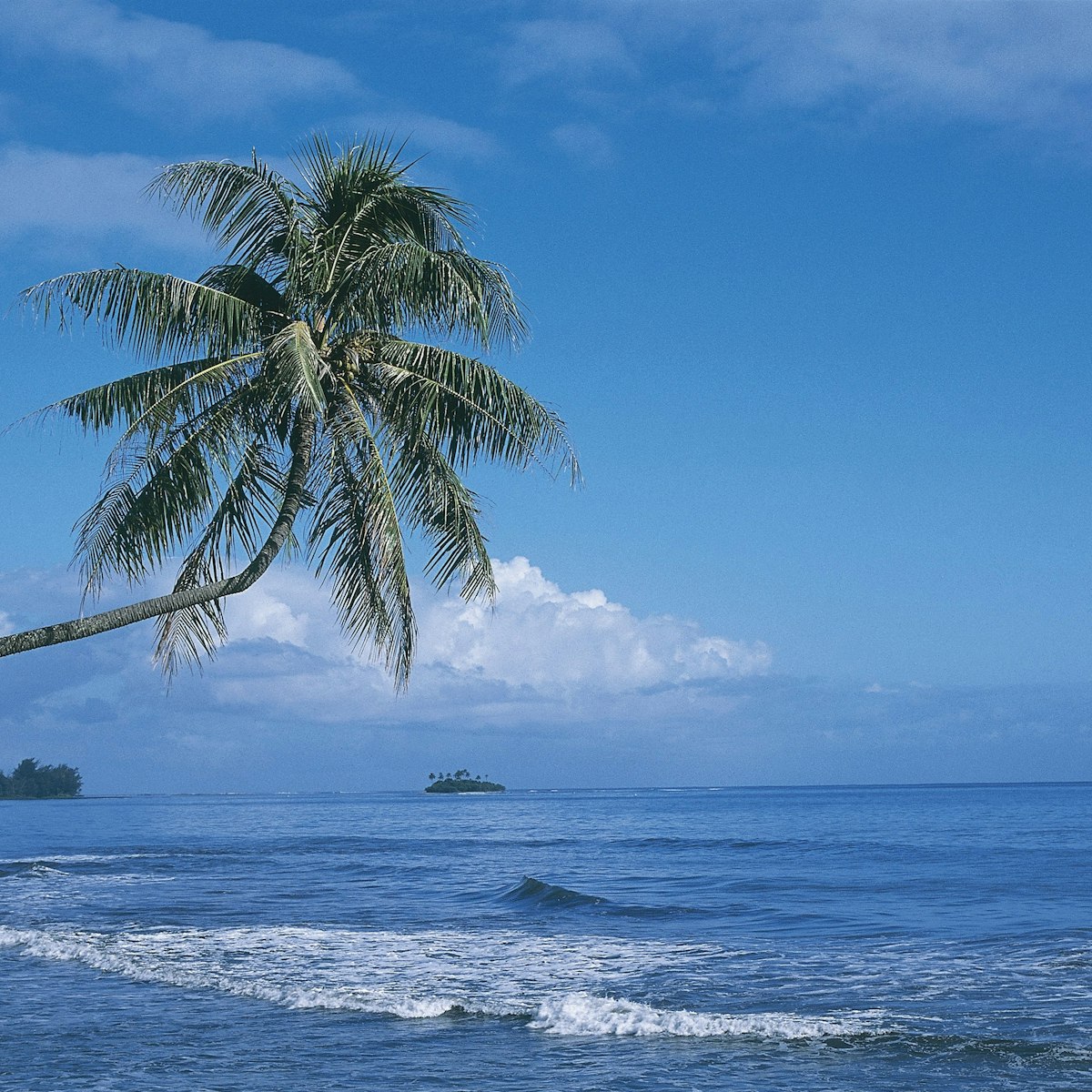
Around Tahiti Nui
There’s a popular surf break just before the headland that signals the start of the small village of Papenoo. A long bridge crosses the Papenoo River at…

Pointe Vénus & Matavai Bay
Part of Captain Cook’s mission on his three-month sojourn in 1769 was to record the transit of Venus across the face of the sun in an attempt to calculate…

Administrative District
The Territorial Assembly and other government buildings occupy Place Tarahoi, the former site of the Pomare palace. The termite-riddled 1883 palace was…

Bain de Vaima & Vaipahi Spring Gardens
Bain de Vaima (Vaima Pool) is where locals come from all over to bathe in the icy but exceptionally clear waters that are thought to have healing…

Strategically situated at the narrow isthmus connecting Tahiti Nui with Tahiti Iti, the town of Taravao has been a military base on and off since 1844,…

Faarumai Waterfalls
Through the village of Tiarei where the road swoops around a black-sand beach, you’ll see a sign on the mountain side of the road for the exceedingly high…

Jardins Botaniques
The 137-hectare Jardins Botaniques has walking paths that wind their way through the garden past ponds, palms, a massive banyan tree and a superb mape…
Latest stories from Tahiti
Filter by interest:
- All Interests
- Adventure Travel
- Art & Culture
- Beaches, Coasts & Islands
- Food & Drink
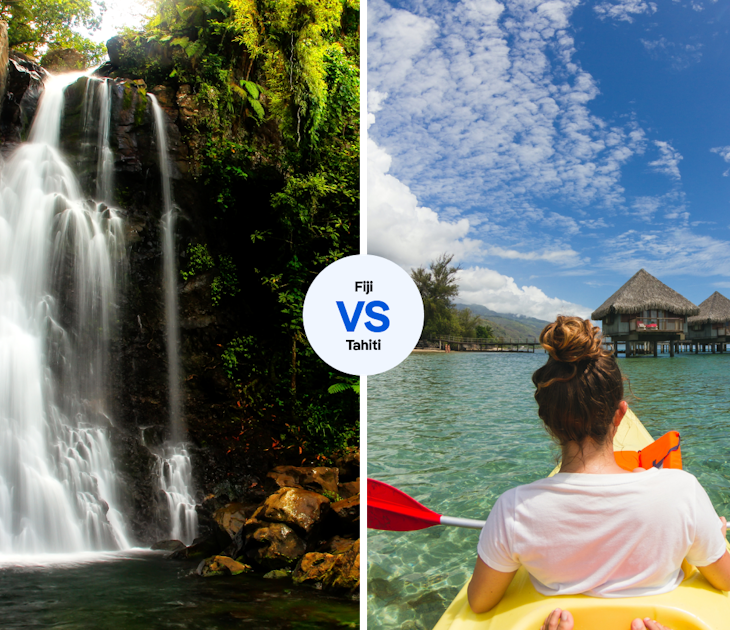
Jun 28, 2023 • 6 min read
It’s not easy to decide which idyllic island is for you. Which is why we asked two opinionated experts to make the case.

Oct 26, 2022 • 4 min read

Feb 2, 2021 • 2 min read

Aug 7, 2020 • 4 min read

Nov 18, 2019 • 6 min read

May 9, 2012 • 3 min read

Mar 15, 2011 • 3 min read
Mar 15, 2011 • 4 min read
in partnership with getyourguide
Book popular activities in Tahiti
Purchase our award-winning guidebooks.
Get to the heart of Tahiti with one of our in-depth, award-winning guidebooks, covering maps, itineraries, and expert guidance.
Tahiti and beyond
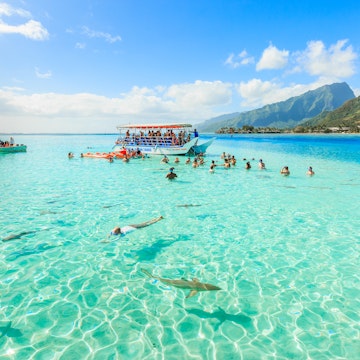
Accueil - Travailler avec nous - Pensées de voyage - Voyage famille - Envie d'écrire ? - A propos
Home - Travel resources - Family trip - Contact - About - Media Kit
Inicio - Contacto - Quiénes somos

- DESTINATIONS
- PHOTOGRAPHY
- LEARN PHOTOGRAPHY
- TRAVEL TIPS
- DREAM DESTINATIONS
When to go to French Polynesia? The best time to visit Tahiti
Last update : 03/12/2024
Our blog continues to grow thanks to you, our readers. This blog may contain affiliate links, which means we can earn a small commission if you make a purchase through them, at no extra cost to you. This helps us to continue to bring you more and support our work !
Are you planning to go to Tahiti in French Polynesia, or a trip to the Pacific Ocean for your next vacation? You are probably wondering when to go on your dream trip to French Polynesia ? What is the best time to go to Tahiti ? The subject is relevant given the damage caused by the IRMA hurricane on the Caribbean islands. Some websites will tell you that you can go on a year-round trip to French Polynesia. There is some truth in that, seeing as it is almost 25/30° (77-86 °F) all the time, but there is still an ideal time to visit this tropical paradise. The postcard “white sand beach / coconut trees / paradise island / blue turquoise lagoons / lush and tropical vegetation” is always more beautiful to experience in good weather, I can guarantee it!
For many, a trip to Tahiti is synonymous with honeymoon, luxury trip, scuba diving (snorkelling) trip or a great hotel which offers overwater bungalows, etc. More and more, backpackers want to discover this way of life, and this part of the world with turquoise waters. For whatever reason that you want to stay in the French polynesian territory, there is an ideal time to visit Tahiti, the main island. Furthermore, depending on the itinerary you’ve planned in French Polynesia , the weather should be taken into account (I’ll discuss this below in the article).

Here are the elements to consider when you are deciding when to go on a trip to French Polynesia. The tricky aspect to consider is the archipelagos that you will visit, as the climate can vary slightly. To organize your trip, it is better to take into account all the points mentioned below.
Best time to visit Tahiti?
If you haven’t decided yet which places to visit, I recommend you to check our extensive post on the archipelagos and islands of French Polynesia . We give a lot of interesting information but also our opinion on the islands/archipelagos of the territory.
The climate in Tahiti, French Polynesia: a tropical warm oceanic climate
The climate in French Polynesia is, how can you say it… cool? Nice to live with? Easy? No, seriously, it’s ideal overall. When planning your trip, two things to consider are rain and, to a lesser extent, temperature . There are only two seasons (dry season and rainy season) on the Pacific territory.
- The Austral winter season (dry season) which roughly runs from April to November. Temperatures are milder in the Society Archipelago and Tuamotu (Tahiti, Bora Bora), about 20 to 23° (68-73°F), and colder on Australes/Gambier archipelagos (South). The Marquises are still relatively warm during this period (even if these are the coolest months). It is the driest, least humid season, and the period of trade winds, especially from July to September. In most cases, you will avoid heavy rains, even if they are still possible,

- The rainy season is between November and April. Whatever the polynesian archipelago, it is the wettest season, with the exception of the Marquesas Islands, which have a shifted climate regarding rainfall (rainy period between March and August). It is also the hottest and wettest period, especially from December to February. This is the best season for mosquitoes , so be careful!

The rainy and hurricane season
To choose the best time to come to French Polynesia, the most important thing to consider, in my opinion, is the rainy season. As in all the tropics, there is a particular rainy season.
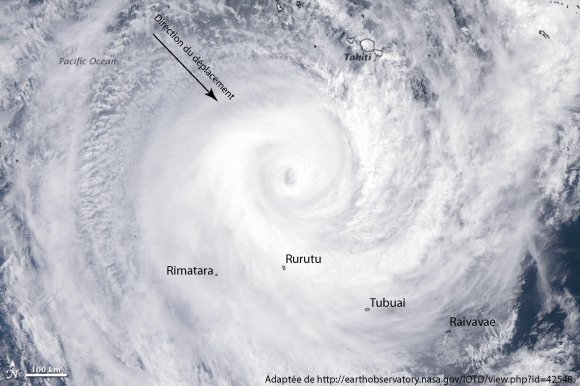
In French Polynesia, the months from November to March in general, have the most rain. In addition, the risk of hurricanes in French Polynesia is particularly high from December to April (an average of 3 to 6 hurricanes over this period). I would therefore advise against coming during the entire hurricane season in French Polynesia if you can avoid it. In my opinion, it’s the worst time to visit French Polynesia .
Whale season
Another element to consider when travelling to French Polynesia is whether or not you want to see whales. The polynesian territory is known for a period that is favourable for cetacean observation, which lasts about 5 months. During this time, it will be possible for you to easily observe them during a boat trip, or even, when the conditions are good, to swim with them.

The whale season extends globally from July to November over the whole of French Polynesia.
If this is part of your childhood dreams, to swim with a whale, you should ideally plan your trip during these 5 months (and adapt your itinerary on the territory accordingly).
The best diving periods in French Polynesia
Coming to French Polynesia to dive is for many people a wonderful opportunity and often at the heart of their trip. It is also one of the elements to be taken into account, to a lesser extent, in determining the best time to visit Tahiti.
Overall, you can dive all year round in French Polynesia, without a problem. I dive more or less all year round, knowing that the water will be colder during the dry season, especially from July to September. It is windier during this period and the sea may be more turbulent.

During the cold period (June to October), grouper breeding and gatherings of manta rays are more frequent, especially in Tuamotu.
The peak season for hammerhead sharks in Tuamotu is between December and March (however this is the rainy season in French Polynesia, which can be delayed there).
The what? If you do not know the Heiva, it is a traditional French Polynesian event, composed mainly of songs and dances.

The event takes place every year in July in general.
I don’t know if this should fully influence your flight dates, but if you are interested in cultural events, it’s very nice to see!
The seasons in French Polynesia: some advice before leaving
I deliberately wanted to add a more personal note to the article. Whether you are coming for a scuba diving trip, a tailor-made trip, or a family vacation, these few points can be useful for you. Coming to Tahiti on holiday and learning about the climate is a good thing, but don’t forget the other islands. Here is some more precise information about the climate in Tahiti and the other archipelagos of French Polynesia. This can be useful for your trips from island to island:
- Tahiti Island, as most of Polynesia’s large high islands, has a windward coast (East Coast) and a leeward coast (West Coast). You should know that the West Coast is much less rainy in reality. The weather is very often fine in the morning, but in the middle of the day, clouds can quickly cling to the relief and result in heavy cloud cover in the afternoon, or even some rainfall. This is particularly true for the Tahiti peninsula (which is not green for nothing). You will also find many more fine sandy beaches on the West Coast, perfect for sunsets.
- Moorea also remains green and lush, especially inland and in the mountains (3000 to 5000m).
- For the Leeward Islands (Huahine, Raitea, Tahaa, Bora Bora, Maupiti), it is the same principle where one coast is always wetter than the other. The less relief there is generally, the less precipitation there will be,
- Tuamotu (the majority of atolls) are generally less rainy than the rest of French Polynesia (average of 1500 mm/year),
- Further south, the Australes Archipelago has a colder tropical climate. Rainfall is distributed evenly over the year. Between May and September, it can be very cool (less than 15°C – 59°F). Be careful to bring sweaters during this season,
- Finally, the Marquesas, 1500 km north of Tahiti, are on the whole less rainy, but more humid. The rainy season is reversed and the majority of rainfall falls between May and July. Remember that the southern islands are more humid than the northern awnings, which are supposed to be drier.

Les Deux Pieds Dehors – Mélanie & Sylvain
Hi, it’s Mélanie & Sylvain ! We have been living in French Polynesia for many years! Are you looking for a local agency to organize your trip, an advice on your itinerary, a precise opinion on your trip ? Don’t hesitate to contact us , we will surely be able to help you!
Well, when is the best time to go to Tahiti after all?
In any case, I generally recommend people the off-seasons, and especially the months of May/June and September/October . For me, this is the best time to go to Tahiti . This way, you avoid the usual high temperatures, with rains and hurricanes, and enjoy the whale season and manta ray gatherings!
Here, I hope I have guided you a little bit on the best time to visit Tahiti for your trip. For me, the weather in Tahiti seems to me to be an important criterion for a trip there. If you have any doubts about the period or any particular questions, please do not hesitate to leave me a comment at the bottom of the article, I will be happy to answer them.
If you are preparing your trip, don’t hesitate to take a look at our complete guide so you know where to sleep in French Polynesia ! It includes all our good local addresses!
See you soon,
Despite our care, a mistake may have slipped into this article. If you find any, please don't hesitate to let us know so we can correct it as soon as possible and keep our information up-to-date!
Did you liked the post? Follow us!

You may also like

Hi, I already booked my dream Cruise around the Islands with small ship Psul Gauguin starting in middle of January 2024 – should I be worried of hurricane? How osten does this happen? Please get back to me. Kindly, Monica
Hi Monica, that’s great news, you’re going to love it. Hurricane are not so current in fact in French Polynesia. But it can happen. Sadly, I can’t predict them, nobody can…
Leave a Reply Cancel reply
Your email address will not be published. Required fields are marked *
Post comment
This site uses Akismet to reduce spam. Learn how your comment data is processed .

We provide information and resources for travelers from around the world. If you are looking for a way to get more from your travels,then you came to the right place.Our goal is to assist you with planning your next vacation,whether it’s a trip to the beach,a weekend camping trip,or a business trip to Asia,Europe or South America.
Contact Info
Best time to visit tahiti: when to go and when to avoid.
- by Lauryn Cunningham
- May 2, 2023
- 10 minutes read
- 11 months ago
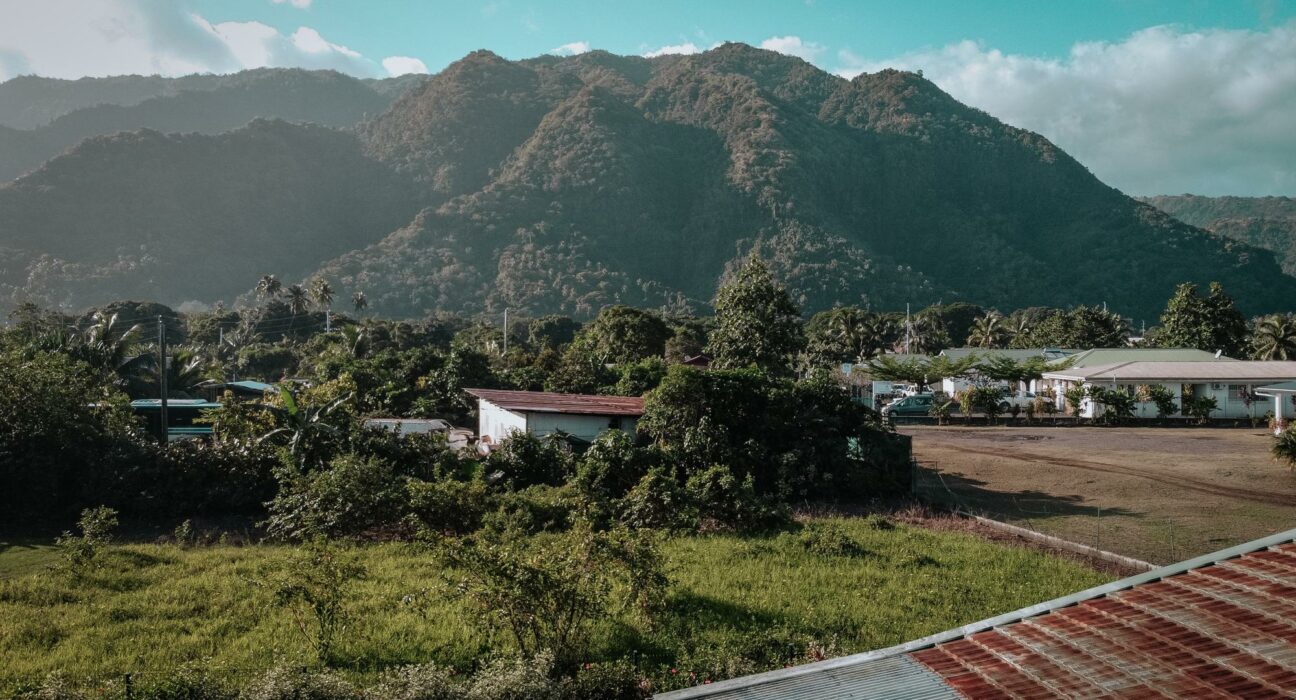
Summary. During the winter months (April to October) the climate is dry and the temperatures are mild. This is the best time to go for outdoor activities such as snorkeling, diving, and surfing. The tourist season runs from November to March, with temperatures being higher and more rainfall. This time period also coincides with the island’s signature events such as Heiva i Tahiti and Teahupo’o Surf Festival . To get the best prices, travel during the shoulder season (August and September). Avoid the wet season from November to April as this is when the majority of the rainfall occurs.
Are you dreaming of a blissful and paradise-like escape to a tropical destination such as Tahiti? If so, you’ve come to the right place! In this article, we’re excited to introduce you to the perfect set of tips and tricks for when to best visit this picturesque destination. So grab your beach umbrella, your hat and sunglasses and prepare for the ultimate Tahiti travel guide! We all know that Tahiti is the perfect escape for the weary traveler, but when is the best time to visit?
So get ready to find out all the details, as we embark on an exploration of the best time to visit Tahiti! Imagine being surrounded by soaring peaks and lush rainforests, with vibrant coral reefs and tranquil shorelines. Add a dose of delicious local food and a sprinkle of beautiful sunsets and you’ve got a recipe for the perfect tropical getaway. When is the best time to visit Tahiti?
The weather is at its finest during this period, with temperatures ranging from the mid 70s in April to the high 80s by September. The warmest months are January and February, with temperatures reaching an average of 90 degrees Fahrenheit. If you’re looking for a more economical holiday, you may want to visit Tahiti between November and March. During this period, you’ll find it’s a bit rainy, but also a bit cheaper as far as accommodations and flights are concerned. Plus, you may even find yourself with fewer crowds than normal, allowing you to relax and get to know the culture even better.
Worst Time Of Year To Visit Tahiti
Most popular month to visit tahiti, things to know before going to tahiti, why you should visit tahiti, last words for end, frequently asked questions (faqs), best time to visit tahiti: when to go and when to avoid.
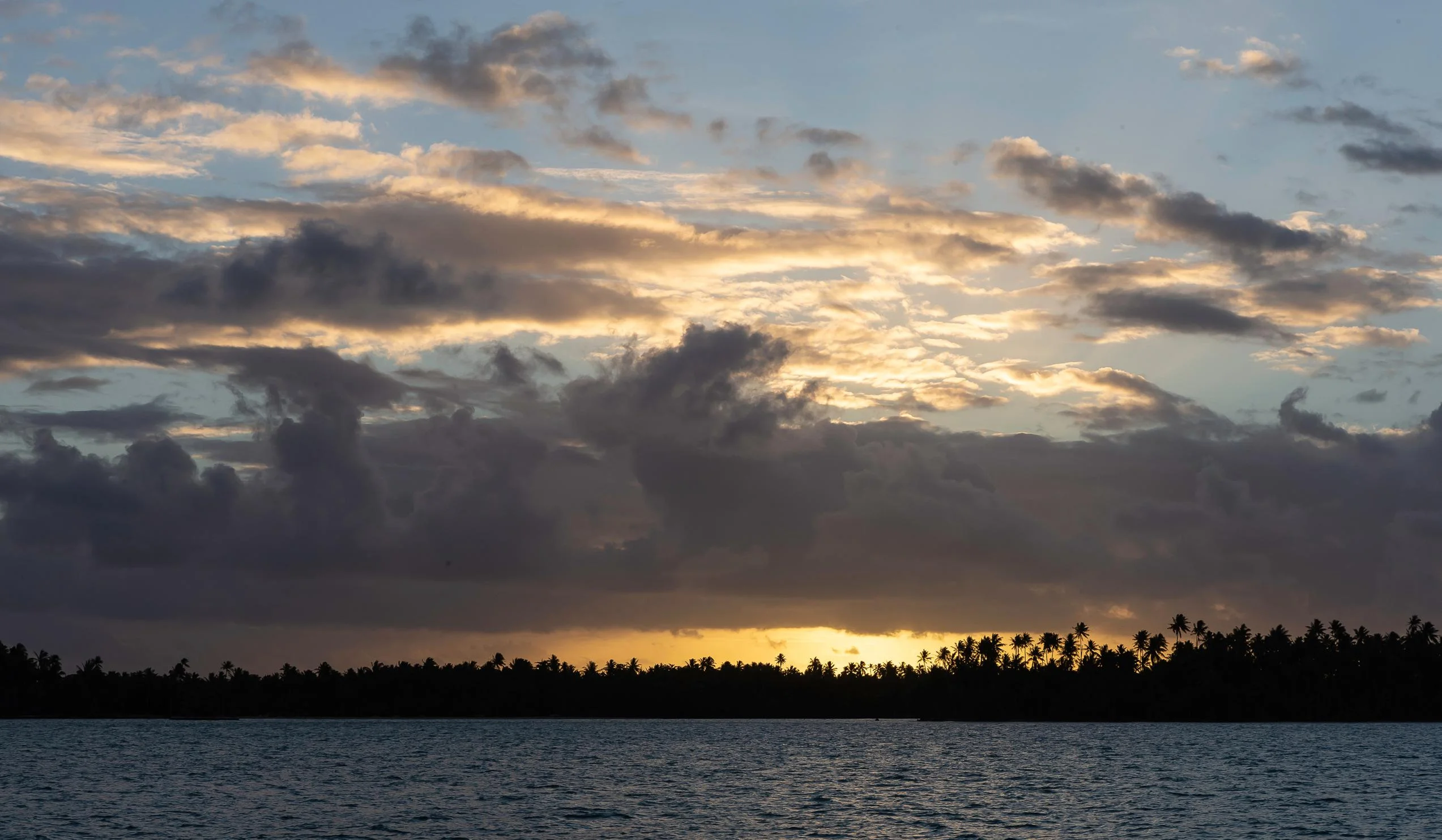
The magnificent island of Tahiti, sometimes known as the “Crown Jewel of the Pacific,” is a haven of serenity and beauty. With its clean seas, white sand beaches, and lush jungle walks, it is the perfect vacation spot, which explains why so many visitors come to the island every year. However, when is the ideal time to travel to Tahiti? The island’s tropical environment ensures favorable weather throughout the whole year. The weather, pricing, and activities on the island might fluctuate throughout particular times of the year, frequently as a result of seasonal variations.

The months of April through October are the ideal for traveling to Tahiti and making the most of your stay. The weather is often at its finest around this period, with temperatures averaging 22 to 28 degrees Celsius and plenty of sunlight, making it ideal for all your favorite summertime activities. The sun’s rays are intense, therefore it’s important to protect your skin. Pack sunscreen. May and June are often the months with the hottest water temperatures, so you can anticipate some ideal swimming conditions.
The largest festival on the island, Heiva I Tahiti , will provide lots of food, entertainment, and music to everyone. On the other side, traveling to Tahiti isn’t usually at its finest from November through March. Showers and increased humidity levels are more frequent at this period, so it’s wise to pack additional clothing in case the temperature drops. Additionally, because this time frame falls during the rainy season, it’s important to keep in mind that certain outdoor activities may be impacted by the weather.
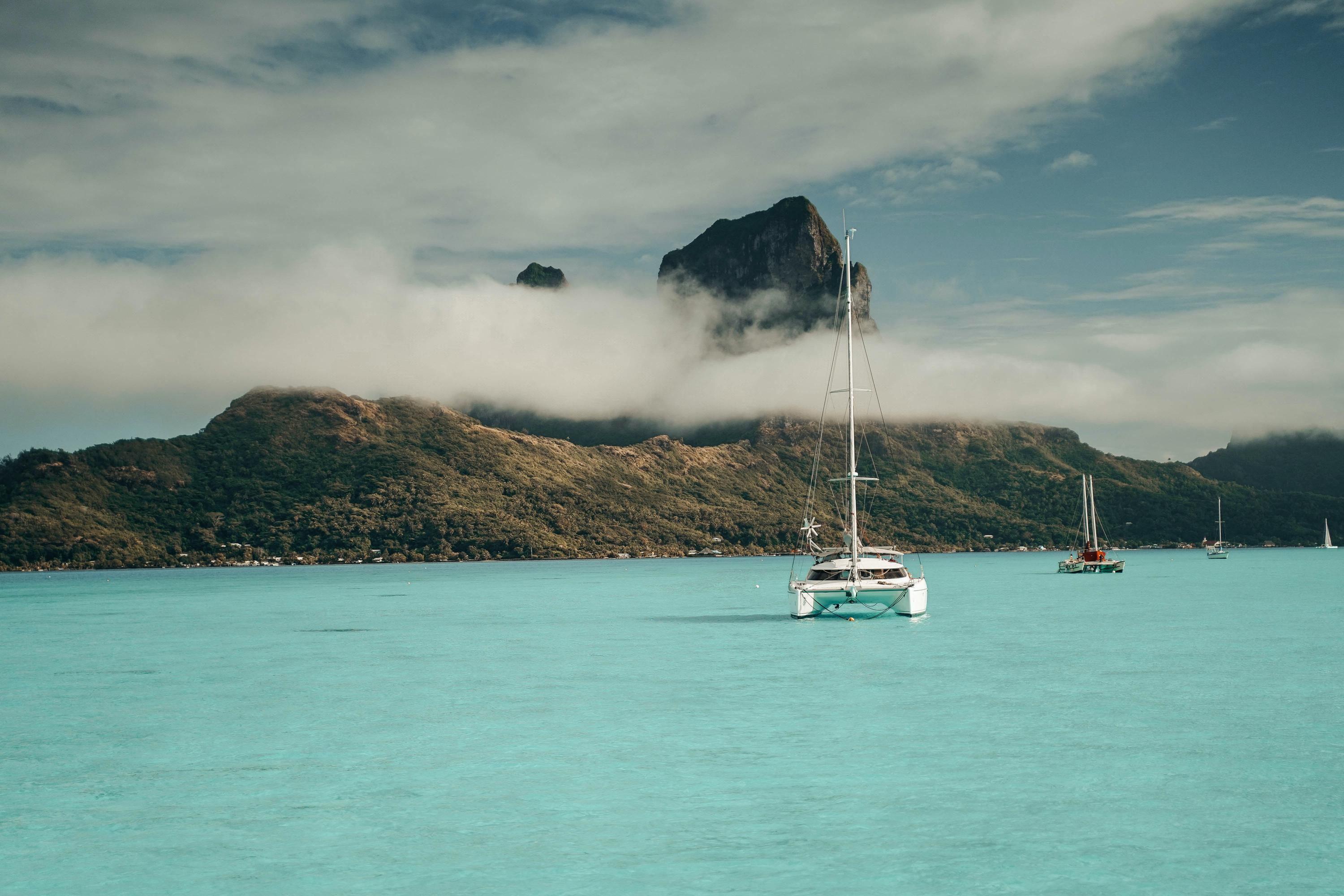
Even though Tahiti has many lovely features, traveling there isn’t always recommended. Before spending their hard-earned money on flights, hotels, and rental cars, tourists should be informed of the drawbacks despite the stunning surroundings, friendly locals, and vibrant culture. Travelers may maximize their time there and get the most value for their money by being aware of the best and worst seasons to visit Tahiti. In Tahiti, the summer months of June, July, and August are the busiest travel times. Sadly, these are also some of the least desirable times to travel.
Tahiti is in the tropics, thus there is not a sharp change in temperature like what many visitors from the mainland experience, even if winter temperatures may be colder. The summertime is the most expensive time of year to go to Tahiti due to increased prices as well as warmer temperatures and greater humidity levels. During the peak season, hotel rates are at their highest and finding flights without a reservation might be challenging. The island itself may also be overrun by the sheer volume of tourists, with crowded beaches and lengthy queues at popular attractions.
Tourists may take advantage of the lower temperatures and more comfort at this period. In addition, it is a cheap and relaxing time of year to travel due to much reduced airfare and accommodation costs. Also, there aren’t as many people around during the off-season. This allows visitors to each destination to take their time without feeling hurried or crowded.
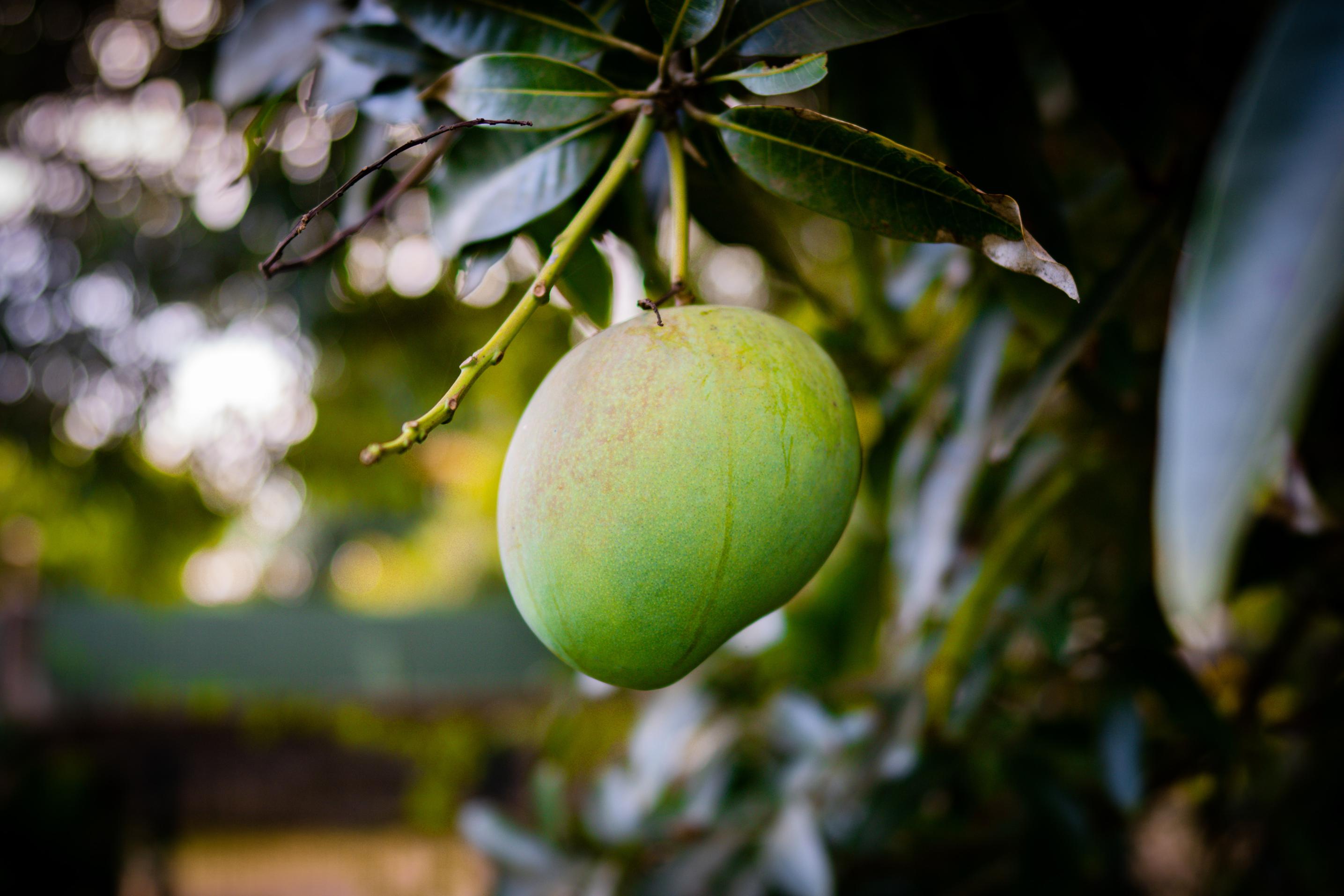
Tahiti is among the most stunning places on earth; the dense rainforests, intriguing animals, and sparkling lagoons all work together to create a paradise-like ambiance. But there’s more! What time of year is ideal for traveling to this place with a Polynesian feel , everyone wonders? The summer season, which runs from May to October, is when most people go to Tahiti.
You may still have lovely days with lots of sunlight and dry, pleasant weather even during the wetter months, which are December through April. The ability to take advantage of mid-season discounts, which often provide exceptional value for money, is another benefit of the summer season. Additionally, the lengthy days give you plenty of time to explore the island’s numerous stunning beaches and tourist attractions.
On the other side, if you’re seeking for a more laid-back, off-the-beaten-path experience, the less busy months of October to December and April are fantastic. Although the weather is still pleasant, you might discover that prices have significantly decreased. It’s important to keep in mind that the windy season, which runs from August to October, may be the ideal time to enjoy Tahiti’s renowned surfing. While many exotic birds and sea turtles lay their eggs in the winter (January to March), this is the best time to travel if you want to see wildlife.

Dreaming of escaping to Tahiti’s tropical paradise ? There are a few crucial factors to take into account when booking your travel. The ideal time to visit is one of the most important factors. You can spend extra for your airline tickets, lodging, and activities if you schedule your vacation for the incorrect time of year, and you might miss out on some of Tahiti’s best attractions.
The best time of year to visit Tahiti, however, will depend on your travel priorities, your financial situation, and whether you prefer the cooler, drier season or are more interested in going during the hotter, rainier months when some of the best surfing conditions for expert surfers are present. Typically, April through October is the best season to visit Tahiti for sun, mild weather, and less tourists. In contrast to North American summer months, when many tourists swarm to the area, the weather is constant, the surf is soft and excellent for learning, the ocean temperatures are suitable for swimming, and there are less visitors during this time.
While it may be simple to find lodging and flights to Tahiti in the winter, the bad weather may limit how much time can be spent outside. If you want to stay somewhere cheaper and are flexible with your plans in case the weather changes, this is a perfect choice. Even though the months mentioned above are the most suitable for visiting Tahiti, there are still other aspects to take into account when deciding when to go on vacation. For instance, experienced surfers go from all over the globe to Tahiti for its world-class waves, yet some of the Atlantic-derived swells might be too powerful for beginners and intermediate surfers.
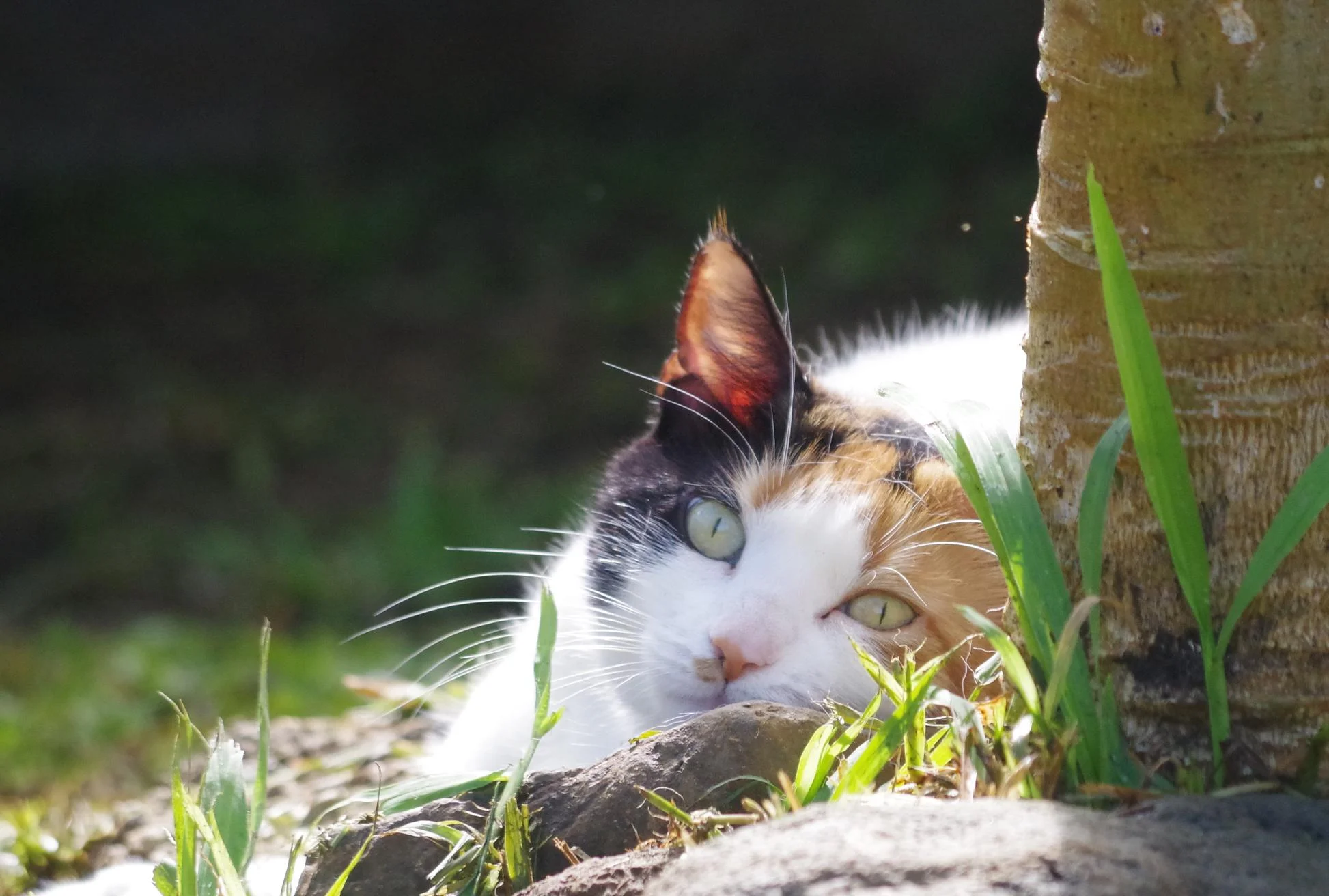
Many individuals have travel dreams that take them to the beautiful Polynesian island of Tahiti. The South Pacific islands of Tahiti, which are close to the equator, provide tourists with a range of activities, from relaxing in the clear sea to hiking through a tropical jungle to learning more about the island’s fascinating history and culture. But when is the ideal time to travel to Tahiti and steer clear of some of the busier times? Due to their proximity to the island’s warm and humid summer, the months of July and August are the busiest and most well-liked for travel to Tahiti.
Of course, it also implies that lodgings like hotels and resorts are often full and that airfare may be more expensive. So it might be worth considering a trip to Tahiti in June or September if you’re looking for a more tranquil time there. The islands are still drenched in sunlight between June and September, but the crowds are normally less and the costs more reasonable due to the somewhat cooler temperatures, which typically reach 24 to 27 degrees Celsius.
But before you make a reservation, consider these suggestions to maximize your time in Tahiti . When choosing the best time to travel, keep in mind that the tropical storm season begins in September and can occasionally last into December or even January. It is definitely better to avoid traveling at this time as the weather may be unpredictable and strong storms can occur.
Tahiti is the paradisiacal tropical island that’s on the ultimate bucket list of many travelers. It’s an island where hibiscus-strewn beaches, bright lagoons, swaying palms and mountainous vistas bring escape and repose. But when is the best time to visit Tahiti? The answer depends on what you’d like to get out of your vacation. Are you simply seeking to bask in the sun on a beach all day? Perhaps you’d rather go swimming in the beautiful lagoon, explore the island on a 4×4 tour or hike up waterfalls? Would you like to enjoy fresh cultural experiences, discover historic sites or find lively places to go out at night? No matter what you’re looking for in your Tahiti vacation, the perfect time to visit largely comes down to the weather and seasonality.
The best time to visit Tahiti is during the season of the ‘Million Rainbows’ from November to April when temperatures are in the high 20s and there is little chance of rain. This is the peak season and can bring higher prices, however it is the ideal time to bask on the beach, and explore the island’s sights and activities. How about the shoulder and off-peak seasons?
These are periods of transition such as late April to May, September to early November and late November to December when the weather can be unpredictable and the islands can become crowded. If you fancy discounts on flights and accommodation, these are good months to visit, but consider taking a handy umbrella with you due to occasional downpours. Alternatively, why not avoid the crowds and unpredictable weather altogether by visiting during the wet season from May to September when temperatures can reach more extreme heights? Depending on how much you like the heat, it can be a pleasant time to visit.
So when is the best time to visit Tahiti? It all boils down to what type of experience you desire and are willing to pay. Consider the activities you’d like to try, the sights you want to explore and the kind of weather you can tolerate. Ask yourself these questions: Do you want to bask in hot sunshine or experience a romantic storm? Would you prefer to do some hiking or just soak up the local culture? Armed with these answers in your pocket, you can make your dream of visiting Tahiti a reality.
Does Tahiti have an off season?
During this time, the weather is usually wetter and cooler, and there are fewer tourists.
What is typhoon season in Tahiti?
Typhoon season in Tahiti typically runs from November to April.
Does Bora Bora have an off season?
The off season is typically from April to November, when the weather is more unpredictable and the prices of hotels and flights tend to be lower.
What is the best month to visit Tahiti?
This is also the peak tourist season, so the islands will be bustling with activity.
What are the rainiest months in Tahiti?
The rainiest months in Tahiti are December, January, February, March, and April.
Share This Post:
Lauryn Cunningham
Leave a reply.
Your email address will not be published. Required fields are marked *
Posts You Might Like

How To Plan A Vacation To Armenia

The Great Wall And Beyond: The Best Way To Plan

Ethiopia Bound: Your Complete Guide How To Plan Vacation To
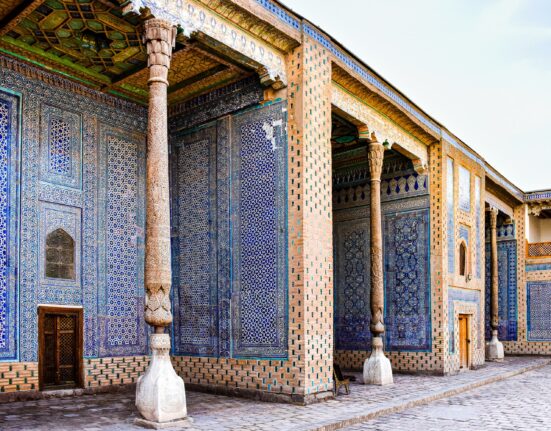
What Is The Best Month To Visit Uzbekistan?

How Safe Is Uzbekistan For Travel?

Things To Know Before Traveling To Uzbekistan
Celebrity Blog
- Choosing a Cruise
- Planning / Booking A Cruise
- Preparing For Your Cruise
- Special Occasions
- What To Expect On A Cruise
- Australia, New Zealand & the Pacific
- Central America
- East Coast & Bermuda
- Mexican Riviera
- South America & Antarctica
- Destinations
When Is the Best Time to Visit Tahiti?
By Sue Bryant
Last updated: January 30th, 2024
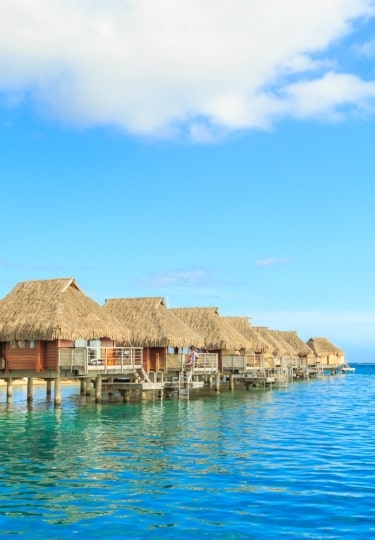
- Find a Cruise
The best time to visit Tahiti is the dry season, between April and October. The humidity is lower during these months, and skies are generally clear.
Yet there isn’t really a bad time to visit; temperatures are fairly steady year-round, with the annual average a balmy 80°F (26.8°C). The water temperature also remains fairly constant, ranging from a delicious 79.7°F (26.5°C) to 84°F (28.5°C) throughout the year. The main variation is in the humidity and the amount of rainfall.
Because of high mountains at its center, Tahiti experiences different weather from east to west. The west is more protected from the tradewinds and as such, receives considerably less rain.
Visiting Tahiti By Season
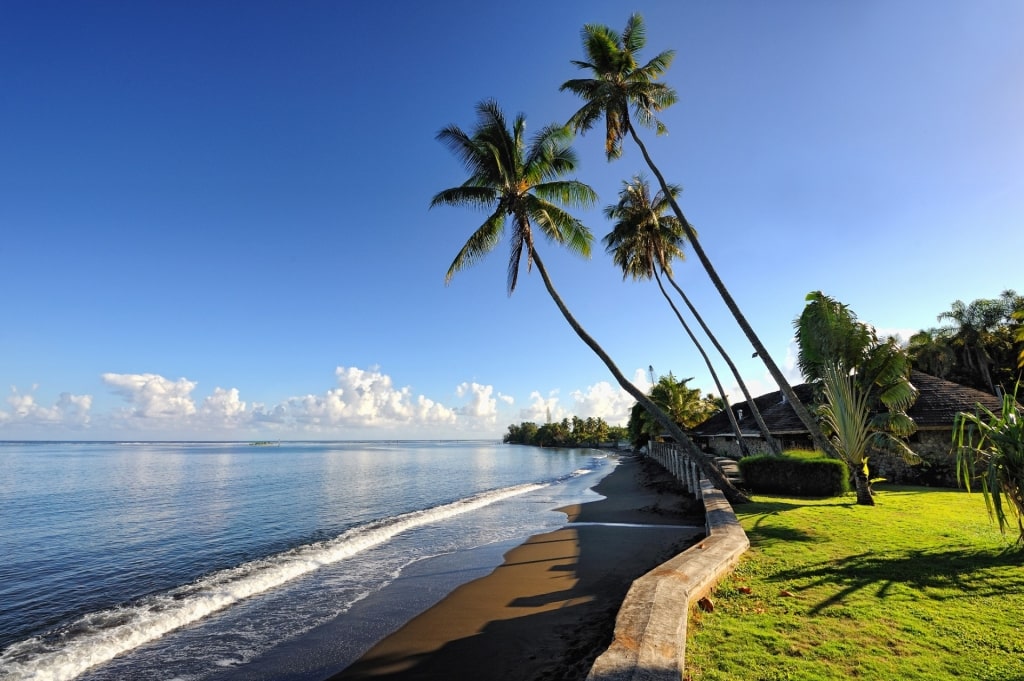
Beach in Tahiti
June, July, and August fall in the heart of the dry season, the austral winter and the best time to go to Tahiti. This is also the busiest time, with tourist season in full swing. Expect warm, sunny days and deep blue skies, with pleasantly mild temperatures at night and low humidity. The average daily temperature in July is 79.7°F (26.5°C).
The heat is tempered by the trade winds that blow from the east. Summer is also the best time for watersports in the tranquil lagoons around the islands.
September and October are regarded as shoulder season months in Tahiti. The humidity is starting to rise but is still tolerable. September and October are also two of the sunniest months of the year. Humpback whales are passing through as they migrate to Antarctica, so this is the perfect time to look out for them.
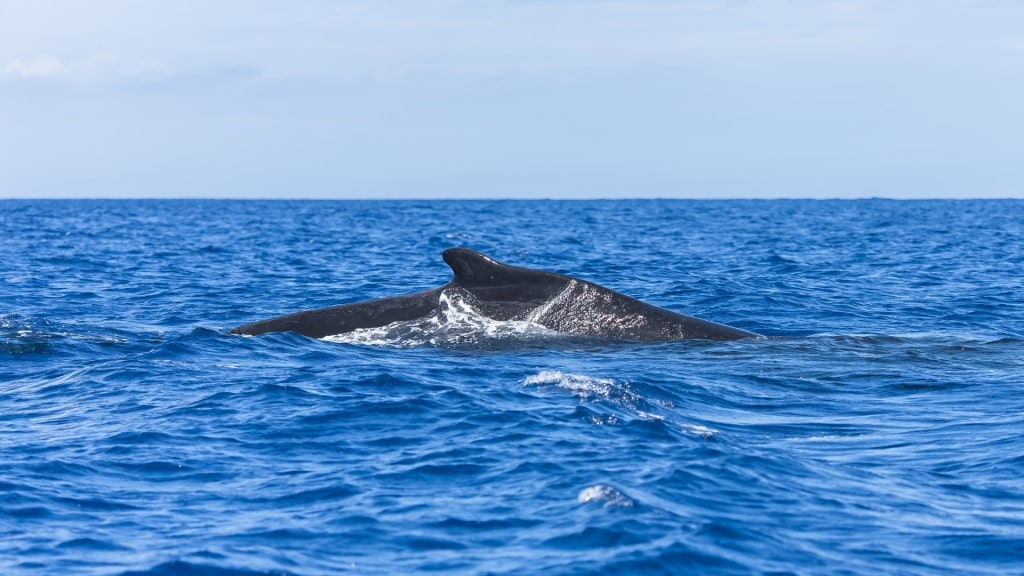
Humpback whale
November sees the rainy season begin, with an average rainfall of 4.5 inches (115mm), increasing significantly into December.
Read: Best South Pacific Islands
December, January, and February are hot and humid in Tahiti, with frequent downpours that clear the air. December and January see the highest rainfall, with 10 inches (255mm) and 10.4 inches (265mm) respectively.
The sultry nights are cooled marginally by a seasonal wind called the Hupe, which blows from the mountains down to the coast.
What those in the Northern Hemisphere regard as “spring” sees significant change in the weather in Tahiti. March is still hot and humid; in fact, it’s the hottest month, with temperatures averaging 82.6°F (28.1°C).
April, meanwhile, is considered a shoulder season month, with much lower rainfall than March, (an average of 4.5 inches, or 115mm, with rain on 10 days). This is a great time for surfing and hiking.
May is effectively the start of Tahiti’s “winter”, or high season, with much drier weather and cooler nights. From now until October, there’s relatively little rain.
When Is Rainy Season?
The rainy season in Tahiti extends from November to April. Heat and humidity can be intense and the days are marked by frequent short, sharp downpours. There are still periods of sunshine, though, so this is not necessarily a bad time to visit.
Bear in mind that the sheltered west coast, including Papeete, receives a little less rain than places on the east coast.
When Is High Season?
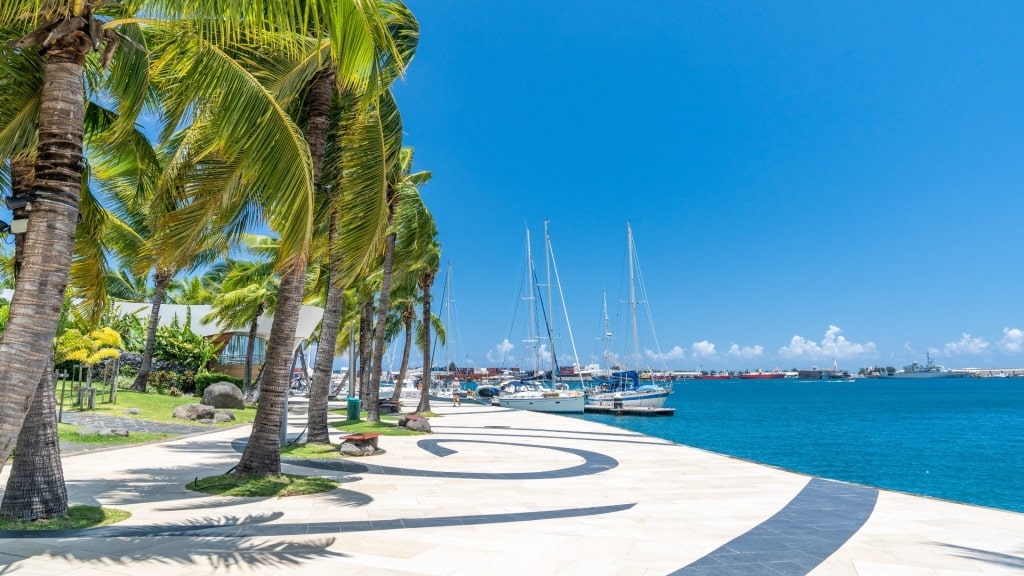
High season in Tahiti is the Northern Hemisphere’s summer months of June, July, and August. This is the cooler season, with lower humidity, clear skies, and much less rainfall; July, for example, brings just 1.4 inches (35mm) of rain.
When Is Shoulder Season?
Shoulder season in Tahiti is during the months of April, May, September, and October. By May, the humidity is dropping as the rainy season transitions into the dry season. September and October still see fine, sunny days and relatively low rainfall; in September, expect an average of 96mm of rain, rising to 140mm in October.
The spring equinox falls in September, with the rays of the sun bringing out the brilliant aquamarine of the lagoons and bays around Tahiti.
When Is Low Season?
Tahiti’s low season is from November to March, when the weather is hot and humid. It’s certainly still possible to visit during this time, and many people do, but you should expect intense humidity and frequent showers, with sunny spells in between.
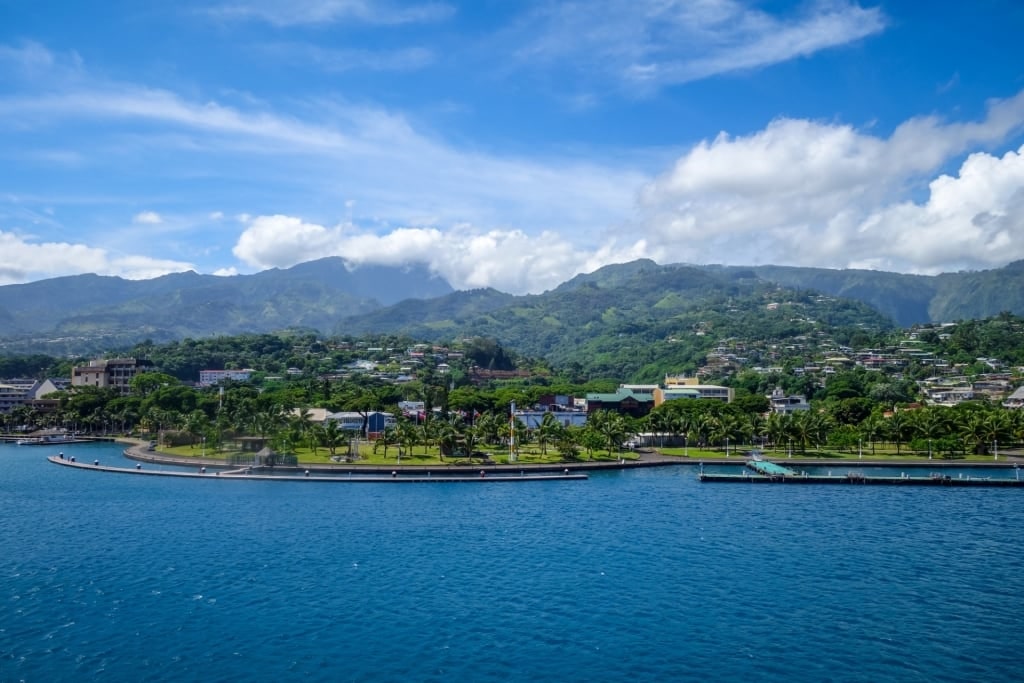
Experience the lush beauty of the island on a cruise to Tahiti with Celebrity. Browse itineraries and plan your tropical escape.
Sue has been writing about cruising for 20 years and is lucky enough to have sailed all seven continents. She lives in London, where she is cruise editor of The Times and The Sunday Times newspapers, as well as a freelance contributor to magazines and websites worldwide.
Related Itineraries
Tahitian Treasures
- 17 nights ON CELEBRITY SOLSTICE
- DEPARTING FROM HONOLULU, OAHU, HAWAII
- Starting from $1329 USD
- 18 nights ON CELEBRITY EDGE
- Starting from $1899 USD
- DEPARTING FROM SYDNEY, AUSTRALIA
- Starting from $2012 USD
- 19 nights ON CELEBRITY SOLSTICE
- Starting from $2160 USD
- 19 nights ON CELEBRITY EDGE
- Starting from $2901 USD
- Starting from $3105 USD
Related Articles
New Zealand Cruises: Discover the Majestic North & South Islands
9 Amazing Places to Go This Summer in Australia
15 Best Beaches in Australia
12 Best Beaches in Honolulu
11 Best Beaches in Auckland
11 Famous Australian Landmarks to Visit
10 Extraordinary Castles in France
13 of the Most Beautiful Places in Iceland
15 Fun Things to Do in Key West With Kids
10 Best Things to Do in Vancouver with Kids
Bahamas vs. Caribbean: Which Should You Cruise To?
Iceland vs. Greenland: Which Should You Visit?
Free Vacation Planning Services

CALL US 888-751-7804
Sign Up for Special Offers
- First Name *
- Last Name *
- Email Address *
- Country * Country Afghanistan Albania Algeria American Samoa Andorra Angola Antigua and Barbuda Argentina Armenia Australia Austria Azerbaijan Bahamas Bahrain Bangladesh Barbados Belarus Belgium Belize Benin Bermuda Bhutan Bolivia Bosnia and Herzegovina Botswana Brazil Brunei Bulgaria Burkina Faso Burundi Cambodia Cameroon Canada Cape Verde Cayman Islands Central African Republic Chad Chile China Colombia Comoros Congo, Democratic Republic of the Congo, Republic of the Costa Rica Côte d'Ivoire Croatia Cuba Curaçao Cyprus Czech Republic Denmark Djibouti Dominica Dominican Republic East Timor Ecuador Egypt El Salvador Equatorial Guinea Eritrea Estonia Ethiopia Faroe Islands Fiji Finland France French Polynesia Gabon Gambia Georgia Germany Ghana Greece Greenland Grenada Guam Guatemala Guinea Guinea-Bissau Guyana Haiti Honduras Hong Kong Hungary Iceland India Indonesia Iran Iraq Ireland Israel Italy Jamaica Japan Jordan Kazakhstan Kenya Kiribati North Korea South Korea Kosovo Kuwait Kyrgyzstan Laos Latvia Lebanon Lesotho Liberia Libya Liechtenstein Lithuania Luxembourg Macedonia Madagascar Malawi Malaysia Maldives Mali Malta Marshall Islands Mauritania Mauritius Mexico Micronesia Moldova Monaco Mongolia Montenegro Morocco Mozambique Myanmar Namibia Nauru Nepal Netherlands New Zealand Nicaragua Niger Nigeria Northern Mariana Islands Norway Oman Pakistan Palau Palestine, State of Panama Papua New Guinea Paraguay Peru Philippines Poland Portugal Puerto Rico Qatar Romania Russia Rwanda Saint Kitts and Nevis Saint Lucia Saint Vincent and the Grenadines Samoa San Marino Sao Tome and Principe Saudi Arabia Senegal Serbia Seychelles Sierra Leone Singapore Sint Maarten Slovakia Slovenia Solomon Islands Somalia South Africa Spain Sri Lanka Sudan Sudan, South Suriname Swaziland Sweden Switzerland Syria Taiwan Tajikistan Tanzania Thailand Togo Tonga Trinidad and Tobago Tunisia Turkey Turkmenistan Tuvalu Uganda Ukraine United Arab Emirates United Kingdom United States Uruguay Uzbekistan Vanuatu Vatican City Venezuela Vietnam Virgin Islands, British Virgin Islands, U.S. Yemen Zambia Zimbabwe

STAY IN THE KNOW
Thank you for subscribing.
See you on board soon.
Best Time to Visit Tahiti
Customers rate Zicasso's travel referral service 5 on a scale of 1 to 5 based on 1532 reviews on Trustpilot
We match you with top tour companies that specialize in the trip you want, whether it's a customized private tour or a group tour.
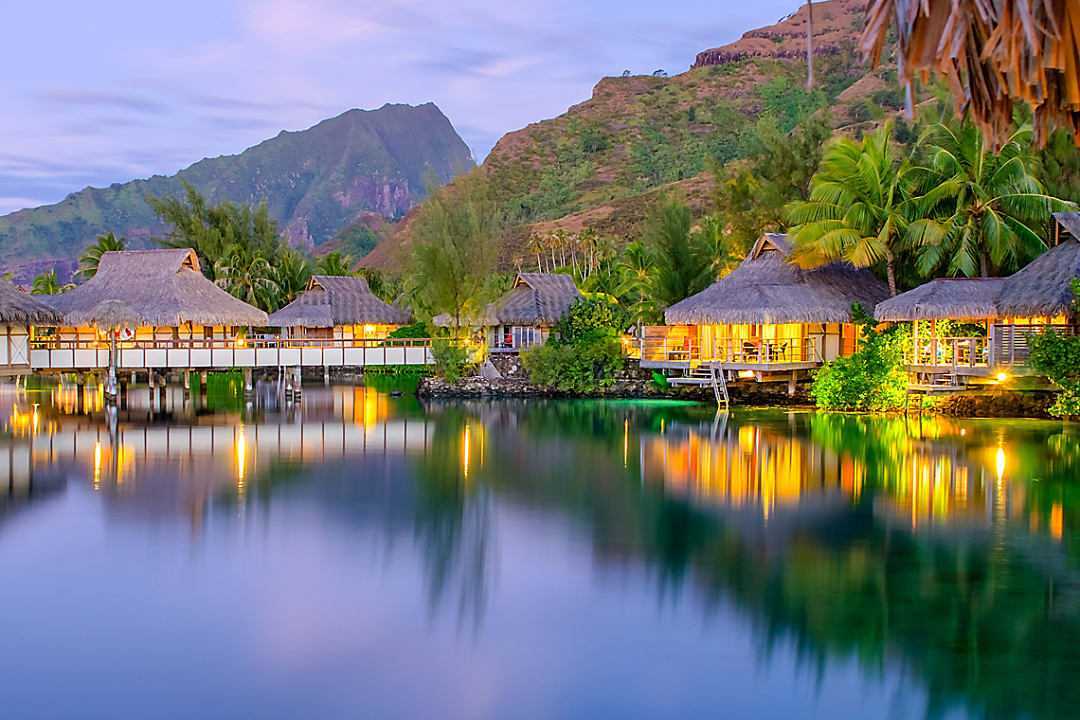
Tahiti Island
The best time to visit Tahiti is between May and October, the island’s dry season, when the weather is perfect for enjoying the beach and there is little rain.
Your ideal vacation dates will change depending on your travel preferences and expectations, but the dry season remains the best time to visit Tahiti for great weather and to escape the crowds. During these months travelers can enjoy the sun-washed beaches, crystal-clear seas, and illustrious atolls of the island and French Polynesia.
We share everything you need to know about the best time to visit Tahiti, depending on your preferred travel goals, who you will be with, and what you can expect from the French Polynesian island.
Best Time for Great Weather
Best time for families with children, best time to avoid the crowds, best time for couples or honeymooners, book for the best time in tahiti.

Tahiti on a sunny day
Best Months: May | June | July | August | September | October
The dry season months of May through October are the best time to visit Tahiti on vacation if you wish to enjoy great weather. During this time average temperatures range from the upper-60s to the mid-80s Fahrenheit.
These conditions are perfectly suited for beach getaways in the French Polynesian region and seaside experiences in Tahiti. You can stroll along the sun-kissed shores and look out across the sapphire sea without a single cloud in the sky as you soak up the tropical charms of Tahiti’s breathtaking beaches.
Expert Tips for Discerning Travelers

Tahiti is the perfect place for a tropical family vacation and the best time to visit the island for families with children is in the dry season of May to October.
The reason this time is particularly appealing to families with children is that there is less humidity than in the wet season. In saying so, outdoor adventures across the island and water sports on its spectacular beaches are comfortable for children of all ages.
By visiting during the fringe months of this season you can avoid crowds that typically gather between July and August.

Best Months: May | June | September | October
The best time to avoid the crowds on a vacation to Tahiti is during the months of May, June, September, and October. These fall within the popular dry season, but lie on the cusp of the peak travel season of July and August.
When traveling during these months adventurers can find quieter beaches to swim in the gorgeous seas, partake in thrilling island activities that are usually overrun with tourists, and enjoy the benefit of great accommodation and tour deals, as the Tahiti tourism industry looks to attract visitors.

Any time within the dry season of May through October will be the perfect time to visit Tahiti for couples or honeymooners. During this season the weather is superb and the sunshine will invite you to explore the island’s best beaches and hidden coves.
If you travel during the months of May, June, September, and October you will be treated to experiences without major crowds. During these months couples can embrace the pleasure of Tahiti when the sparkling shores are quiet, the island activities are free of overwhelming crowds, and the glamorous resorts offer incredible honeymoon specials.
Learn more: Best Tahiti Honeymoon Packages
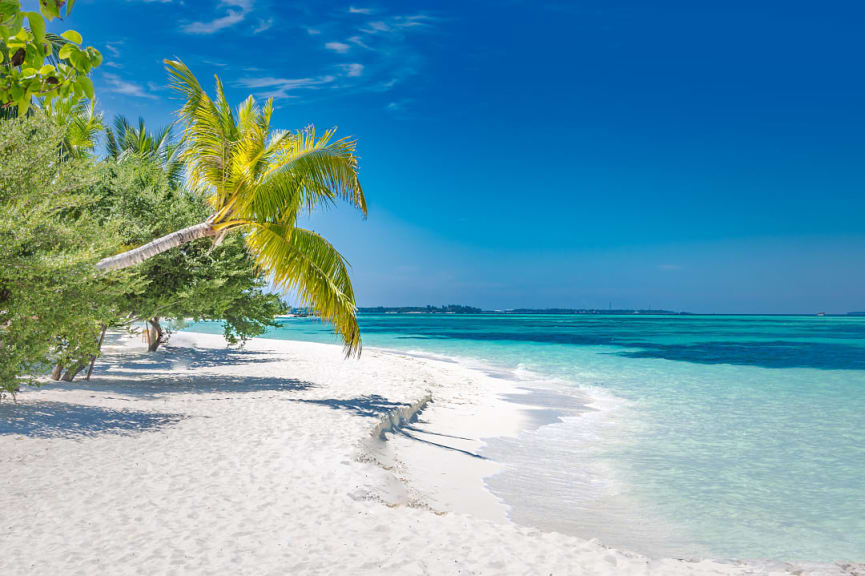
The best time to visit Tahiti on vacation is during the dry season months of May through October, when the weather is perfect for exploring the golden beaches, you can escape the immense crowds, and accommodations and tours offer reasonable packages and deals.
If you wish to spend your vacation on the sunbathed beaches of Tahiti, then check out our sample itineraries on our Tahiti Vacations or chat with a Tahiti travel specialist to learn more. Feel free to learn more about planning your custom trip by calling us at 1-888-265-9707 to speak with a Travel Care Specialist about your tropical getaway to Tahiti.
Your Dream Vacation
in 3 simple steps
Describe your dream trip
Get matched with top travel specialists
Book the trip
Help Me Plan My Trip
Free service - no credit card required
Get Top Travel Specialists to Help Plan Your Trip

- Non classé 2,869

When to go to Tahiti: The best time to visit the island

Introduction
Tahiti is one of the most exotic and sought after destinations in the world. An island of incredible natural beauty, with a fascinating culture, delicious cuisine and a friendly atmosphere, Tahiti is an ideal vacation spot. But when is it best to go to Tahiti? The answer mostly depends on your personal preferences and the type of vacation you want to spend. In this article, we will help you choose the best time to go to Tahiti.
The seasons in Tahiti
Tahiti is part of French Polynesia and as such has a tropical climate, characterized by two main seasons, the dry season and the wet season.
The dry season
From April to October, Tahiti is in the middle of the dry season, also called the cool season, a period which coincides with the southern winter. This is the ideal season to visit Tahiti if you want to enjoy mild and pleasant temperatures, between 21 and 29°C, and a dry and sunny climate, with little rain and heat.
The wet season
From November to March, Tahiti has its wet season, also called the hot season. During this period, temperatures rise to 34°C, and humidity is very high, with frequent tropical showers. It is also the season for tropical cyclones, which can sometimes disrupt holidays.
The best times to go to Tahiti
Although Tahiti is a year-round vacation destination, there are times that are more favorable to go.
March to April: the best season for whale lovers
March to April is whale season in Tahiti. Humpback whales come to breed and give birth in the warm waters of French Polynesia . This is the perfect time for a cruise aboard a boat to observe these giants of the seas.
June to August: the best season for scuba diving
June to August is the ideal season for divers. The waters are crystal clear and the diving conditions are excellent. You can discover an exceptional marine fauna, including species such as manta rays and sharks. The most famous dive spots in Tahiti are in Moorea , Bora Bora and Rangiroa.
October to November: the best season for surfers
From October to November, the waves are perfect for surfers. Tahiti’s most popular spots, like the Teahupoo pass, attract the world’s best surfers for international competitions.
November to March: the best season for fishing
November to March is the ideal time for fishing in Tahiti. The waters are rich in fish, especially tuna, mahi-mahi and marlin. You can try your hand at sport fishing or simply fish for your dinner.
Ultimately, there is no ideal time to visit Tahiti. It all depends on your vacation preferences. If you are looking to explore culture, cuisine and traditions , any time period will do. If you are looking for a particular activity, be sure to visit Tahiti during the ideal season. But whatever season you choose, you won’t be disappointed with this beautiful Pacific island.
When is the best time to visit Tahiti?
The best time to visit Tahiti depends on your preferences. However, from April to October is the ideal season to visit Tahiti if you want to enjoy mild and pleasant temperatures, and a dry and sunny climate, with little rain and heat.
When is whale season in Tahiti?
The whale season in Tahiti is from March to April. This is the perfect time for a cruise aboard a boat to observe these giants of the seas.
When is the best season for diving in Tahiti?
June to August is the best season for diving in Tahiti. The waters are crystal clear and the diving conditions are excellent.
When is the surf season in Tahiti?
October to November is the surf season in Tahiti. The waves are perfect for surfers.
When is the best season for fishing in Tahiti?
November to March is the best season for fishing in Tahiti. The waters are rich in fish, especially tuna, mahi-mahi and marlin.
2024 Olympic Games in Tahiti: The surfing event on the Teahupoo wave

What are the hidden treasures of the village of Tahiti to discover absolutely?

Vacationing in Tahiti: Explore the Polynesian paradise and revitalize your spirit?

Where are the best places to shop in Tahiti?

What are the marvels to discover in Tahiti Hyeres beach?

What are the essential charms of Tahiti beach in Saint-Tropez?

How to plan an unforgettable trip from Tahiti to Paris?

What is the richness and diversity of Tahitian music?

What does the mysterious Faa a acronym hide? Discover the fascinating story behind this enigmatic name!

How to invest effectively in real estate in Tahiti?

Who are the inhabitants of Tahiti and how do they live?

Club Med Tahiti: An all-inclusive tropical paradise?

How to draw the beauty of Tahiti like a professional artist?

What is the story behind the famous Tahiti Douche ad?

Is Tahiti a DOM or a TOM: What is its exact status?

Traveling to Tahiti: What are the secrets to taking advantage of the best prices?

What are the hidden charms of Tahiti beach in Corsica?

What are the unmissable secrets of Tahiti beach in Ramatuelle?

How to plan your plane trip to Tahiti?

Discover the wonders of Tahiti: What unique experiences await you on this trip?

How to travel to Tahiti without breaking the bank?

How to make the most of surfing in Tahiti?

Tahiti: Why is it considered a paradise on earth?

Discover the hidden treasures of Tahiti Homes: Does paradise really exist on Earth?
- Search Please fill out this field.
- Manage Your Subscription
- Give a Gift Subscription
- Sweepstakes
- Travel Tips
The Best Times to Visit Bora Bora for Good Weather, Lower Prices, and Incredible Whale Watching
Timing is everything.
:max_bytes(150000):strip_icc():format(webp)/patricia-doherty-2dd85666682c4f4fa708d02b4e4ac40e.jpg)
Best Time to Visit for Smaller Crowds
Best time to visit for good weather, best time to visit for lower prices, best time to visit for whale watching, best time to visit for cultural festivals, best time to visit for diving, snorkeling, and sailing, best time to visit for hiking, worst time to visit.
VV-pics/Getty Images
The South Pacific island of Bora Bora, one of the Society Islands in French Polynesia, is a tropical paradise. Surrounded by coral reefs and rising to an extinct volcano in its center, Bora Bora is known for its abundant marine life, white-sand beaches, gorgeous scenery, overwater bungalow resorts, and turquoise waters.
Year-round temperatures in Bora Bora fall between the low 70s and mid-80s. “April through October is Bora Bora’s high season, with exquisite weather for outdoor adventures and less humidity. This can be the busiest time, especially during the summer months, so for optimum weather with fewer crowds, choose April or May,” Emmanuel Richardet, general manager at The St. Regis Bora Bora Resort, tells Travel + Leisure .
The dry season (May through October) brings low humidity and very little rain, whereas the wet season (December through March) is hotter and more humid. Here's a breakdown of Bora Bora’s tourist seasons:
- High Season: May through October
- Shoulder Season: April and November
- Low Season: December through March
Before your book your overwater bungalow, here are some things to consider when planning a trip to Bora Bora.
M Swiet Productions/Getty Images
The rainy, humid months of December through March are less popular with tourists who typically seek sunny, dry weather. Visitors during this time might feel like they have the island to themselves. The exception is the year-end festive season — always a popular time in warm-weather destinations — when travelers come to celebrate the holidays and relax before the new year.
With fewer tourists during the low season, visitors can find secluded beaches, enjoy intimate dinners, and discover new experiences. “On a rainy afternoon, guests can take a French Polynesian cooking class or relax in our spa,” said Richardet. “When the weather breaks, there are magical rainbow views of Mount Otemanu.”
The weather during the dry months of May through October is warm, with low humidity levels and temperatures ranging between the low 70s and mid-80s. This is the perfect time for excursions to local villages or hikes on the island. Although the sunny weather attracts more visitors, it’s still possible to feel secluded in an overwater bungalow where you have a private outdoor area and the ability to swim right from your own deck.
During this time, snorkeling, diving, boating, sailing, and jet skiing are popular activities. Bora Bora’s marine life and coral formations are a major attraction for divers and snorkelers seeking stunning scenery below the surface, which includes eagle rays, bat rays, manta rays, leopard rays, sea turtles, a variety of sharks, and tropical fish.
Related : 29 Best Tropical Vacations Around the World
Claire Bates/Travel + Leisure
Smart travelers who want to save some money know to opt for the low season or shoulder season for their vacations. In a tropical destination like Bora Bora, where there are fairly distinct dry and rainy seasons, the wet months typically offer less appeal to tourists. To attract visitors during these times, resorts, airlines, and tour companies promote tourism with discounts and special deals.
The low season in Bora Bora (December through March) should be the focus for a budget-minded traveler, with the months of January, February, and March likely offering the best prices once the holiday season is over.
January is the rainiest month, but there’s the proverbial silver lining. “The low season is a great time to experience Bora Bora like a local and [be] immersed in the region’s rich culture,” Richardet told T+L. “Our cultural ambassador, Maui, shares stories passed down by his ancestors while teaching traditional Polynesian flower crown weaving and pareo making.”
The shoulder months of April and November combine off-season prices with a good chance of pleasant weather. April is a transition to the dry season, and November leads into the rainy season that typically starts in December.
Related : How to Plan the Perfect Bora Bora Honeymoon — With Overwater Bungalows, Snorkeling Safaris, and Scenic Flights
Johny Goerend / 500px/Getty Images
Humpback whales migrate north from around Antarctica to the warm waters of French Polynesia between the months of July and November. During that time, they give birth, nurture their young, and play in the waters around Bora Bora. In addition to humpbacks, you might see orcas, rorquals, and dolphins.
Organized whale-watching boat tours are available, and visitors often see the animals while on snorkeling or diving trips. Many of the whale-watching boats are equipped with hydrophones that give visitors the opportunity to hear the sounds of the whales communicating with one another.
Since the whales swim in Bora Bora’s lagoons close to the shore, they can often be seen from land, especially when they breach. With breaching, the whale lifts its body, leaping nearly entirely out of the water, creating a huge splash.
Michele Westmorland/Getty Images
In July — the peak of the dry season when temperatures are in the low 80s and nearly every day is sunny — a month-long celebration of French Polynesian culture takes place. Heiva I Bora Bora, set mainly in Vaitape, features music, dancing, singing, art, and traditional entertainment, as well as athletic competition. There’s a javelin-throwing contest, a coconut tree-climbing event, and an outrigger canoe race.
Shops are decorated with flowers, local handicrafts are displayed, and traditional foods are served. In addition, hotels and resorts offer special programming to add to the festivities.
Jeremy J Saunders/Getty Images
In May and June, the weather is clear and sunny. The waters during this time are calm and warm, with temperatures hovering around the low 80s, making it ideal for exploring the marine life and coral reefs with a diving expedition or snorkeling boat trip.
Mild trade winds keep the weather comfortable and create perfect conditions for sailing and kiteboarding. Winds typically increase during the following months, and viewing conditions may not be as clear.
June, July, and August — dry months with lower humidity and breezes to cool down after a challenging workout — are good times to tackle Bora Bora’s hiking trails. It’s advisable to trek with a guide or join a small group, both for safety and for gaining local knowledge about various points of interest.
The most popular hike is to the Valley of the Kings, about three hours of moderate effort. More difficult is the hike on Mount Otemanu. While most visitors are content enjoying Mount Otemanu’s scenic beauty from afar, avid hikers may want to get a closer look. They are rewarded with spectacular views of Bora Bora’s lagoons, lush landscape, and motus (islands).
Serious trekkers come to Bora Bora from around the world at the end of July to participate in the rigorous Raid Anei Bora Bora, a competitive hiking event that goes through jungle terrain.
If sunny weather is your top priority, you’ll probably name the rainiest month — January — as the worst time to visit Bora Bora. More than 12 inches of rain typically fall during this hot, humid month, and you most likely won’t have many days for sunbathing. However, some travelers might welcome an opportunity to relax and watch the rain fall as they read a book or listen to music in their luxurious bargain-priced overwater bungalow. To each his own, and really, there’s no bad time to be in Bora Bora.

Where Is Tahiti & Is It a Country?
B efore my first visit to French Polynesia, I had some questions about the region. Where is Tahiti? Is Tahiti a country, or is French Polynesia the country? And, is it part of France? There is a lot to know about Tahiti and French Polynesia before you visit – and I am going to cover all of it right here.
This might sound crazy, but Tahiti was never near the top of my travel list. If you’ve been here for a while, you know I frequent the deserts of the world more than the beaches.
But when I got a crazy flight deal to visit Tahiti, I knew I couldn’t pass it up.
Since it was a last minute trip, that meant I needed to quickly research where Tahiti is on the map and what I needed to know about island hopping and flying to the island.
To make it easier for you , here I will share some facts about if Tahiti is a country, where Tahiti is located, the island geography, and more. Let’s get into it!
Planning a trip? Check out these top Tahiti tours and transfers!
Tahiti Island Crossing Tour :
Check out Tahiti’s stunning beaches, rugged mountains, and lush rainforest on this 4×4 vehicle tour! Swim in the natural pools and discover Tahiti’s many waterfalls on this action packed day.
BOOK YOUR TOUR HERE!
Private Roundtrip Airport Transfer
Get to and from the airport with east on this tor rated roundtrip private airport transfer from Tahiti’s airport.
BOOK YOUR TRANSFER HERE!
Where Is Tahiti?
Tahiti is located in the South Pacific Ocean, roughly the same distance south of the Equator as Hawaii is north of it. Tahiti sits halfway between California and Australia, and its closest neighboring country is the Cook Islands .
Specifically it lies between Latitudes 7° and 27° S and Longitudes 134° and 155° W.
Is Tahiti a Country?
Tahiti is not a country. Rather, it is a single island within French Polynesia, which is an overseas collective of France.
Everyone who visits French Polynesia will likely visit Tahiti too, at least as a stopover. The main entry point into the country is through Fa’a’ā International Airport, located in the country’s capital city of Papeete, Tahiti.
Is French Polynesia a Country?
Technically speaking, French Polynesia is an overseas collectivity of France, and not a country. This means that it is not an independent nation-state with its own government. Rather, international affairs are handled by France on behalf of the islands.
However, for travelers, entering French Polynesia will be just like arriving at any international country. French Polynesia does have autonomy when it comes to matters such as infrastructure and tourism.
Millions of visitors visit French Polynesia each year to explore the amazing island of Tahiti , the hiking trails of Moorea , and the pristine beauty of Bora Bora .
Although French Polynesia has been socially and economically autonomous since 1977, it still technically falls under French jurisdiction which makes it part of a larger entity rather than an individual nation-state.
Where Is Tahiti on the Map?
Use this interactive Google Map to explore Tahiti’s location on the map. Simply zoom out on this map of Tahiti to see its neighbors, near and far.
The 5 Island Groups
French Polynesia is made up of 118 islands and atolls spread across an area roughly the size of Europe. These islands and atolls are split into five island groups, or archipelagos of French Polynesia.
The five island groupings are called the Society Islands, Tuamotu Islands, Gambier Islands, Austral Islands, and the Marquesas Islands.
Tahiti is located within the chain of islands called the Society Islands, along with my favorite island, Moorea .
Out of the 118 Islands of Tahiti, only 65 of them are inhabited. The vast majority of the population – roughly 70% – lives on the island of Tahiti, and half of that population lives in the country’s capital city, Papeete.
Because of its size and infrastructure, Tahiti serves as the main hub of the region. It is well equipped with an international airport, sea port, reliable electricity and amenities, and the largest population.
You May Also Like: Tahiti vs. Moorea: Which is Better?
1. Society Islands
The most widely-visited of all five archipelagos is the Society Islands. this is likely because a) the international airport is located here, and b) it is the easiest and most budget-friendly island grouping to reach.
The Society Islands are home to the island of Tahiti and Moorea . Comprised of the Windward and Leeward Islands, the Society Islands are a true paradise for both beach-goers and adventurers.
2. Tuamotu Islands
East of the Society Islands sits 77 called the Tuamotu Islands. These islands are spread across roughly 930 miles of the South Pacific waters.
The Tuamotu Islands grouping forms the largest chain of atolls in the entire world. The beautiful lagoons, unique ocean wildlife, and pristine beaches make the Tuamotus unforgettable.
3. Gambier Islands
Nearly 1,000 miles southeast of Tahiti lies the Gambier Islands. Of the five archipelagoes, this is the the least populous and most remote area of French Polynesia.
Only 1,000 residents call the Gambier Islands home, and those that do are spread across 14 islands. Many of them live on the largest island of Mangareva.
4. Marquesas Islands
The lush Marquesas Islands are characterized by enormous green cliffs, rugged volcanic peaks and beautiful beaches. About 932 miles northeast of Tahiti, it takes roughly three hours to reach the Marquesas by plane.
Those who make it here will find untouched island nature, not unlike Moorea – but much less touristed.
5. Austral Islands
The Austral Islands are located on the Tropic of Capricorn, south of the Society Islands.
As the southernmost boundary of French Polynesia in the Pacific Ocean, these islands offer a slightly cooler climate. With an abundance of nature and wildlife, the Austral Islands have a distinctly otherworldly feel.
Here, you can experience once-in-a-lifetime whale watching adventures, discover archaeological relics, and much more.
Where Is Tahiti – Time Zone Information
Contrary to what you may have guessed, most of the Islands of Tahiti are in the same time zone as Hawaii. Personally, I had thought French Polynesia would have been across the international dateline from the USA, but that is not so.
Tahiti Time (TAHT) is 10 hours behind Coordinated Universal Time (UTC) – (GMT-10), which is 2 hours behind Pacific Standard Time or 3 hours behind during Daylight Savings Time.
So, it is very easy to visit from the west coast and does not require much of a time change at all!
French Polynesia does not observe Daylight Savings Time.
Tahiti Travel
If you are considering visiting the gorgeous islands of French Polynesia, here is some information that will help you plan you trip.
How to get to Tahiti
Visitors to French Polynesia will all fly into Tahiti from the United States, or elsewhere. Then from here, you have the option of either exploring Tahiti’s many things to do or moving on to other islands.
Most flights tend to land in the evening, making it almost impossible to leave Tahiti without spending at least one night here. But Tahiti is super fun to explore, so for me, that is not a problem!
The easiest island to reach is Moorea, via the Tahiti to Moorea ferry . And Moorea is more rural than Tahiti, so it feels lush, green and quiet in comparison.
My favorite part about Moorea were the many adventurous things to do, along with hiking Moorea ‘s trails and snorkeling in Moorea ‘s clear water beaches.
The next most popular, but much more pricey, island to visit is Bora Bora. Here, you have smooth white sand, shallow blue water, and a largely empty island.
This does mean you are forced to pay for hotel meal plans in most cases. But, the beauty is unmatched.
Safety in French Polynesia
French Polynesia is one of the safest countries to visit. I could feel that immediately, and I was visiting Tahiti as a solo female .
Check out this article for facts and statistics on Tahiti safety .
What to pack?
I have an entire article on what to pack for French Polynesia , but here are some basics.
- a couple of bathing suits so you can alternate and let them dry out every other day.
- your own snorkel gear – you won’t regret it!
- rugged trekking sandals for the hiking trails.
- don’t forget bug repellent wipes – a non-negotiable!
- reef-friendly sunscreen to keep the marine life thriving.
- a wide-brim hat (that’s the exact one I’m wearing in these pics!)
- pack a hydration backpack if you plan to hike at all.
- a foldable rain shell jacket , especially during the rainy season.
- packable travel towels , which are useful for the beach, waterfall, and hostels.
- a sturdy dry bag for boat rides, beach days, and rainy days.
- a waterproof action camera to document all of your experiences!
How far is Tahiti from…
Want to explore how far Tahiti is from popular or nearby locales? Then check out this list.
- Distance from Tahiti to Australia – 4,895 miles
- Distance from Tahiti to France – 9,881 miles
- Distance from Tahiti to Fiji – 2,794 miles
- Distance from Tahiti to Cook Islands – 2,174 miles
- Distance from Tahiti to Vancouver, Canada – 3,039 miles
- Distance from Tahiti to Toronto, Canada – 6,111 miles
- Distance from Tahiti to India – 9,283 miles
- Distance from Tahiti to South Korea – 6,532 miles
- Distance from Tahiti to New York City, USA – 6,274 miles
- Distance from Tahiti to Los Angeles, USA – 4,123 miles
- Distance from Tahiti to New Zealand – 2,651 miles
- Distance from Tahiti to Hawaii – 1,632 miles
- Distance from Tahiti to Samoa – 1,395 miles
- Distance from Tahiti to Japan – 6,008 miles
- Distance from Tahiti to South Africa – 9,065 miles
- Distance from Tahiti to Chile – 4,845 miles
- Distance from Tahiti to Singapore – 7,343 miles
Ready for Adventure? Subscribe Today.
Unsubscribe at anytime.
For anyone wondering where Tahiti is located and other geographical and political facts, check out the FAQs below.
Is Tahiti in the South Pacific?
Yes, Tahiti is an island in the South Pacific. It is part of the French Polynesian islands and is located south of the equator.
What is the largest island in French Polynesia?
Tahiti is the largest island in French Polynesia. It is part of the Society Islands grouping and spans across 403 square miles of lush island land.
Is French Polynesia part of France?
French Polynesia is technically an overseas collective of France. That means that it is not an independent nation-state but that international affairs are handled by France. However, it has been socially and economically autonomous since 1977.
Is Tahiti part of France?
Tahiti is one of the islands in French Polynesia, so it too it technically an overseas collective of France. Tahiti is the largest island in French Polynesia.
Is Tahiti a US territory?
No, Tahiti is not a US territory. French Polynesia is actually a French territory, or “collective” as it is technically called. The United States has no power or bearing over Tahiti and French Polynesia.
Is Tahiti in Hawaii?
No, Tahiti is not in Hawaii. Tahiti is not part of the United States. It is located south of the equator, and Hawaii is located north of the equator.
Is Tahiti very expensive?
While Tahiti is not known for being cheap, there are ways to travel French Polynesia on a budget . Some islands are more budget friendly, and others carry a high price tag.
Is Bora Bora the same as Tahiti?
Bora Bora and Tahiti are not the same. They are two separate islands within the same archipelago, and both are part of French Polynesia.
Final Thoughts: Where is Tahiti?
I hope that this article has cleared up exactly where Tahiti is located on the map and what country it is part of!
Tahiti, Moorea, and the rest of French Polynesia are absolutely breathtaking. This is one of the most pristine and untouched areas on earth, particularly on the more remote islands.
If you have the chance to visit Tahiti and French Polynesia, be sure to check out the helpful travel resources below.
Looking for more French Polynesia planning resources??
- The Best Things To Do in Moorea
- The Tahiti to Moorea Ferry: A How To Guide
- A Complete Moorea Hiking Guide
- A Moorea & Tahiti Packing List
- Is Tahiti Safe? Solo Female Travel Tips
- Coco Beach Moorea: A Complete Review
- The Best Places to Snorkel in Moorea
- Tahiti vs. Moorea: Which is Better?
- Are There Sharks in Bora Bora?
- A French Polynesia Travel Guide
Pin Me for Later!
- Where Is Tahiti & Is It a Country?
- Visiting Dubai in Winter Guide [2023/2024]
- 35+ Unique Gifts From California in 2023
- 163 Being Alone Captions and Quotes for Instagram
The post Where Is Tahiti & Is It a Country? appeared first on This Rare Earth .
What to know about the crisis of violence, politics and hunger engulfing Haiti

A long-simmering crisis over Haiti’s ability to govern itself, particularly after a series of natural disasters and an increasingly dire humanitarian emergency, has come to a head in the Caribbean nation, as its de facto president remains stranded in Puerto Rico and its people starve and live in fear of rampant violence.
The chaos engulfing the country has been bubbling for more than a year, only for it to spill over on the global stage on Monday night, as Haiti’s unpopular prime minister, Ariel Henry, agreed to resign once a transitional government is brokered by other Caribbean nations and parties, including the U.S.
But the very idea of a transitional government brokered not by Haitians but by outsiders is one of the main reasons Haiti, a nation of 11 million, is on the brink, according to humanitarian workers and residents who have called for Haitian-led solutions.
“What we’re seeing in Haiti has been building since the 2010 earthquake,” said Greg Beckett, an associate professor of anthropology at Western University in Canada.
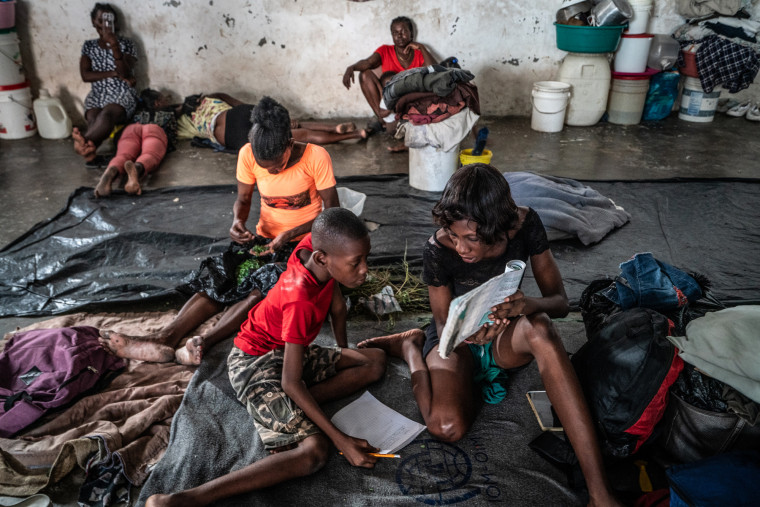
What is happening in Haiti and why?
In the power vacuum that followed the assassination of democratically elected President Jovenel Moïse in 2021, Henry, who was prime minister under Moïse, assumed power, with the support of several nations, including the U.S.
When Haiti failed to hold elections multiple times — Henry said it was due to logistical problems or violence — protests rang out against him. By the time Henry announced last year that elections would be postponed again, to 2025, armed groups that were already active in Port-au-Prince, the capital, dialed up the violence.
Even before Moïse’s assassination, these militias and armed groups existed alongside politicians who used them to do their bidding, including everything from intimidating the opposition to collecting votes . With the dwindling of the country’s elected officials, though, many of these rebel forces have engaged in excessively violent acts, and have taken control of at least 80% of the capital, according to a United Nations estimate.
Those groups, which include paramilitary and former police officers who pose as community leaders, have been responsible for the increase in killings, kidnappings and rapes since Moïse’s death, according to the Uppsala Conflict Data Program at Uppsala University in Sweden. According to a report from the U.N . released in January, more than 8,400 people were killed, injured or kidnapped in 2023, an increase of 122% increase from 2022.
“January and February have been the most violent months in the recent crisis, with thousands of people killed, or injured, or raped,” Beckett said.

Armed groups who had been calling for Henry’s resignation have already attacked airports, police stations, sea ports, the Central Bank and the country’s national soccer stadium. The situation reached critical mass earlier this month when the country’s two main prisons were raided , leading to the escape of about 4,000 prisoners. The beleaguered government called a 72-hour state of emergency, including a night-time curfew — but its authority had evaporated by then.
Aside from human-made catastrophes, Haiti still has not fully recovered from the devastating earthquake in 2010 that killed about 220,000 people and left 1.5 million homeless, many of them living in poorly built and exposed housing. More earthquakes, hurricanes and floods have followed, exacerbating efforts to rebuild infrastructure and a sense of national unity.
Since the earthquake, “there have been groups in Haiti trying to control that reconstruction process and the funding, the billions of dollars coming into the country to rebuild it,” said Beckett, who specializes in the Caribbean, particularly Haiti.
Beckett said that control initially came from politicians and subsequently from armed groups supported by those politicians. Political “parties that controlled the government used the government for corruption to steal that money. We’re seeing the fallout from that.”

Many armed groups have formed in recent years claiming to be community groups carrying out essential work in underprivileged neighborhoods, but they have instead been accused of violence, even murder . One of the two main groups, G-9, is led by a former elite police officer, Jimmy Chérizier — also known as “Barbecue” — who has become the public face of the unrest and claimed credit for various attacks on public institutions. He has openly called for Henry to step down and called his campaign an “armed revolution.”
But caught in the crossfire are the residents of Haiti. In just one week, 15,000 people have been displaced from Port-au-Prince, according to a U.N. estimate. But people have been trying to flee the capital for well over a year, with one woman telling NBC News that she is currently hiding in a church with her three children and another family with eight children. The U.N. said about 160,000 people have left Port-au-Prince because of the swell of violence in the last several months.
Deep poverty and famine are also a serious danger. Gangs have cut off access to the country’s largest port, Autorité Portuaire Nationale, and food could soon become scarce.
Haiti's uncertain future
A new transitional government may dismay the Haitians and their supporters who call for Haitian-led solutions to the crisis.
But the creation of such a government would come after years of democratic disruption and the crumbling of Haiti’s political leadership. The country hasn’t held an election in eight years.
Haitian advocates and scholars like Jemima Pierre, a professor at the University of British Columbia, Vancouver, say foreign intervention, including from the U.S., is partially to blame for Haiti’s turmoil. The U.S. has routinely sent thousands of troops to Haiti , intervened in its government and supported unpopular leaders like Henry.
“What you have over the last 20 years is the consistent dismantling of the Haitian state,” Pierre said. “What intervention means for Haiti, what it has always meant, is death and destruction.”

In fact, the country’s situation was so dire that Henry was forced to travel abroad in the hope of securing a U.N. peacekeeping deal. He went to Kenya, which agreed to send 1,000 troops to coordinate an East African and U.N.-backed alliance to help restore order in Haiti, but the plan is now on hold . Kenya agreed last October to send a U.N.-sanctioned security force to Haiti, but Kenya’s courts decided it was unconstitutional. The result has been Haiti fending for itself.
“A force like Kenya, they don’t speak Kreyòl, they don’t speak French,” Pierre said. “The Kenyan police are known for human rights abuses . So what does it tell us as Haitians that the only thing that you see that we deserve are not schools, not reparations for the cholera the U.N. brought , but more military with the mandate to use all kinds of force on our population? That is unacceptable.”
Henry was forced to announce his planned resignation from Puerto Rico, as threats of violence — and armed groups taking over the airports — have prevented him from returning to his country.
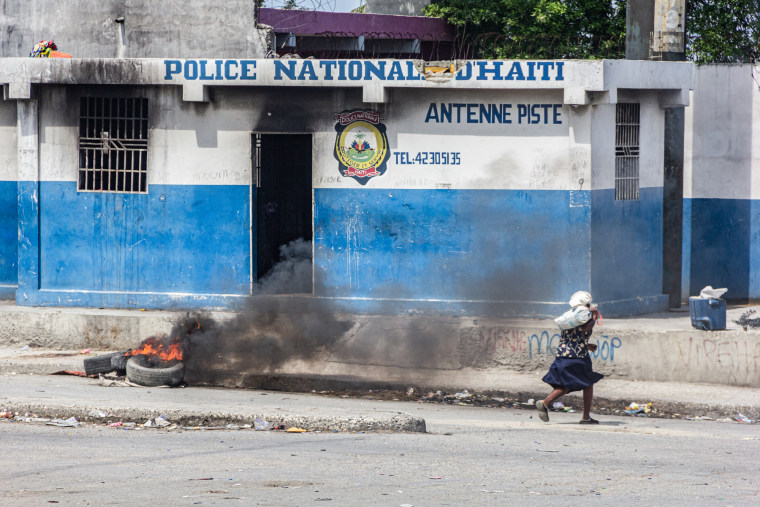
Now that Henry is to stand down, it is far from clear what the armed groups will do or demand next, aside from the right to govern.
“It’s the Haitian people who know what they’re going through. It’s the Haitian people who are going to take destiny into their own hands. Haitian people will choose who will govern them,” Chérizier said recently, according to The Associated Press .
Haitians and their supporters have put forth their own solutions over the years, holding that foreign intervention routinely ignores the voices and desires of Haitians.
In 2021, both Haitian and non-Haitian church leaders, women’s rights groups, lawyers, humanitarian workers, the Voodoo Sector and more created the Commission to Search for a Haitian Solution to the Crisis . The commission has proposed the “ Montana Accord ,” outlining a two-year interim government with oversight committees tasked with restoring order, eradicating corruption and establishing fair elections.
For more from NBC BLK, sign up for our weekly newsletter .
CORRECTION (March 15, 2024, 9:58 a.m. ET): An earlier version of this article misstated which university Jemima Pierre is affiliated with. She is a professor at the University of British Columbia, Vancouver, not the University of California, Los Angeles, (or Columbia University, as an earlier correction misstated).
Patrick Smith is a London-based editor and reporter for NBC News Digital.
Char Adams is a reporter for NBC BLK who writes about race.

IMAGES
COMMENTS
The worst time to visit Tahiti is from mid-December to mid-January. Although most times of year have their advantages and disadvantages, December through January seems to have all disadvantages. December and January are the rainiest months that Tahiti experiences, with average rainfalls of 12 inches or 317 mm. On top of this, The holiday season ...
The best time to visit Tahiti is between May and October. Although the temperatures are balmy year-round, Tahiti's winter season enjoys less humidity. Tahiti really…
As such, tourist density becomes quite heavy during July. This will be the priciest, most busy month to visit. It is best advised to avoid this month if you can. Especially if you're planning a special event of any kind or are looking for a quiet vacation. Average Temperature (high/low): 82.9F/69.4F.
The annual average temperature in Tahiti is 80 degrees Fahrenheit, or 27 degrees Celsius. Closer to the equator, the Tuamotu Atolls and the Marquesas Islands have slightly warmer temperatures than Tahiti, Moorea and Bora Bora. During the high season, or winter, temperatures range from 70-82 degrees Fahrenheit, while in the low season, summer ...
These factors make May time of the year a good time to visit Tahiti if you want to avoid summer crowds from those living in the northern hemisphere. Average Temperature (high/low): 82°F / 69°F or 28°C / 21°C. Average # of Rainy Days: 5 rainy days. Recommendations: Begin looking for flights well in advance!
What is the best time to visit Tahiti? The Queen Island of French Polynesia can be visited at any time of the year. Its tropical climate guarantees warm temperatures between 25 and 32°C and the water temperature remains constant. Tahiti has a dry season and a wet season. Depending on the period, the price of a trip to Tahiti may decrease or ...
Winter in Tahiti is from June through September, and this is one of the best time frames to book a trip. August usually gets the least rainy days, making it one of the most enjoyable months to visit. The winter months can be the most comfortable in Tahiti because you won't have to deal with the humidity.
First timers: On their virgin visit to French Polynesia, travelers typically stay for seven to 10 days and stick with a circuit of three islands: Tahiti, where you may have to stay overnight upon arrival or prior to departure, depending on flight times; Moorea, a lush, emerald-hued island located just a short flight or ferry ride away from Papeete; and Bora Bora, the crowning glory of the ...
Tahiti has a tropical climate with high temperatures and humidity year-round, but the weather can vary depending on the time of year. The dry season, which runs from May to October, is generally considered the best time to visit Tahiti, as it is cooler and less humid, and there is less rain. During this time, the average temperature ranges from ...
The best time to visit Tahiti is between May and October. Although the temperatures are balmy year-round, Tahiti's winter season enjoys less humidity. Tahiti really only experiences two distinct ...
Balm, dry, and less humid period between May and October is considered to be the best time to visit Tahiti. Austral winter is known as a peak tourist season and lures travellers from all over the world to catch pearl harvest season, watch sharks, and do some diving and surfing. In July, you can also enjoy a few weeks of the Heiva celebrations ...
Once completed a receipt with an ETIS number will be issued by email. Print this and bring it to the airport. Obtain a negative RT-PCR COVID-19 test within three days of your international flight to Tahiti (any RT-PCR test listed on this FDA site is allowed). Print your negative results and bring them to the airport.
Best Time to Visit Tahiti for Honeymoons: May to October. Best Time for Diving & Snorkeling: April, May, June, September, and October. Best Time for Outdoor Activities: June to September. Best Time for Saving Money: Avoid the peak seasons (July, August, and the Christmas/New Year period) when the islands are bursting.
Best time to visit Tahiti to enjoy the beach. Tahiti's dry season runs through May to October with average daytime temperatures of roughly 25 degrees Celsius. The afternoon and evenings are normally cooler. Planning your visit to Tahiti around this time despite the warm temperature and the high humidity will make you enjoy the cooler crystal ...
Tahiti. French Polynesia, Australia & Pacific. What Tahiti lacks in wide white-sand beaches, it makes up for in waterfall-laden, shadowy mountains, unpretentiously beautiful black-sand beaches, sheltered blue lagoons and a distinctly Polynesian, modern buzz. This is the heart of the islands, where the cultures from all the archipelagos are ...
To choose the best time to come to French Polynesia, the most important thing to consider, in my opinion, is the rainy season. As in all the tropics, there is a particular rainy season. Hurricane Oli passed through in 2010 near Tahiti. In French Polynesia, the months from November to March in general, have the most rain.
The best time to visit Tahiti is during the season of the 'Million Rainbows' from November to April when temperatures are in the high 20s and there is little chance of rain. This is the peak season and can bring higher prices, however it is the ideal time to bask on the beach, and explore the island's sights and activities.
The best time to visit Tahiti is the dry season, between April and October. The humidity is lower during these months, and skies are generally clear. Yet there isn't really a bad time to visit; temperatures are fairly steady year-round, with the annual average a balmy 80°F (26.8°C). The water temperature also remains fairly constant ...
Best Time To Visit Tahiti. Tahiti is the biggest island in French Polynesia and it is often overlooked thanks to its idyllic neighboring islands. But don't be fooled; Tahiti is one of the most visually beautiful islands in the world.
The best time to visit Tahiti is during the island's winter months of May through October, due to the island's position in the Southern Hemisphere. The winter months coincide with the dry season and boast cooler temperatures than summer. Although also falling within Tahiti's peak season, traveling during the earlier or later months of this ...
The best time to visit Tahiti is between May and October, the island's dry season, when the weather is perfect for enjoying the beach and there is little rain. Your ideal vacation dates will change depending on your travel preferences and expectations, but the dry season remains the best time to visit Tahiti for great weather and to escape ...
Ultimately, there is no ideal time to visit Tahiti. It all depends on your vacation preferences. If you are looking to explore culture, cuisine and traditions, any time period will do. If you are looking for a particular activity, be sure to visit Tahiti during the ideal season. But whatever season you choose, you won't be disappointed with ...
Worst Time to Visit . If sunny weather is your top priority, you'll probably name the rainiest month — January — as the worst time to visit Bora Bora. More than 12 inches of rain typically ...
Yes, Tahiti is an island in the South Pacific. It is part of the French Polynesian islands and is located south of the equator. Tahiti is the largest island in French Polynesia. It is part of the ...
By the time Henry announced last year that elections would be postponed again, to 2025, armed groups that were already active in Port-au-Prince, the capital, dialed up the violence.